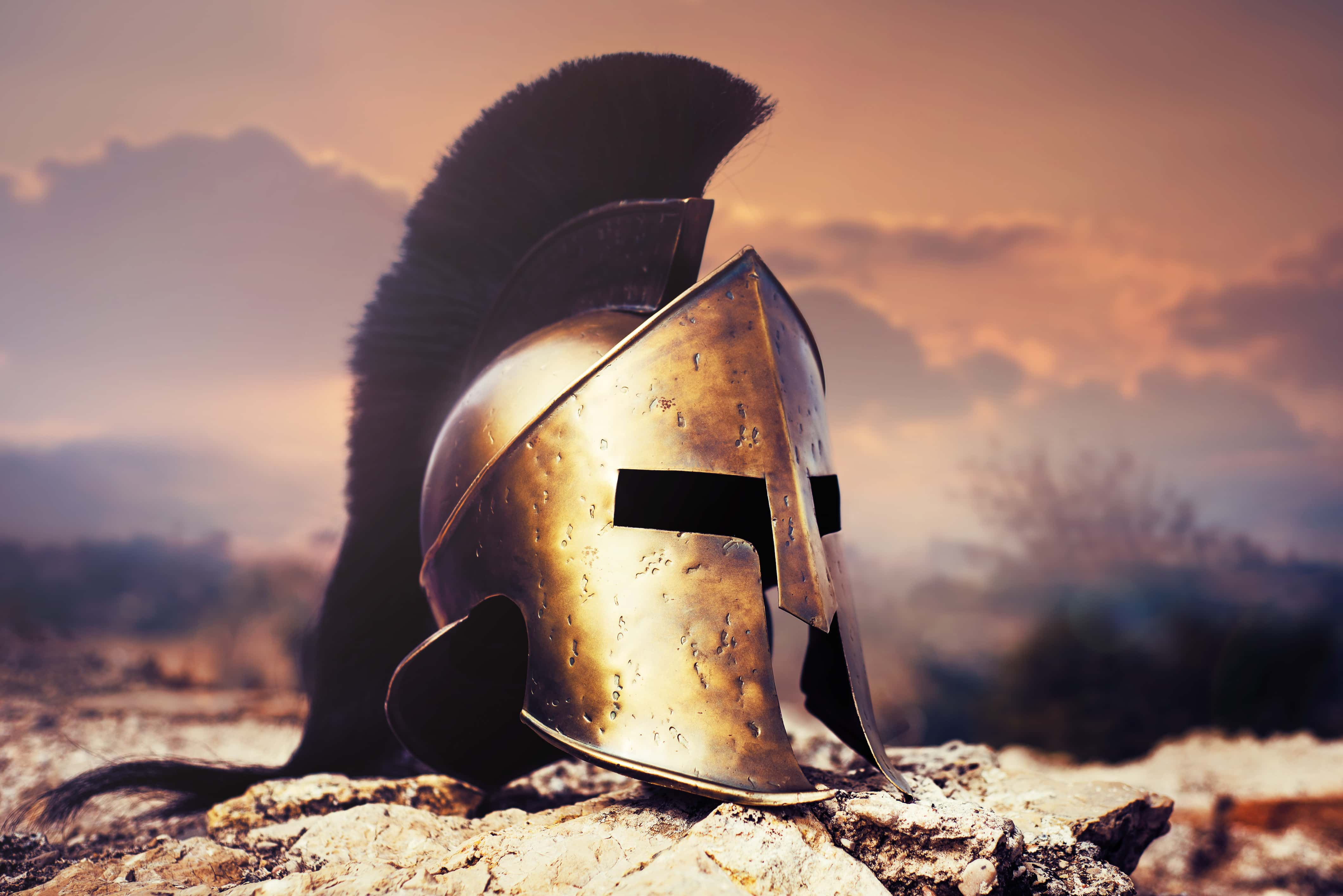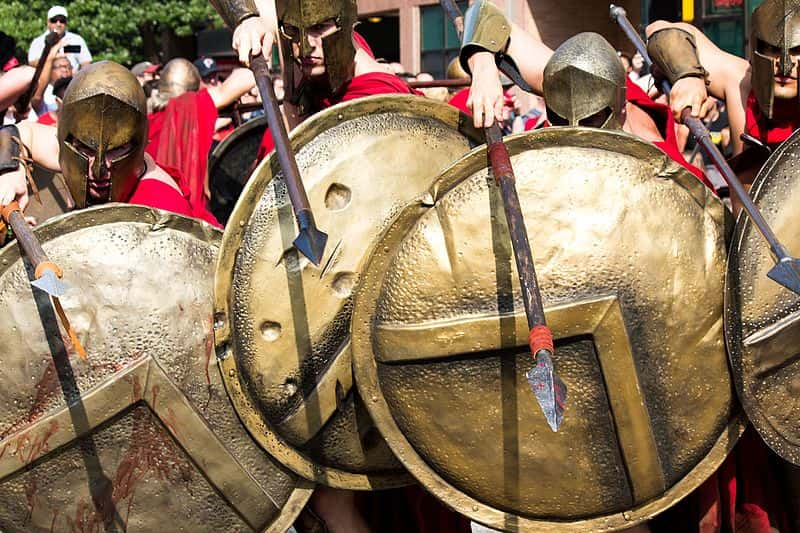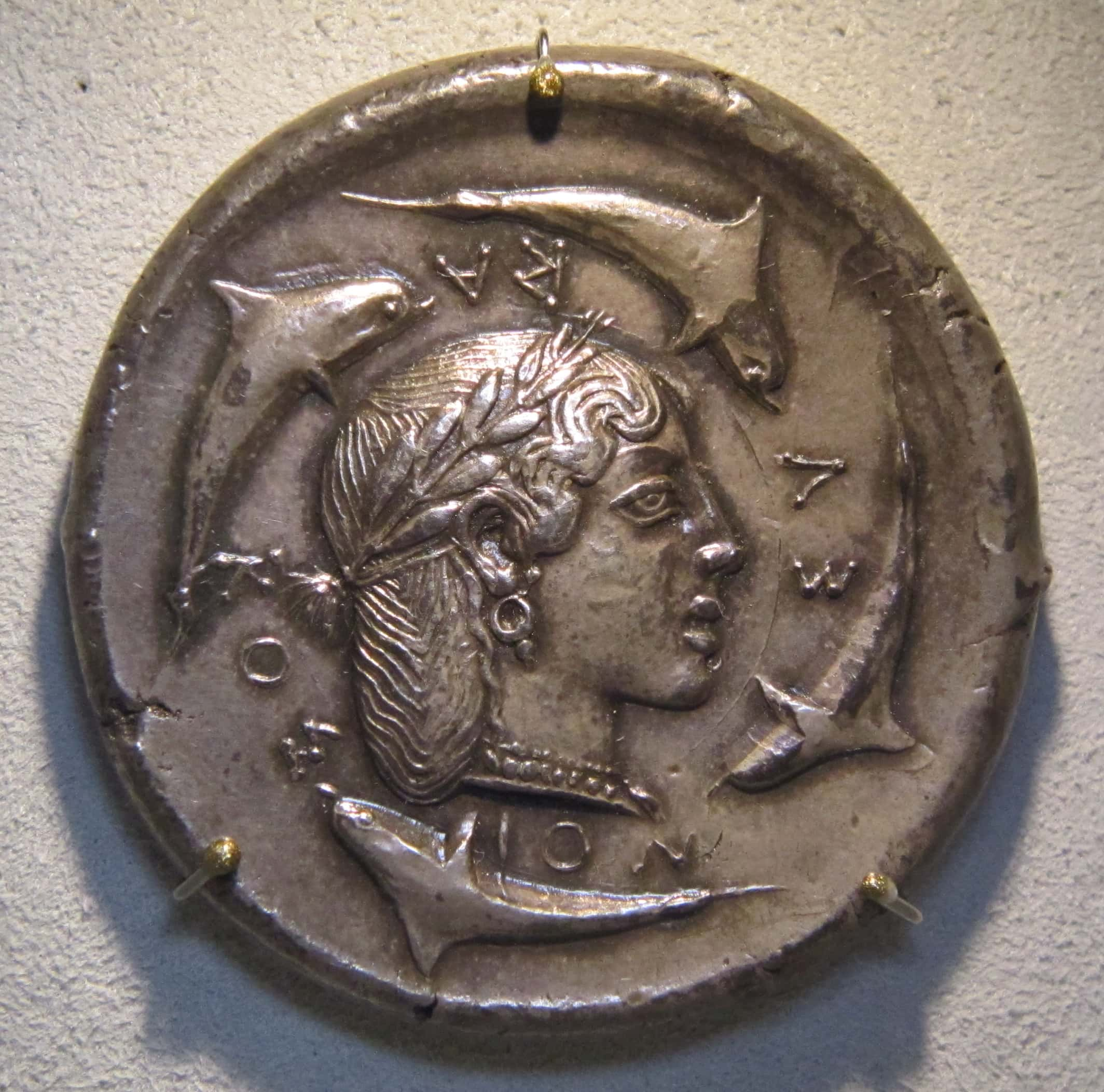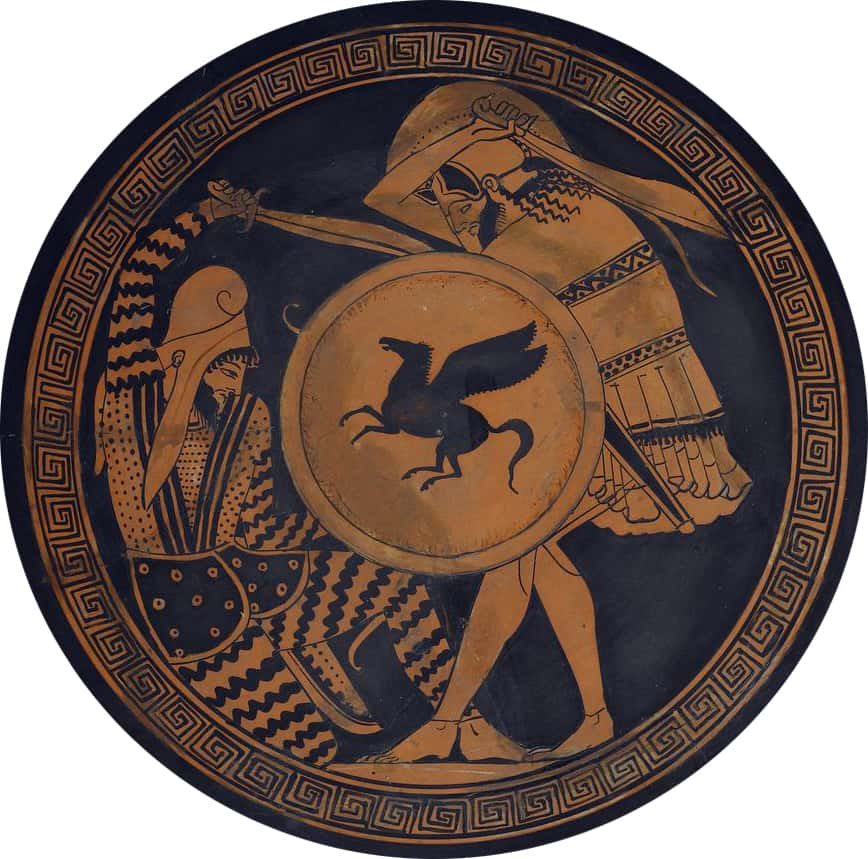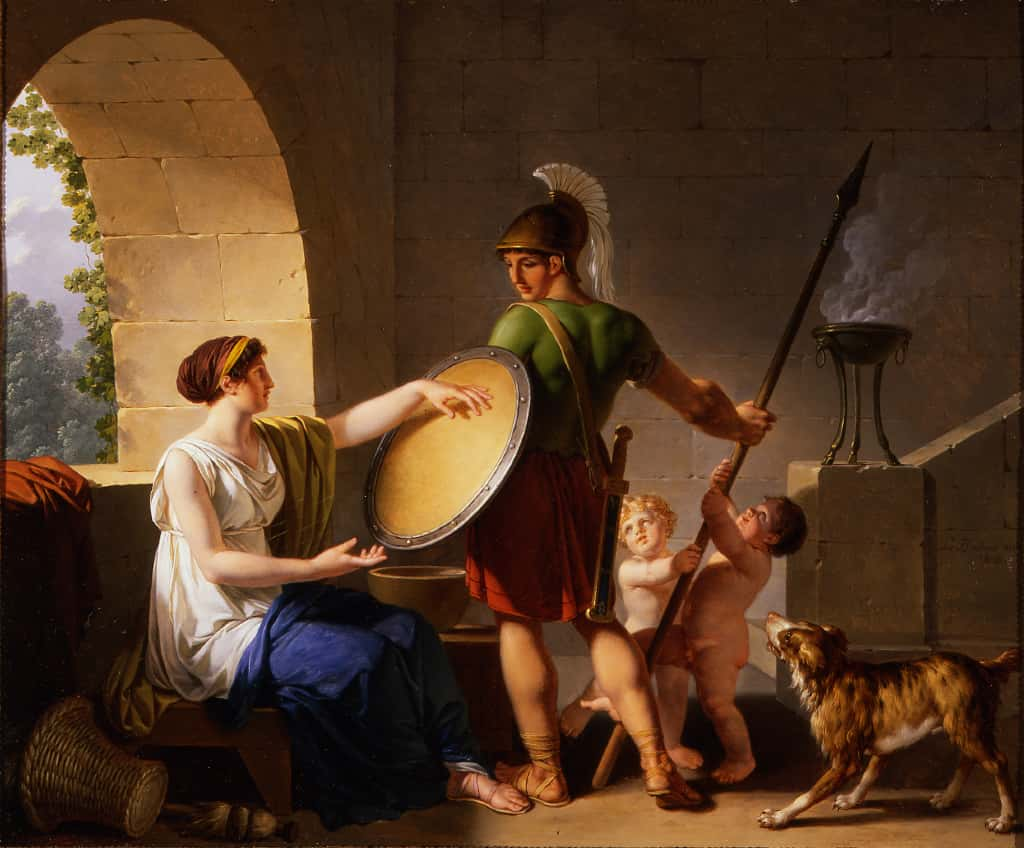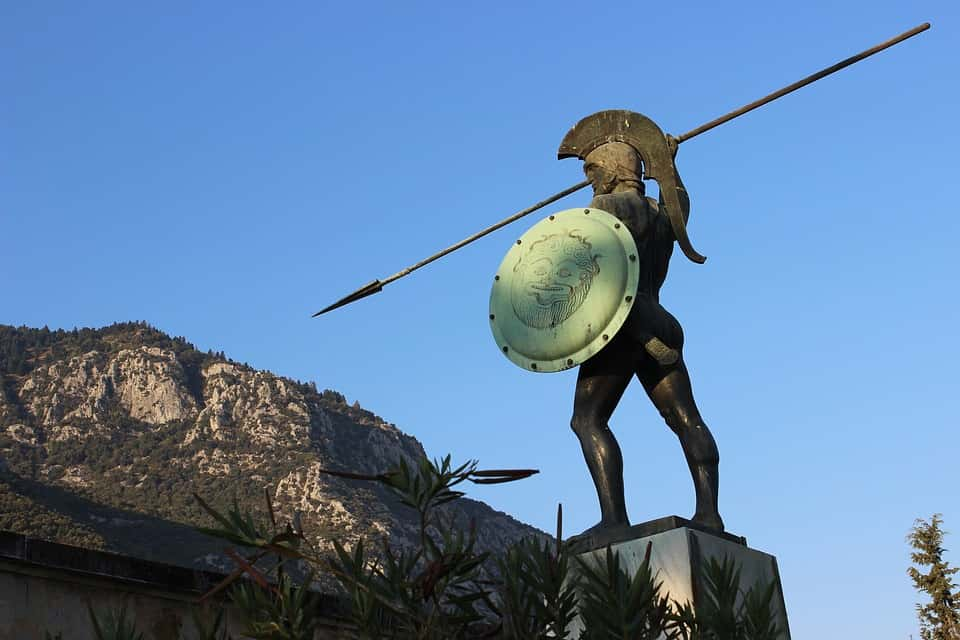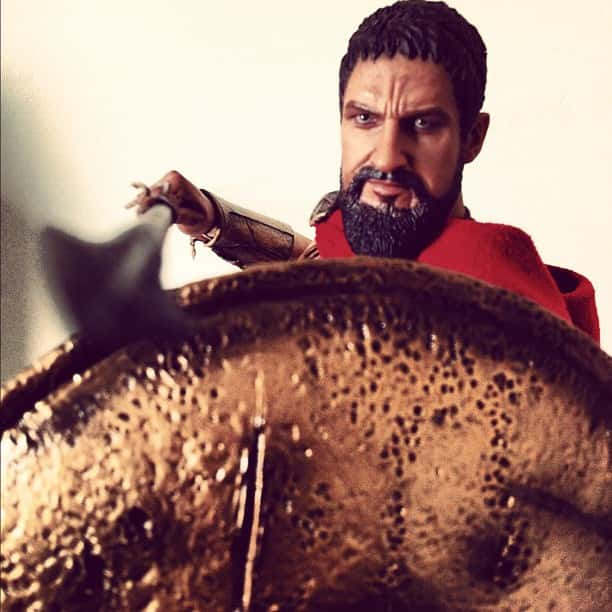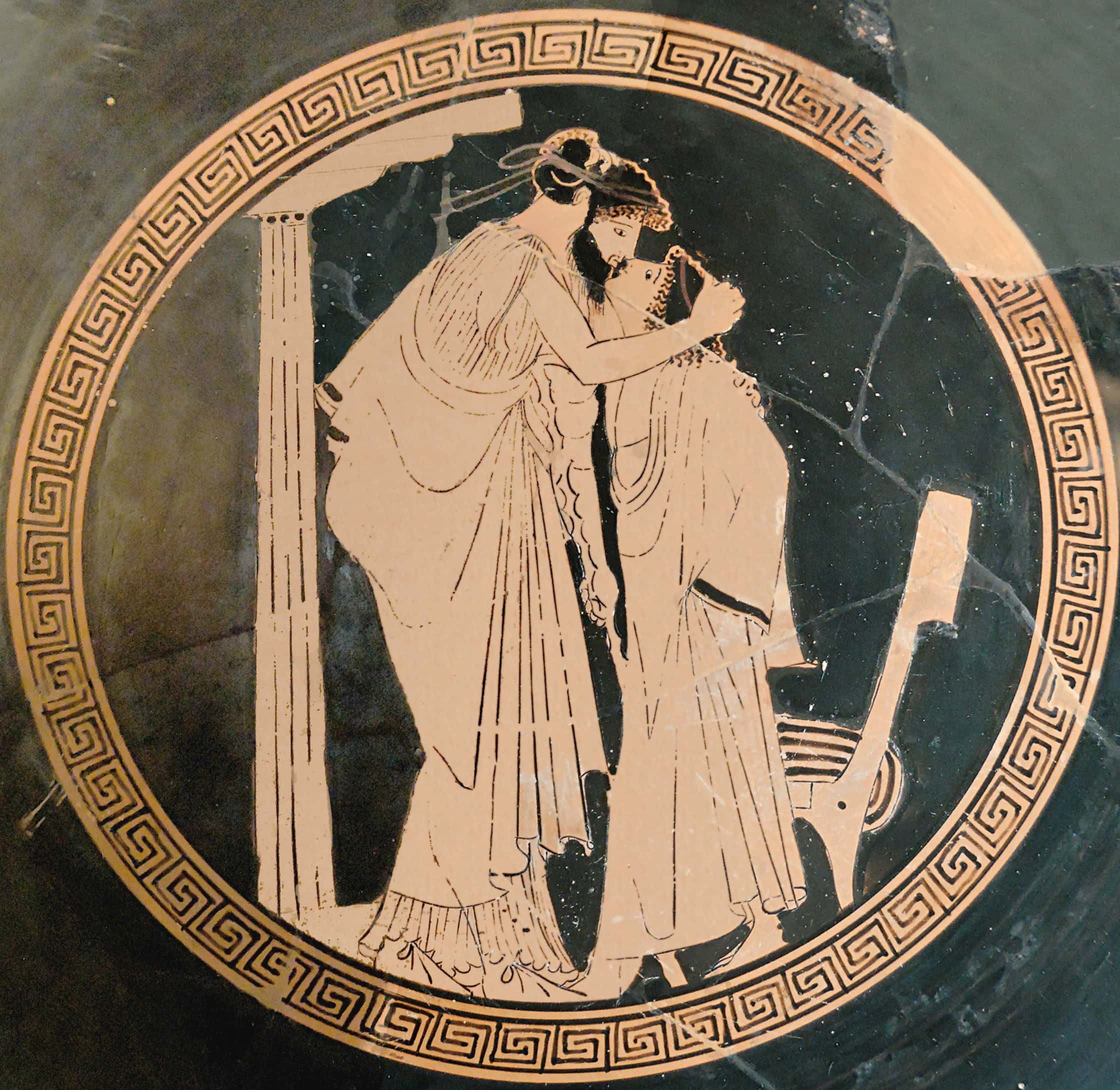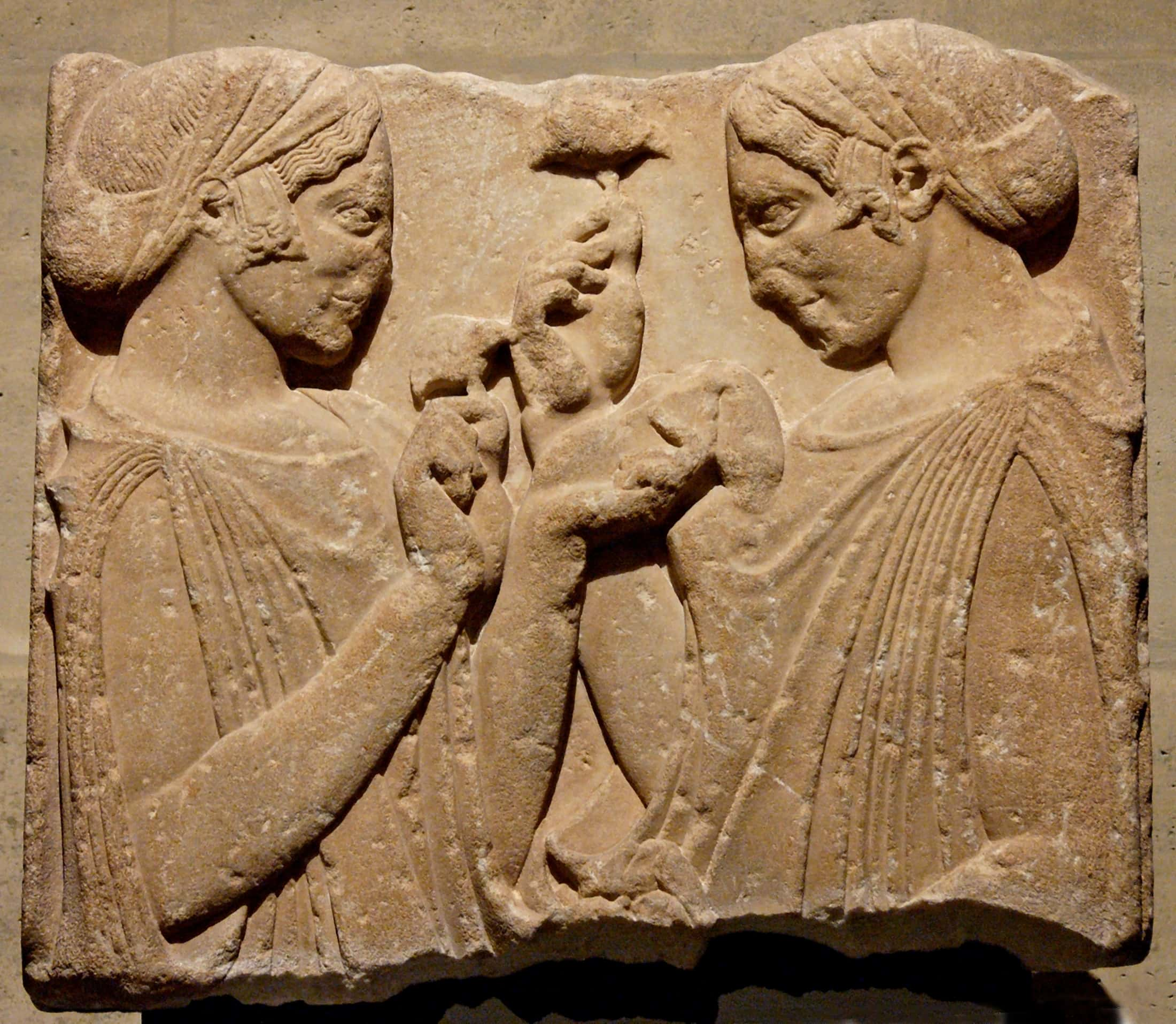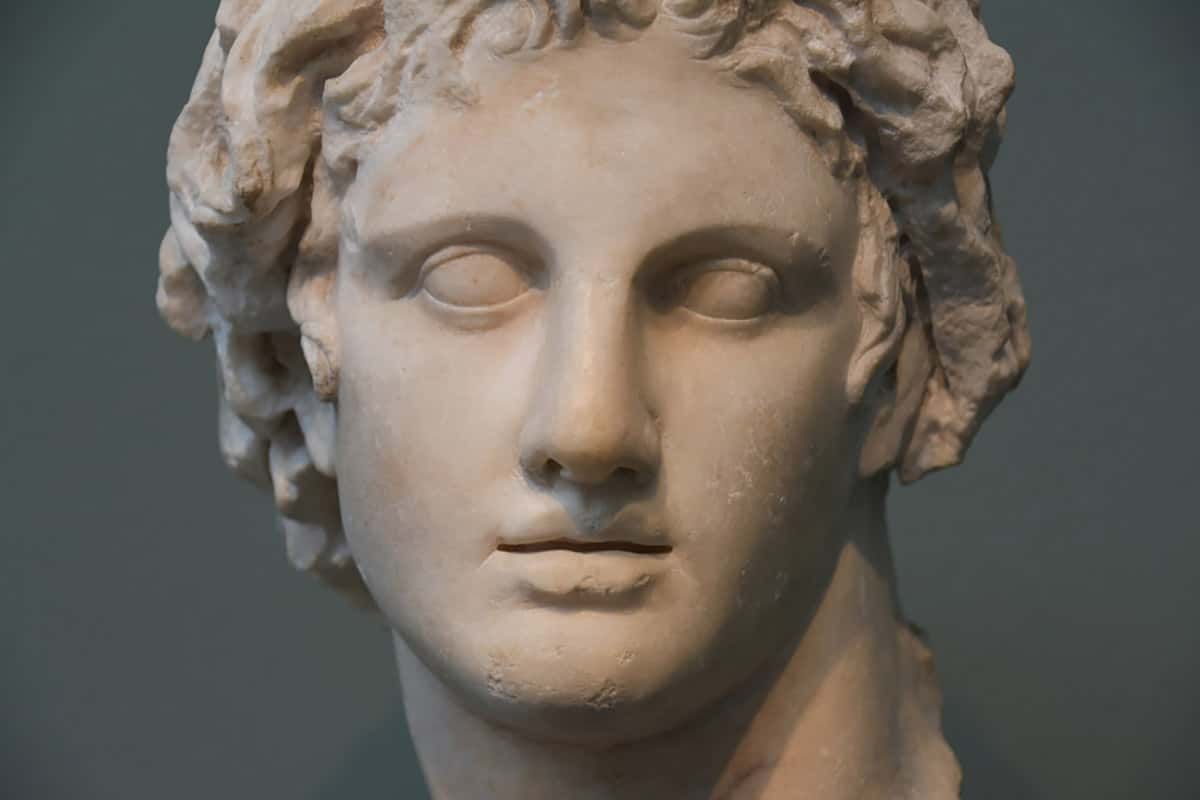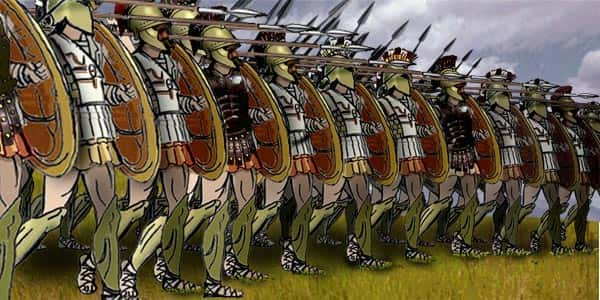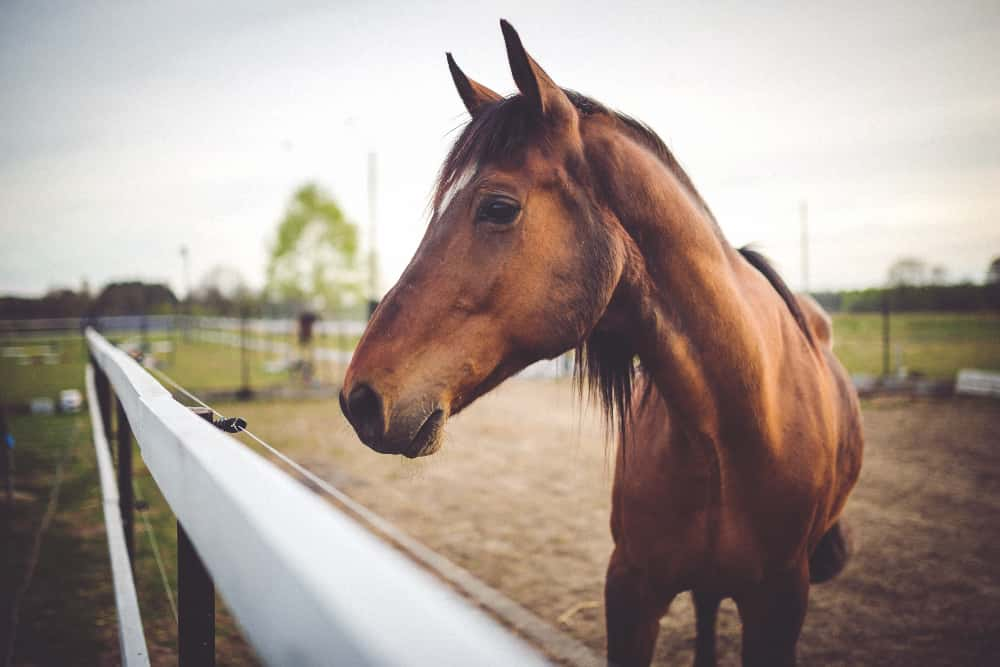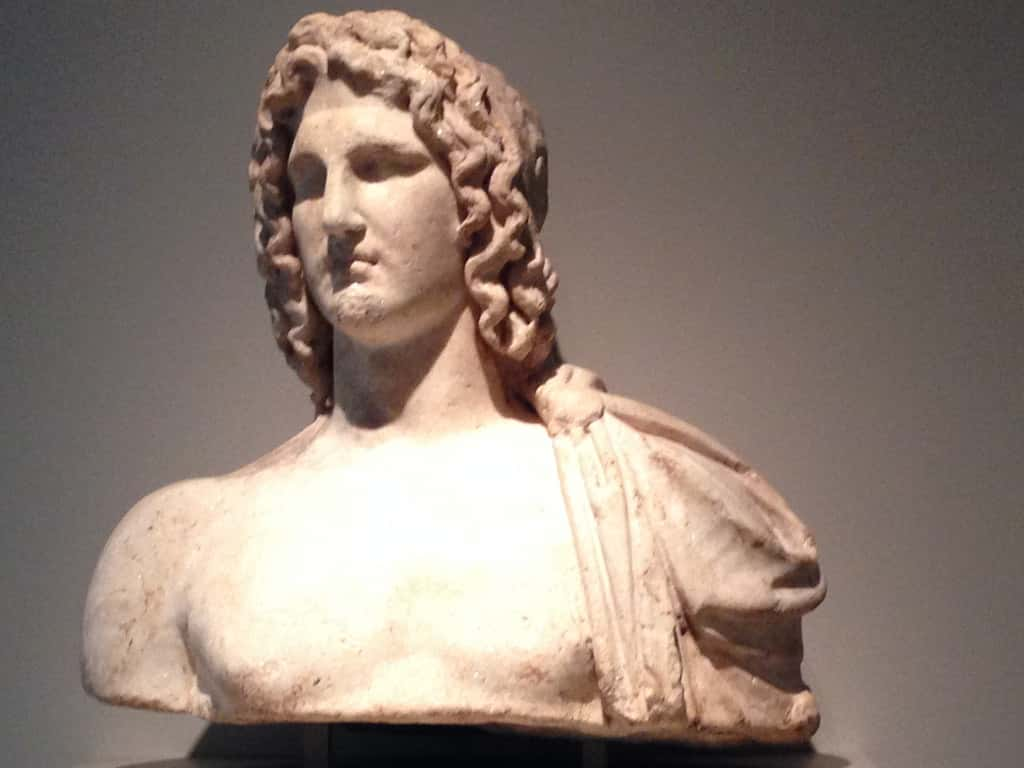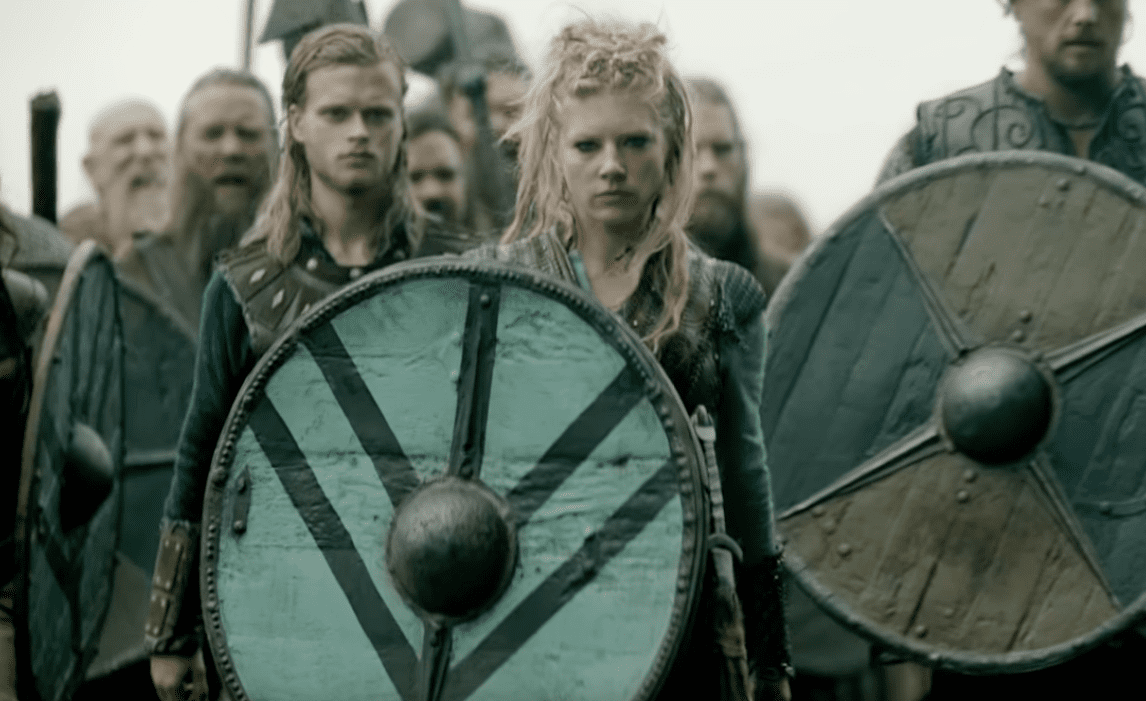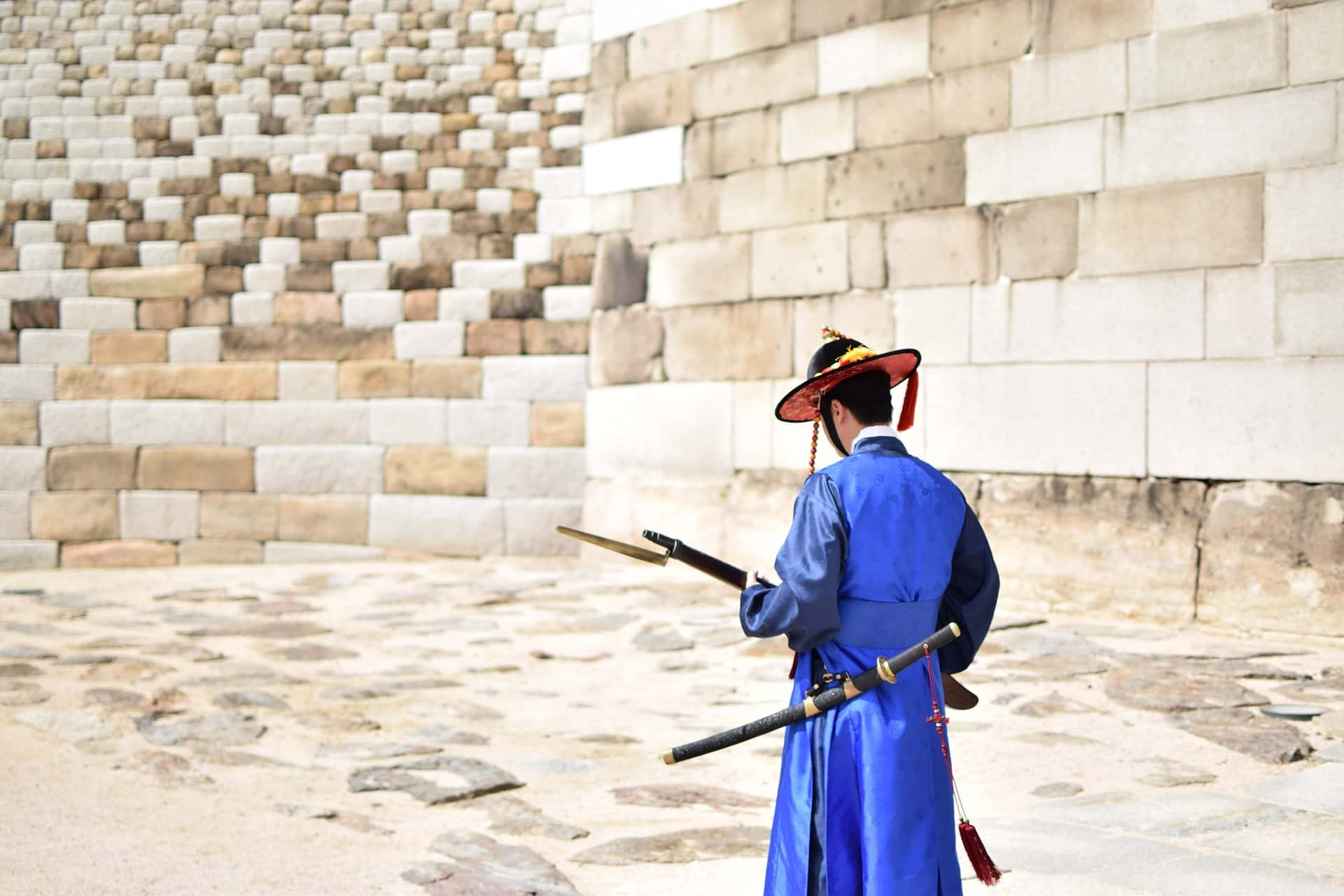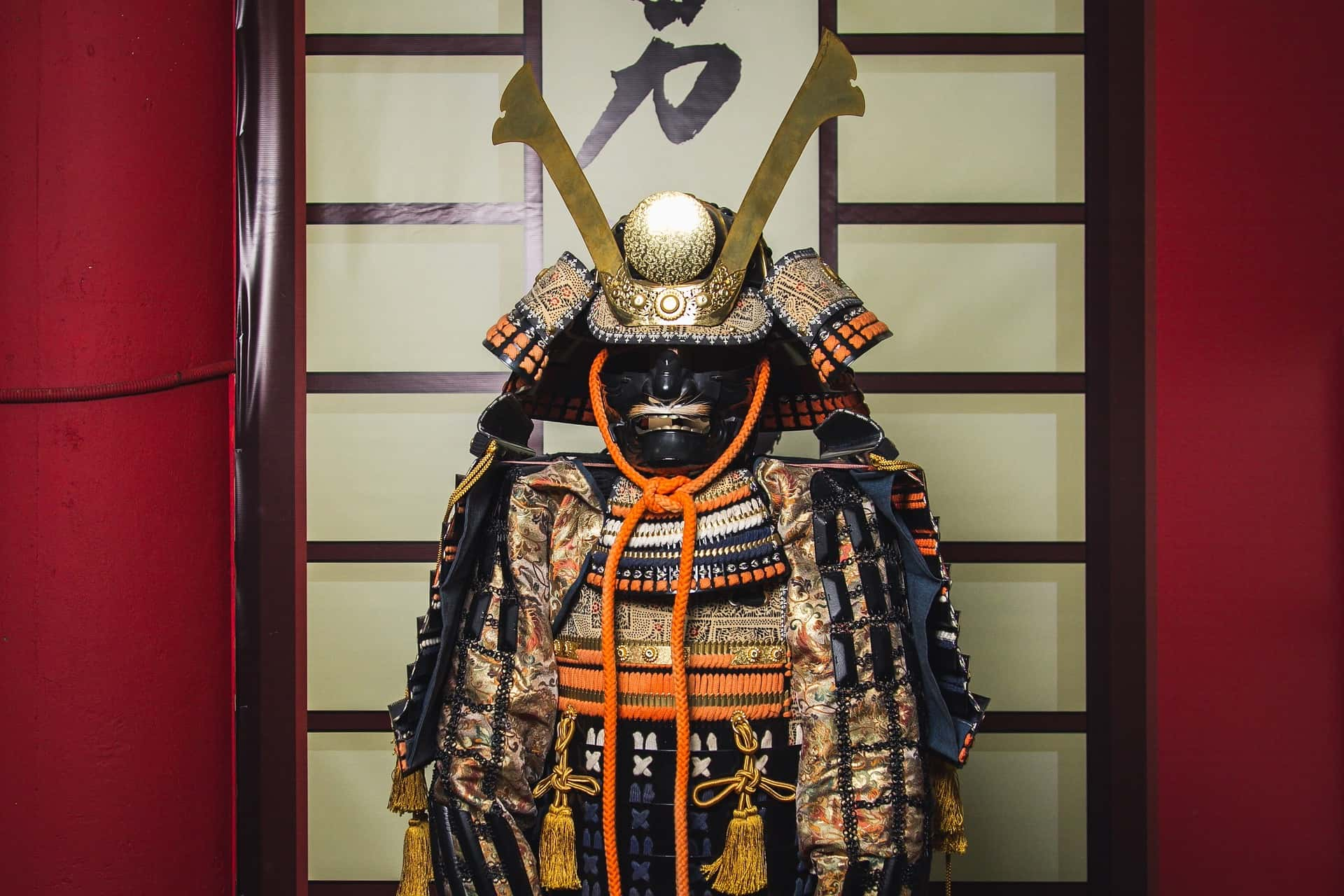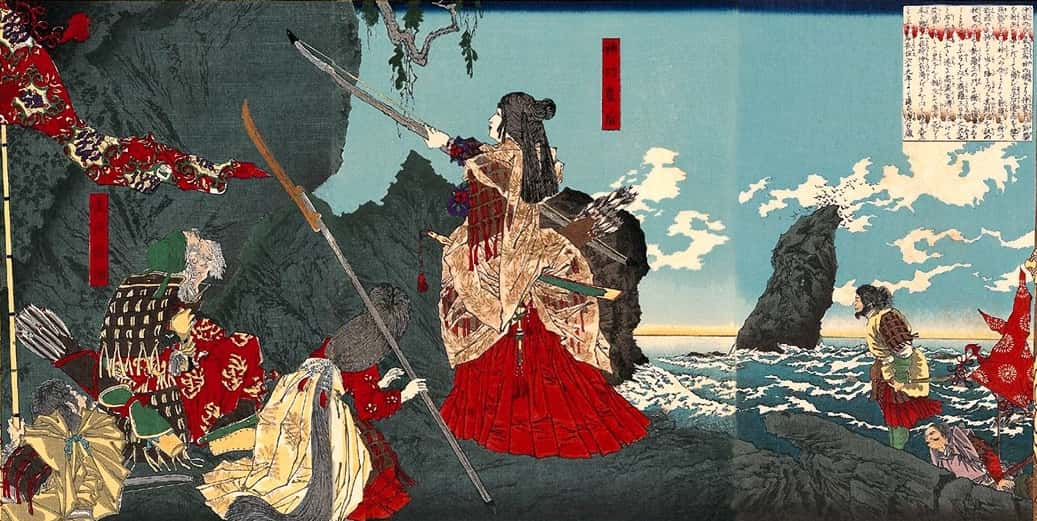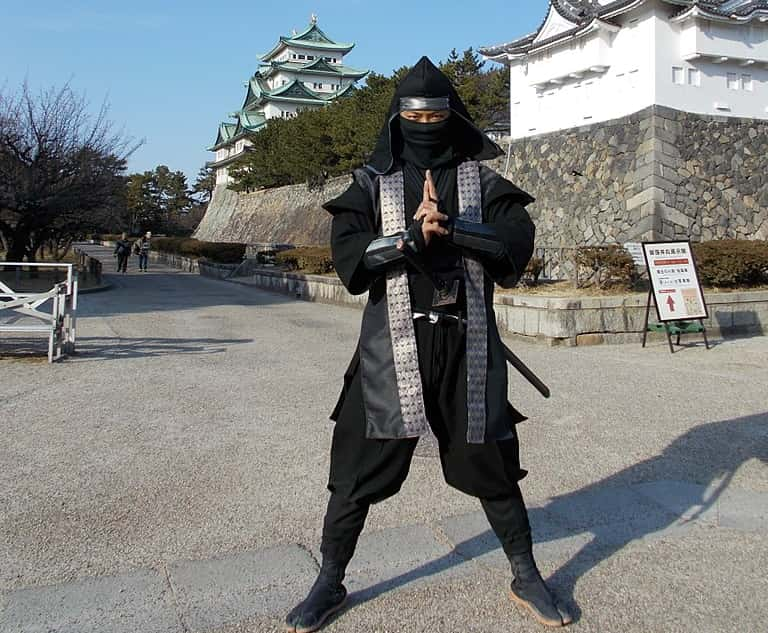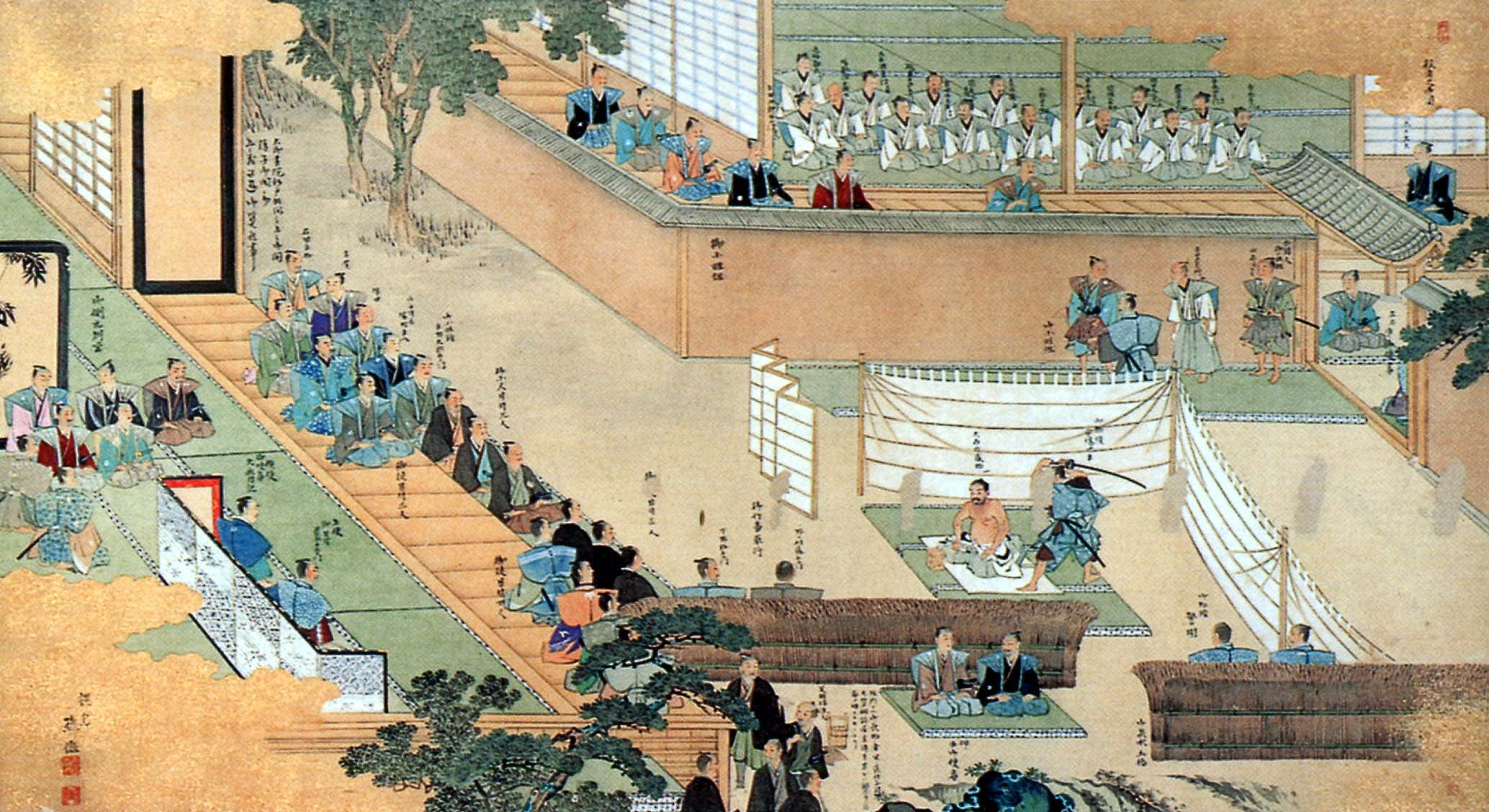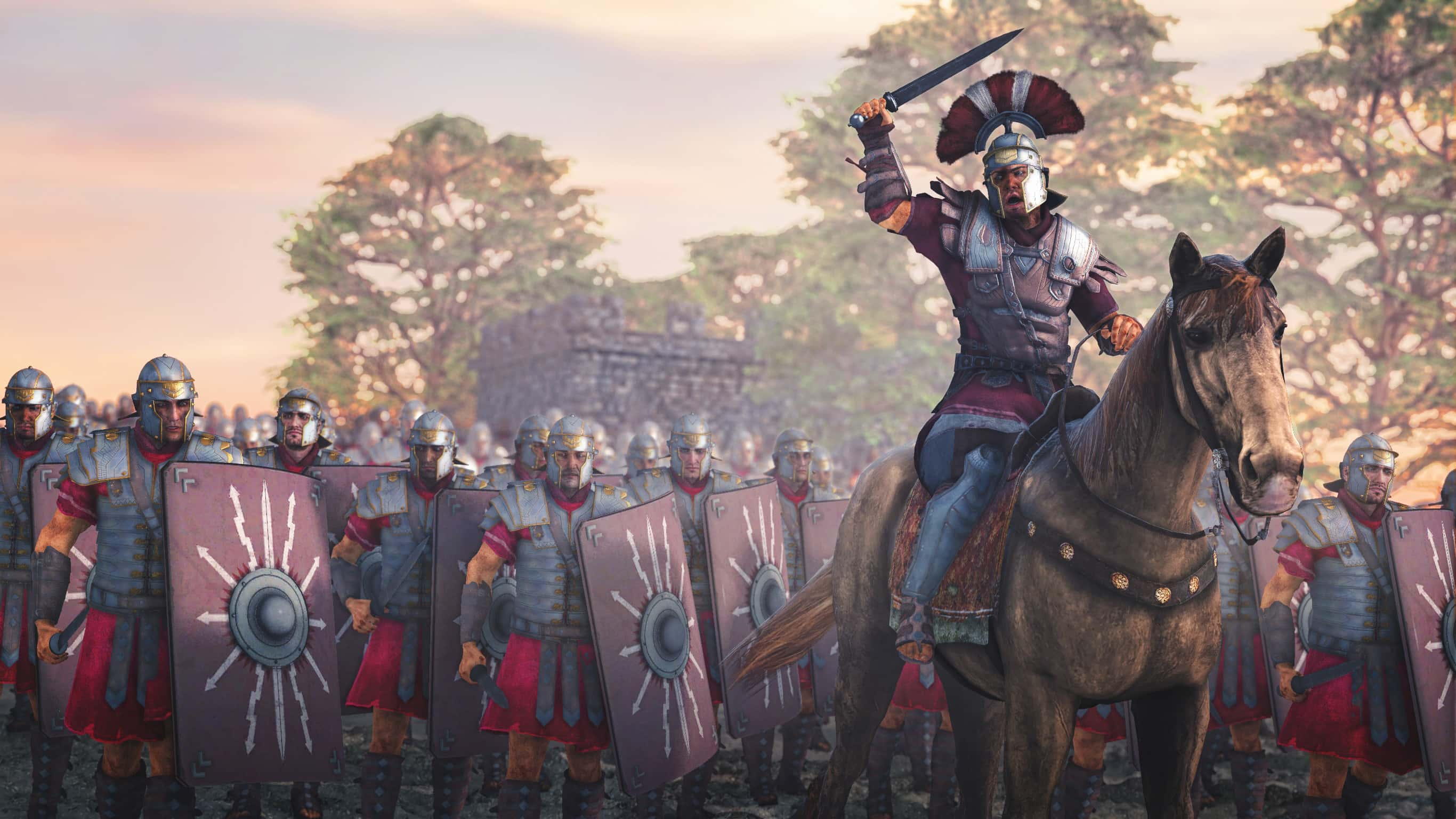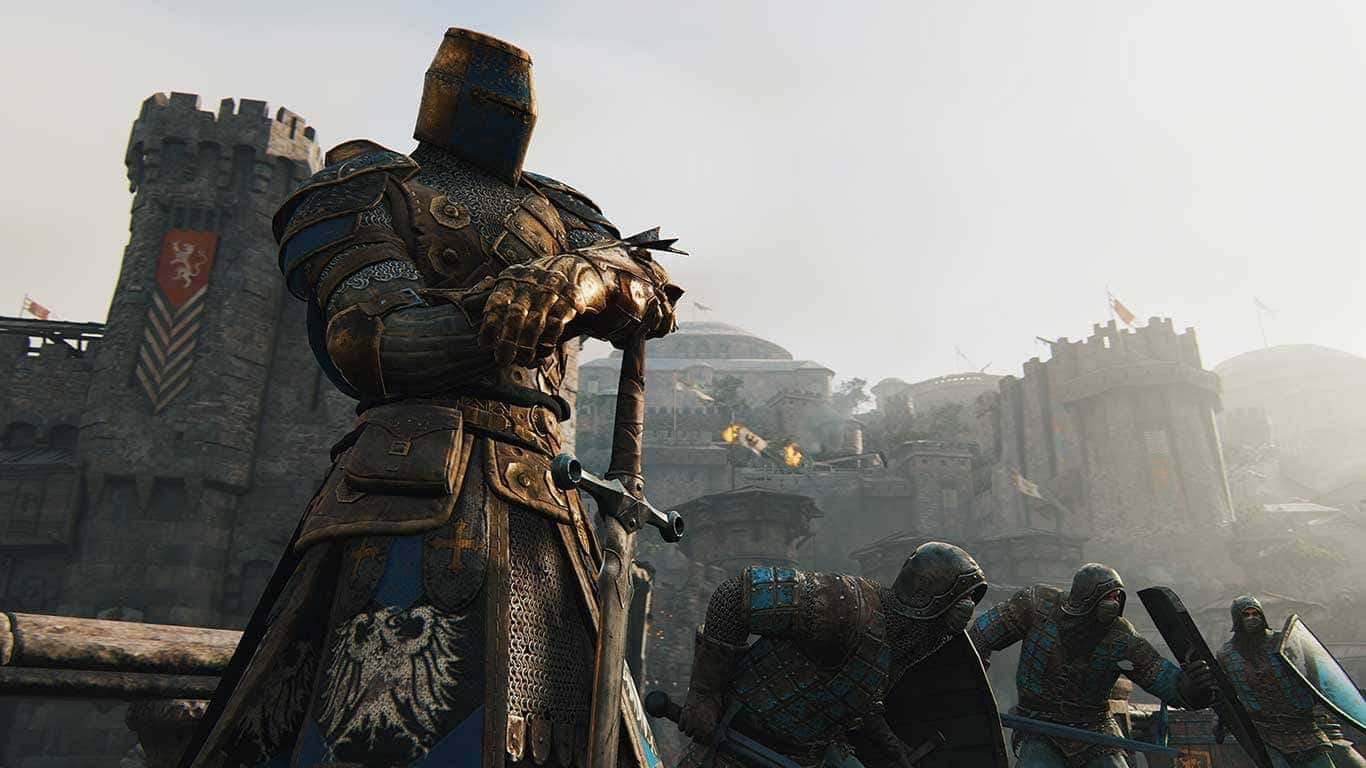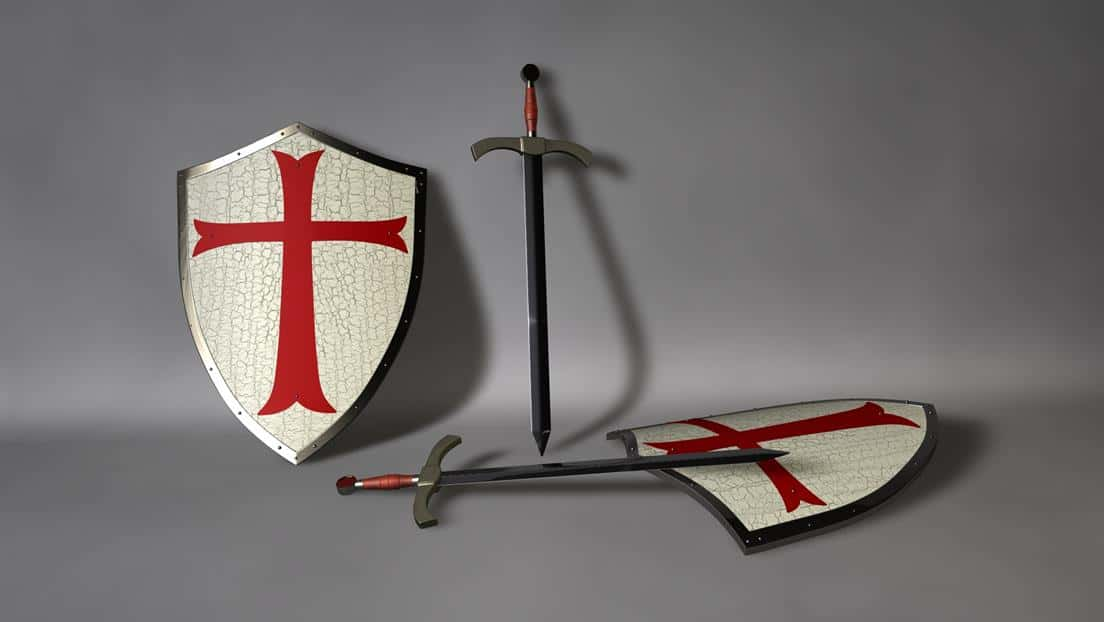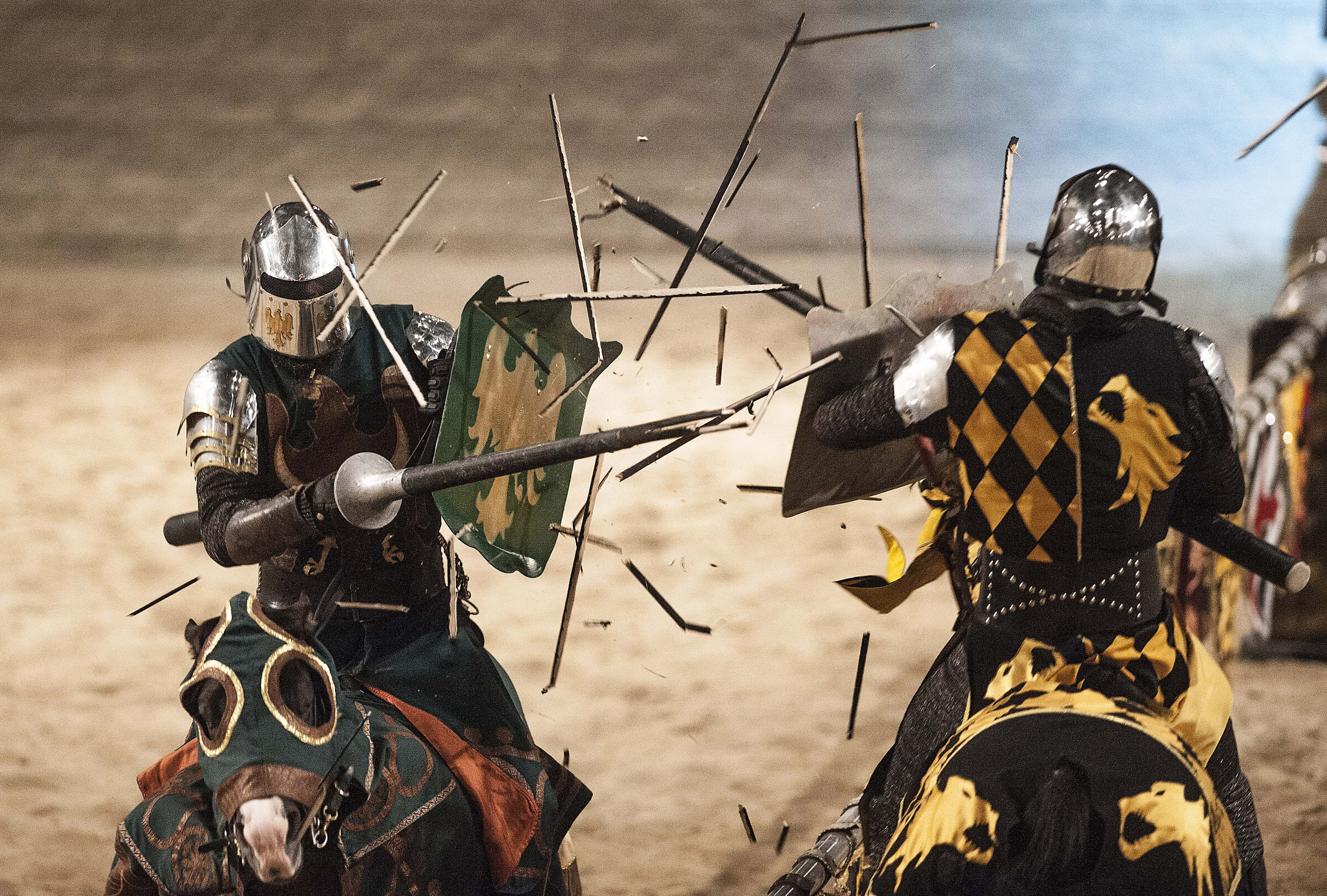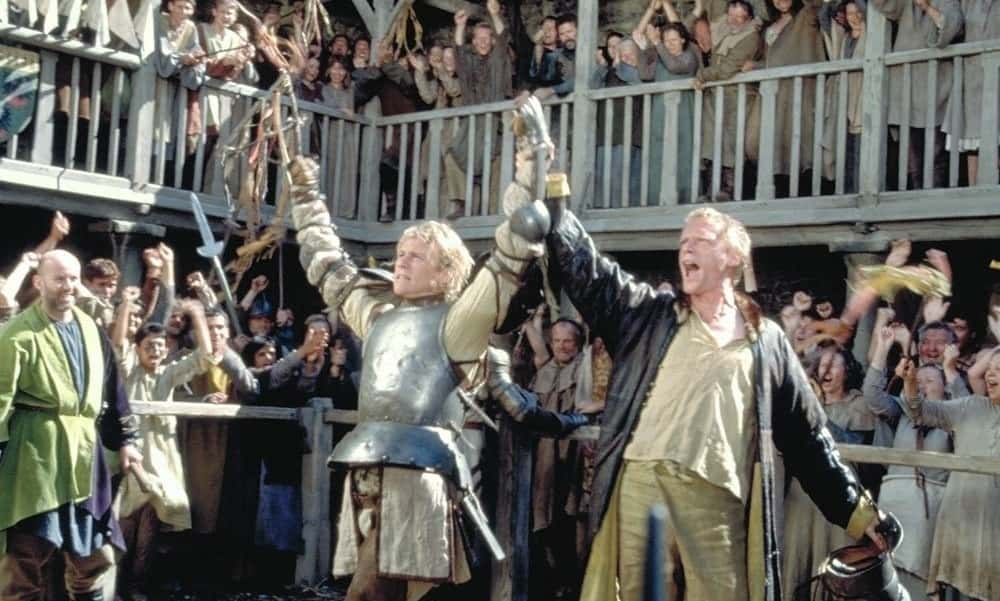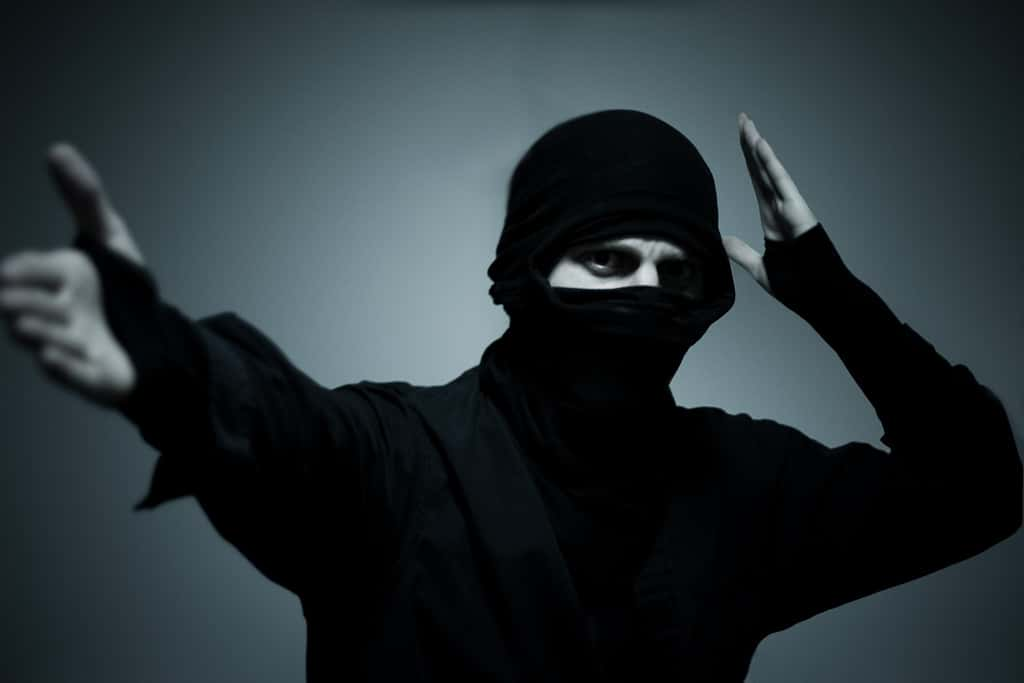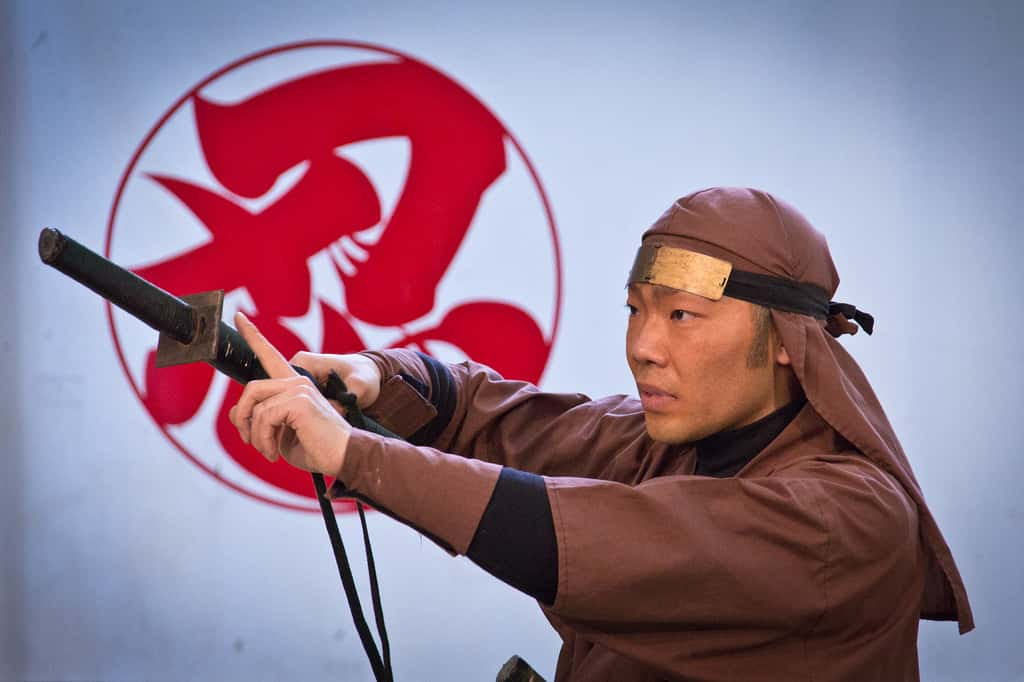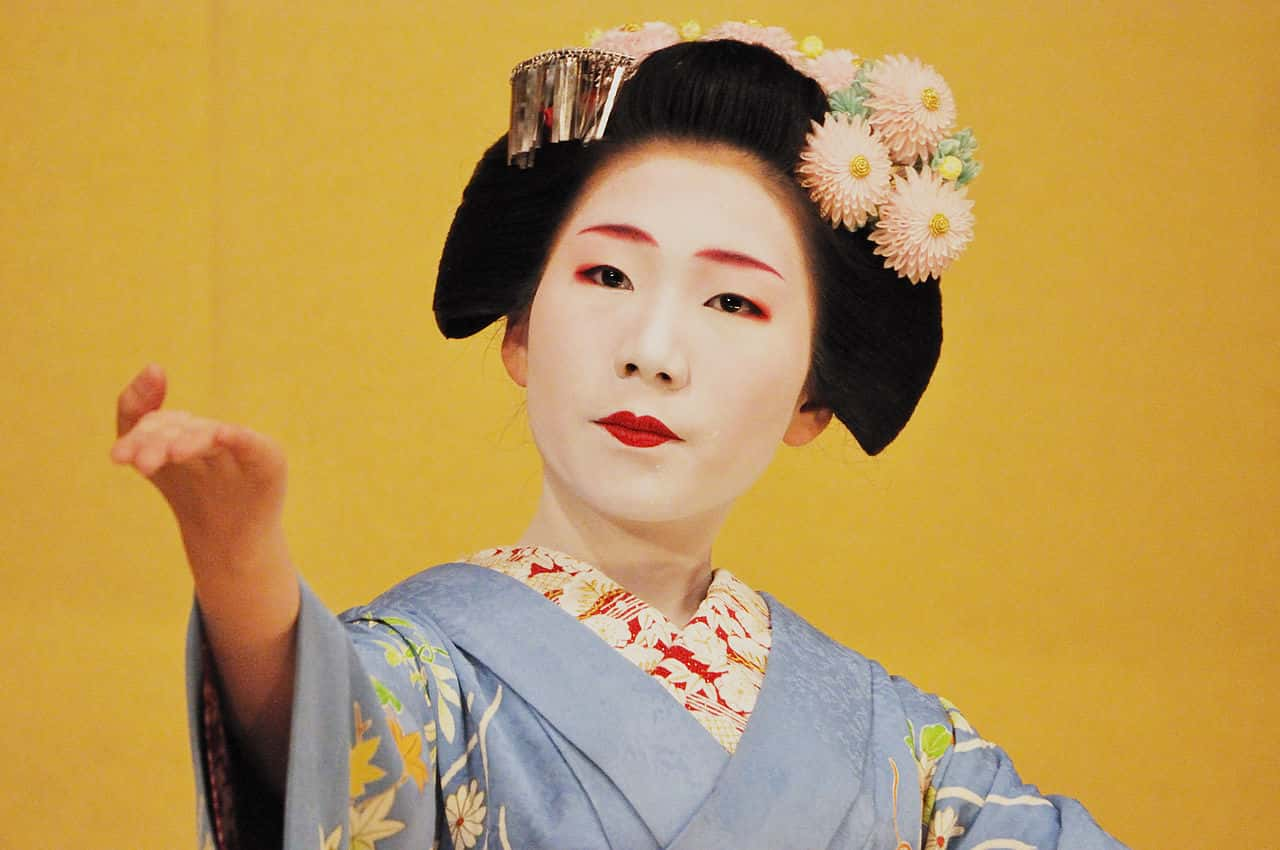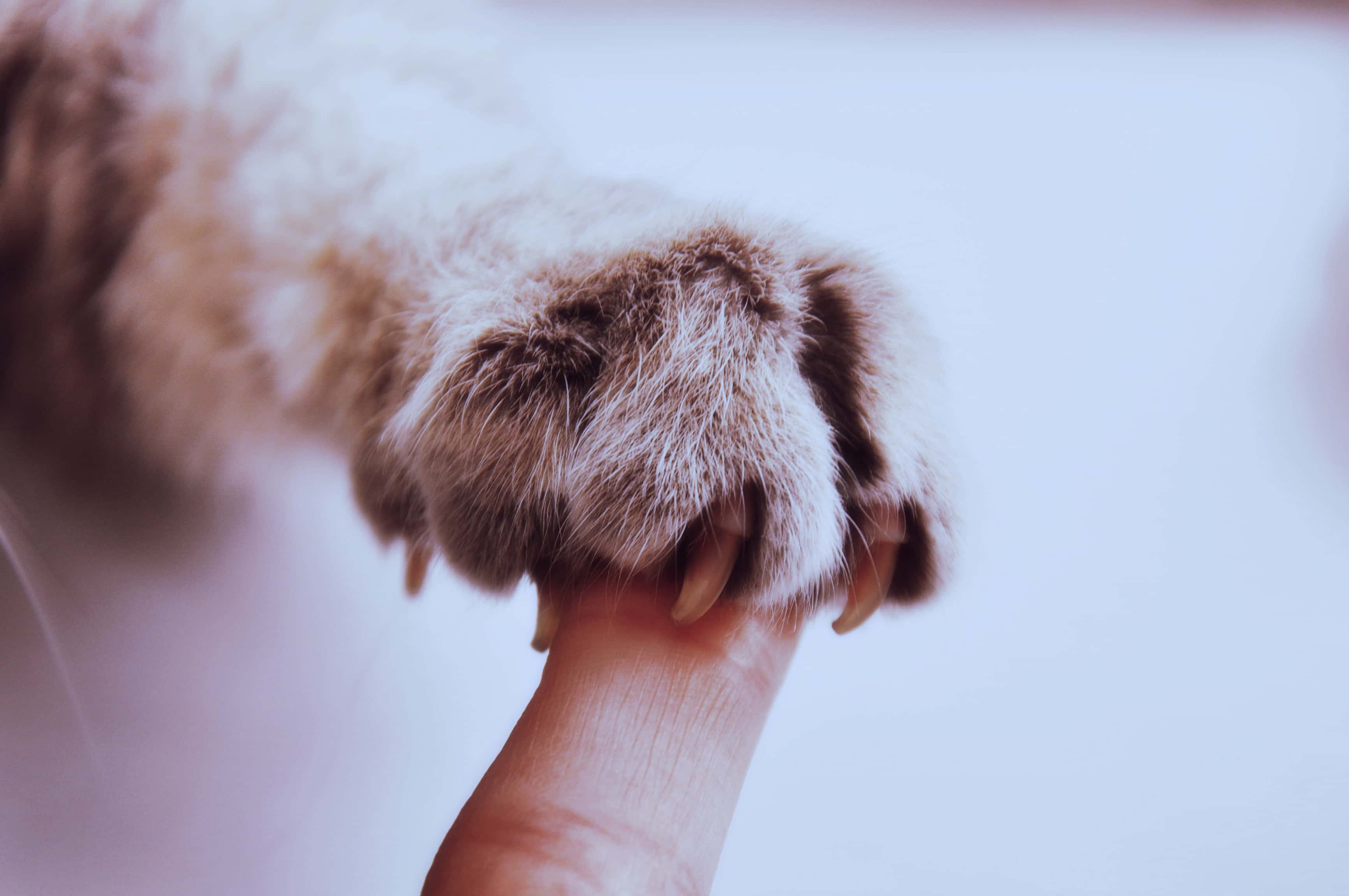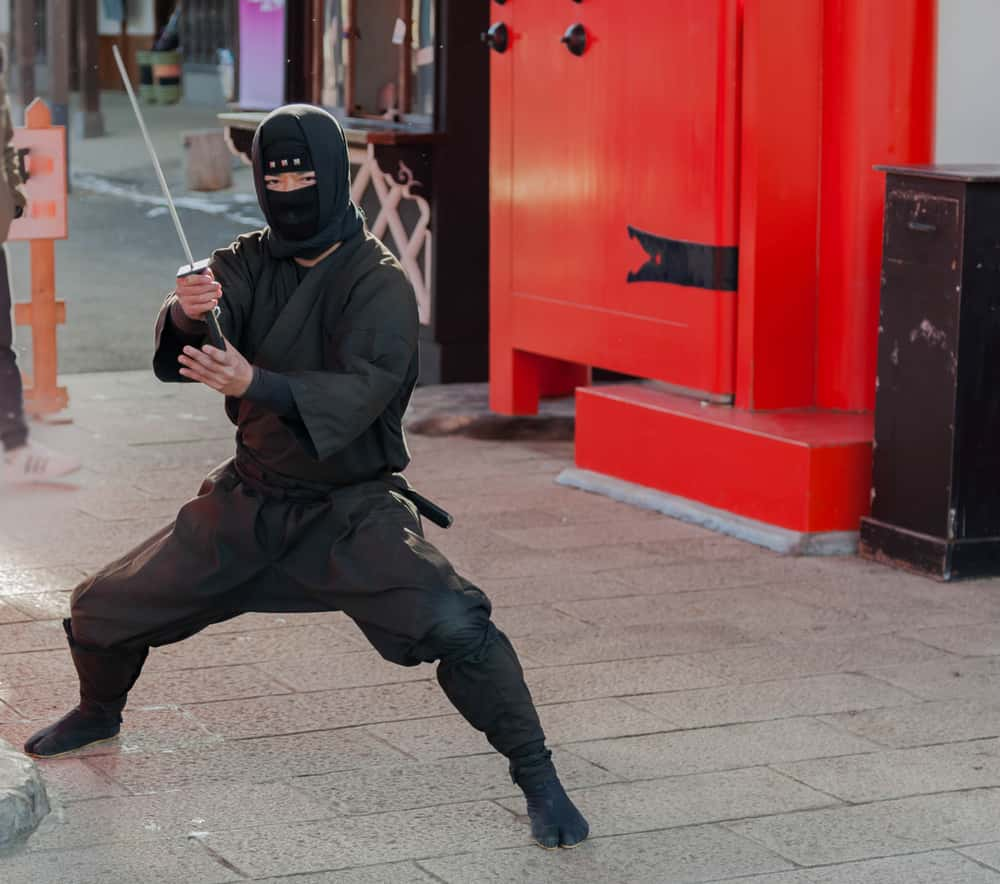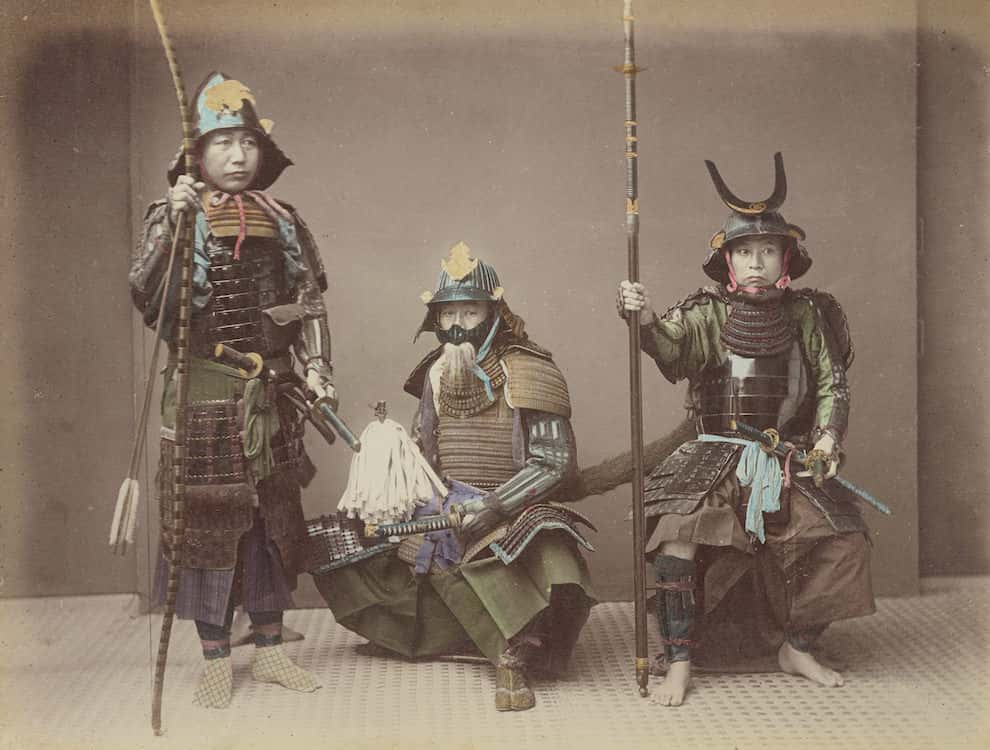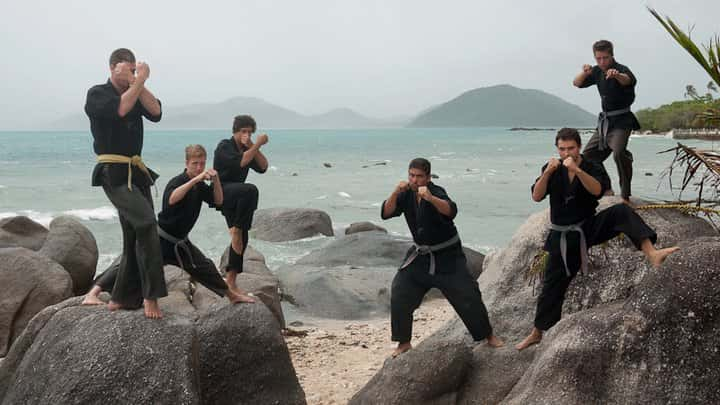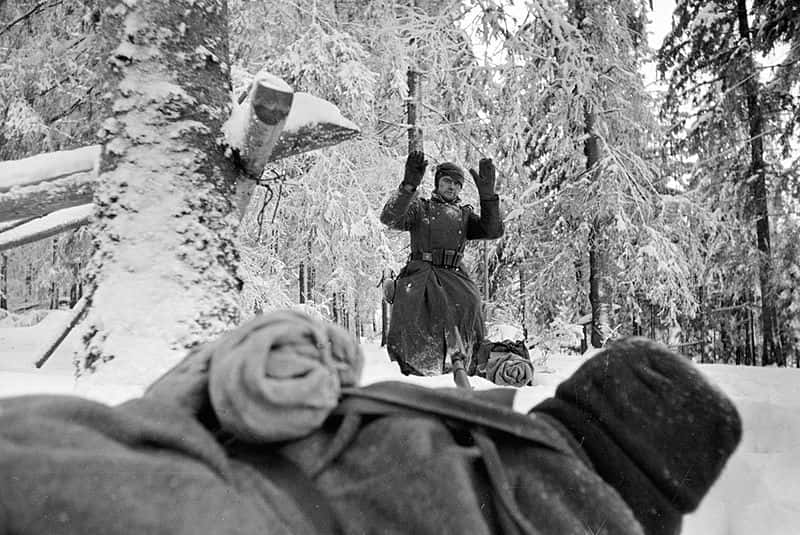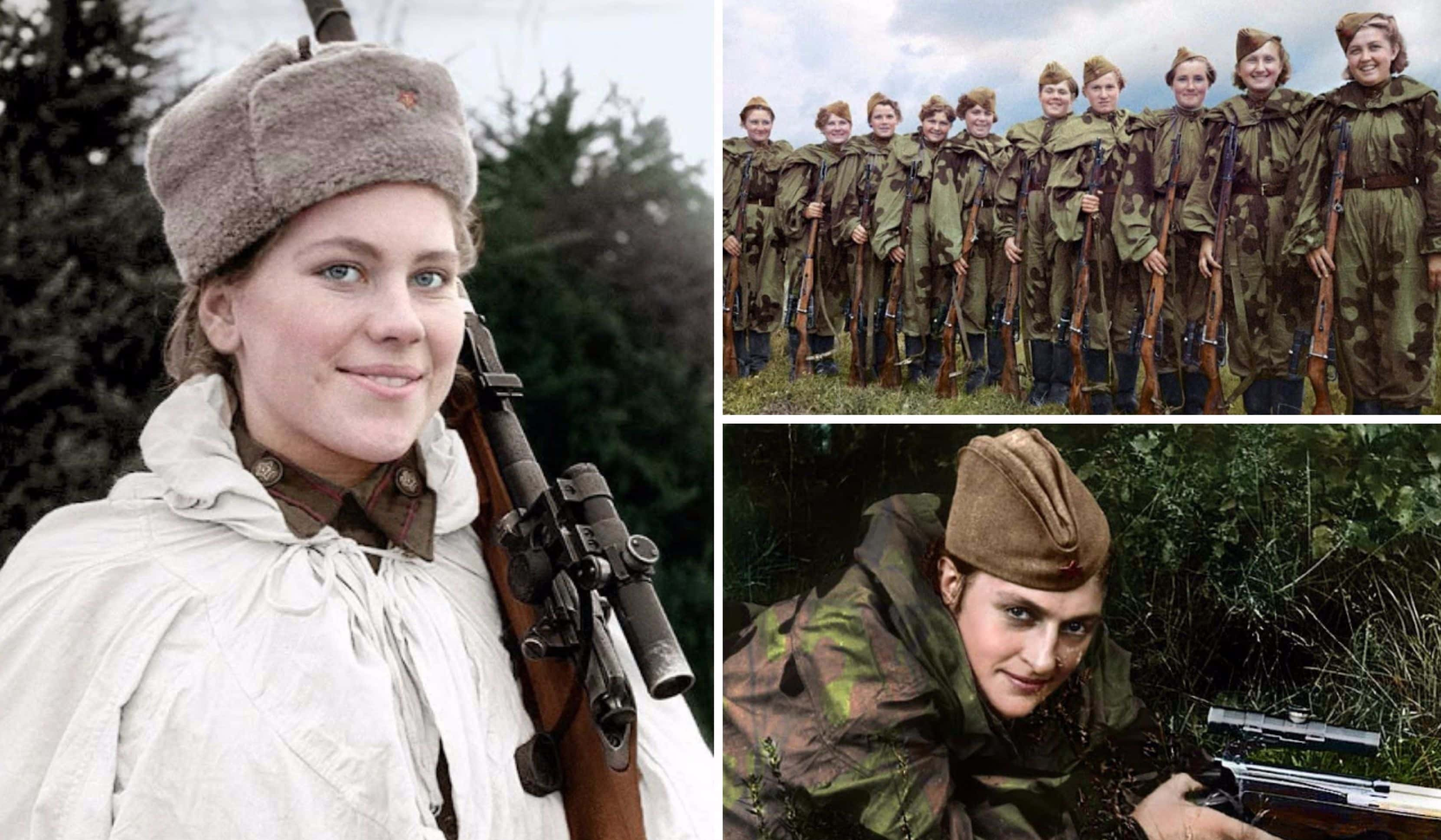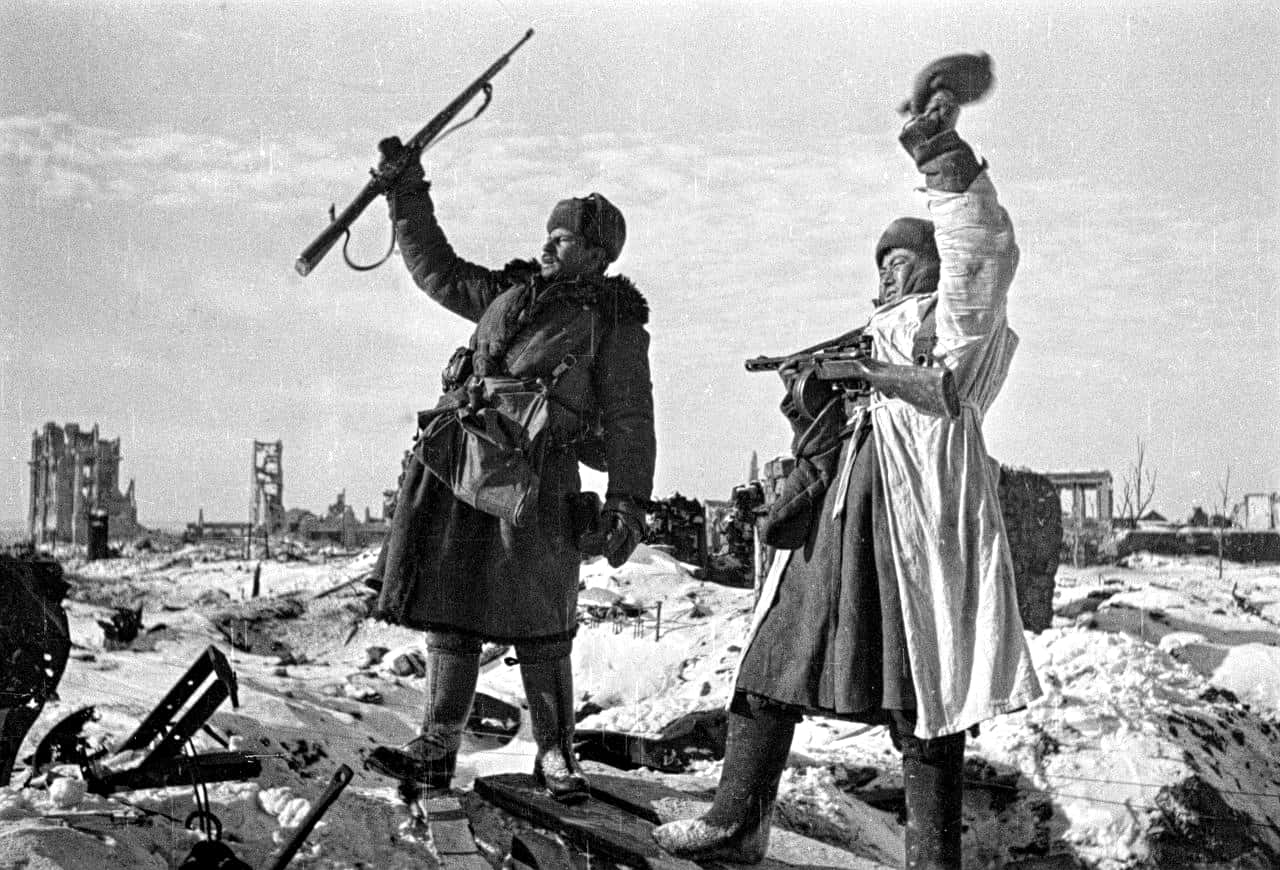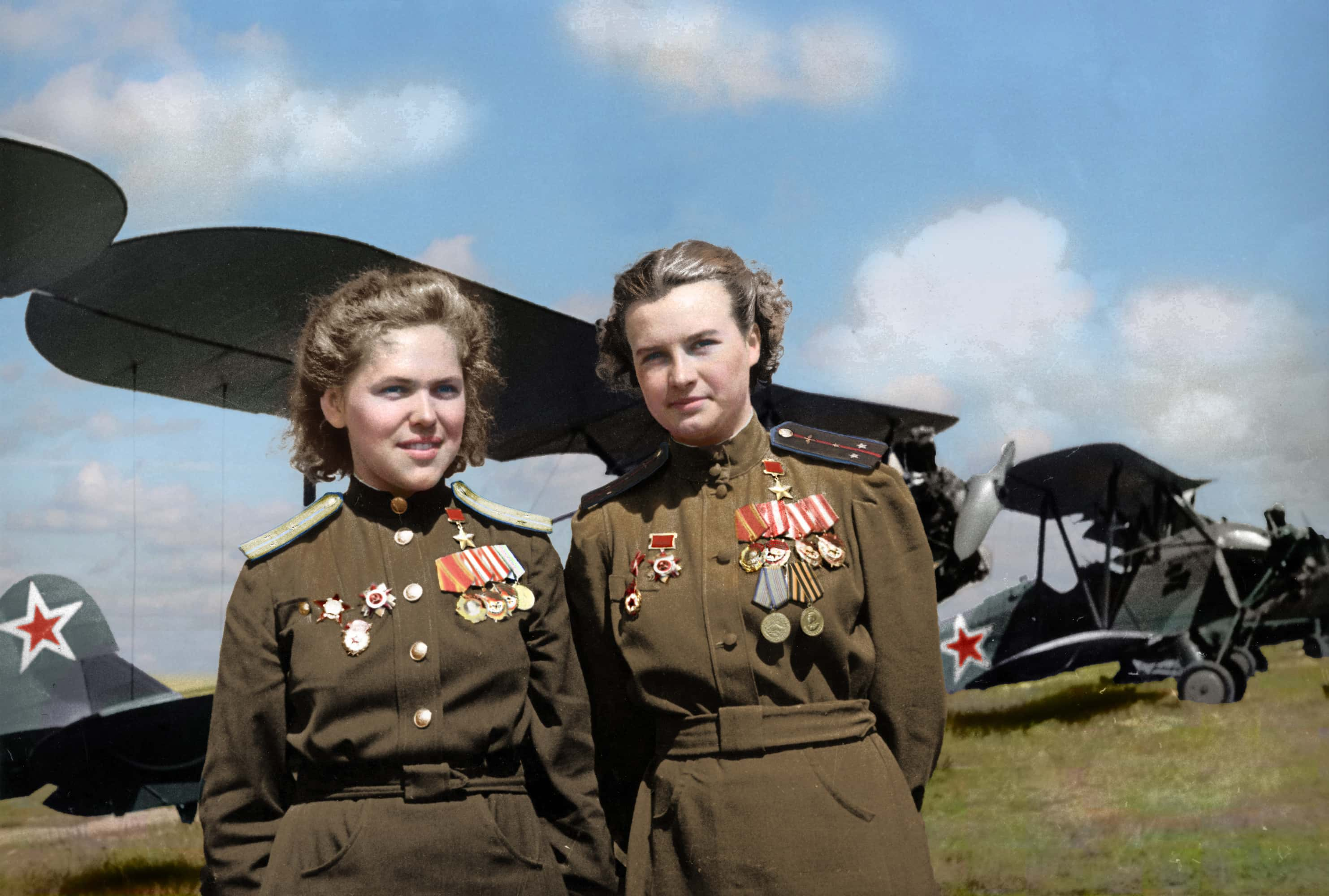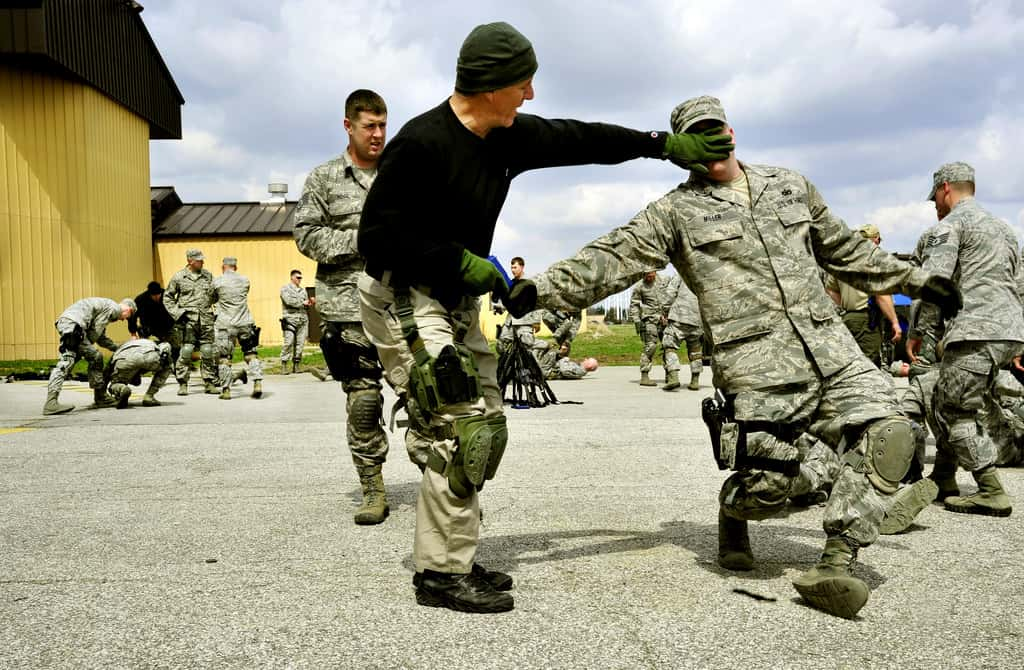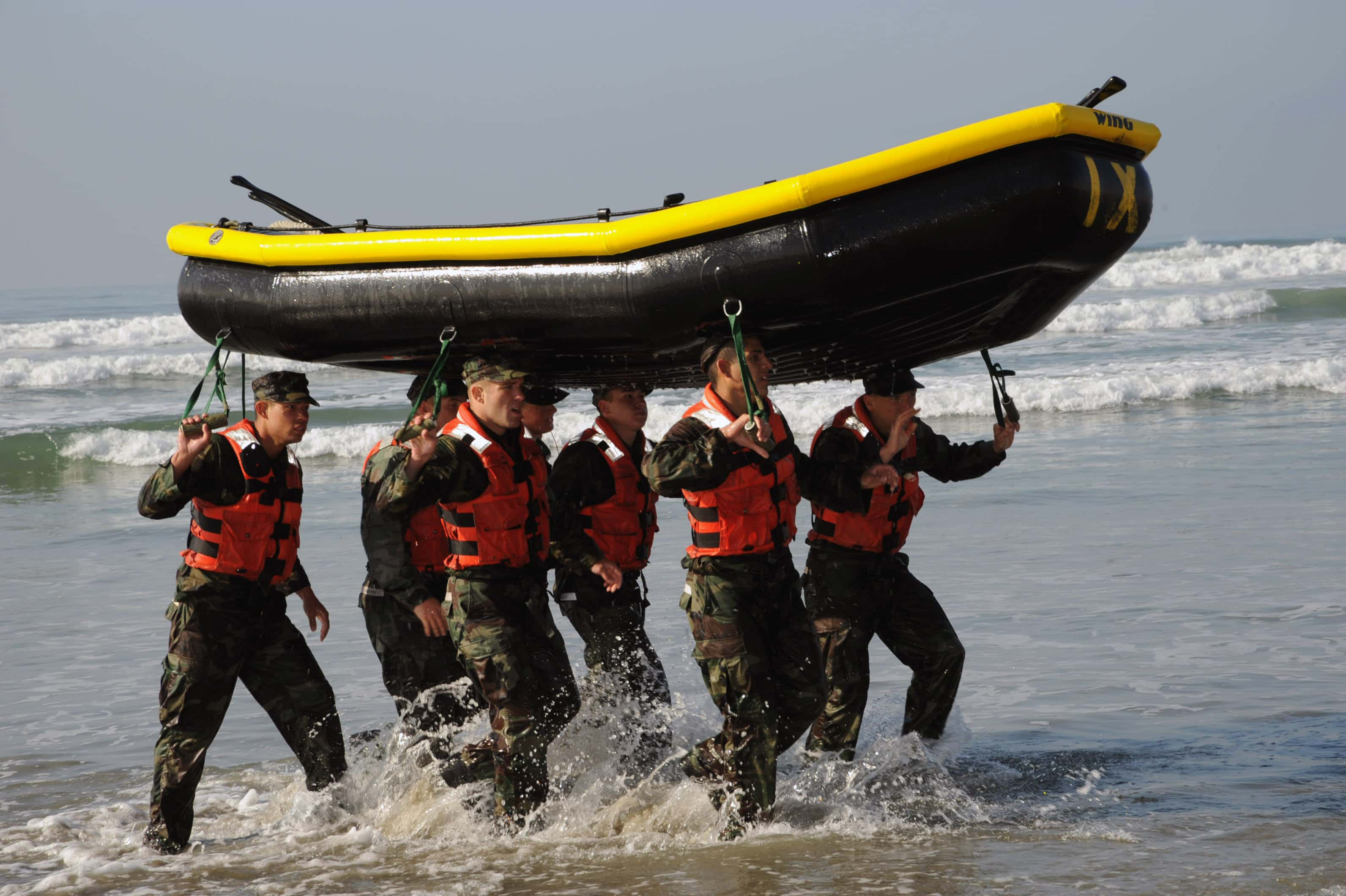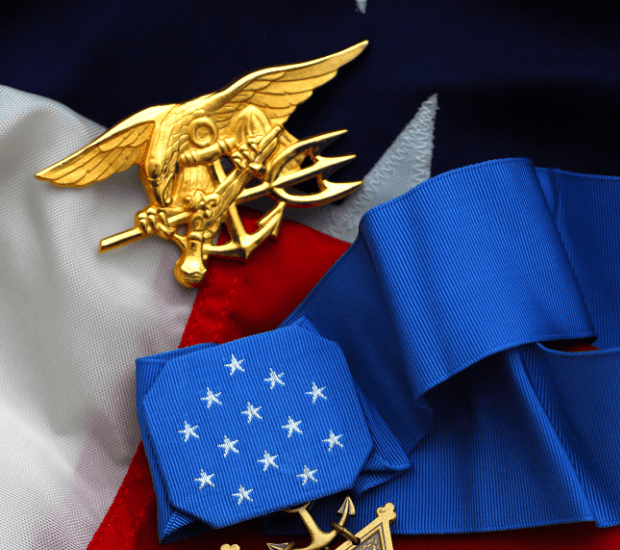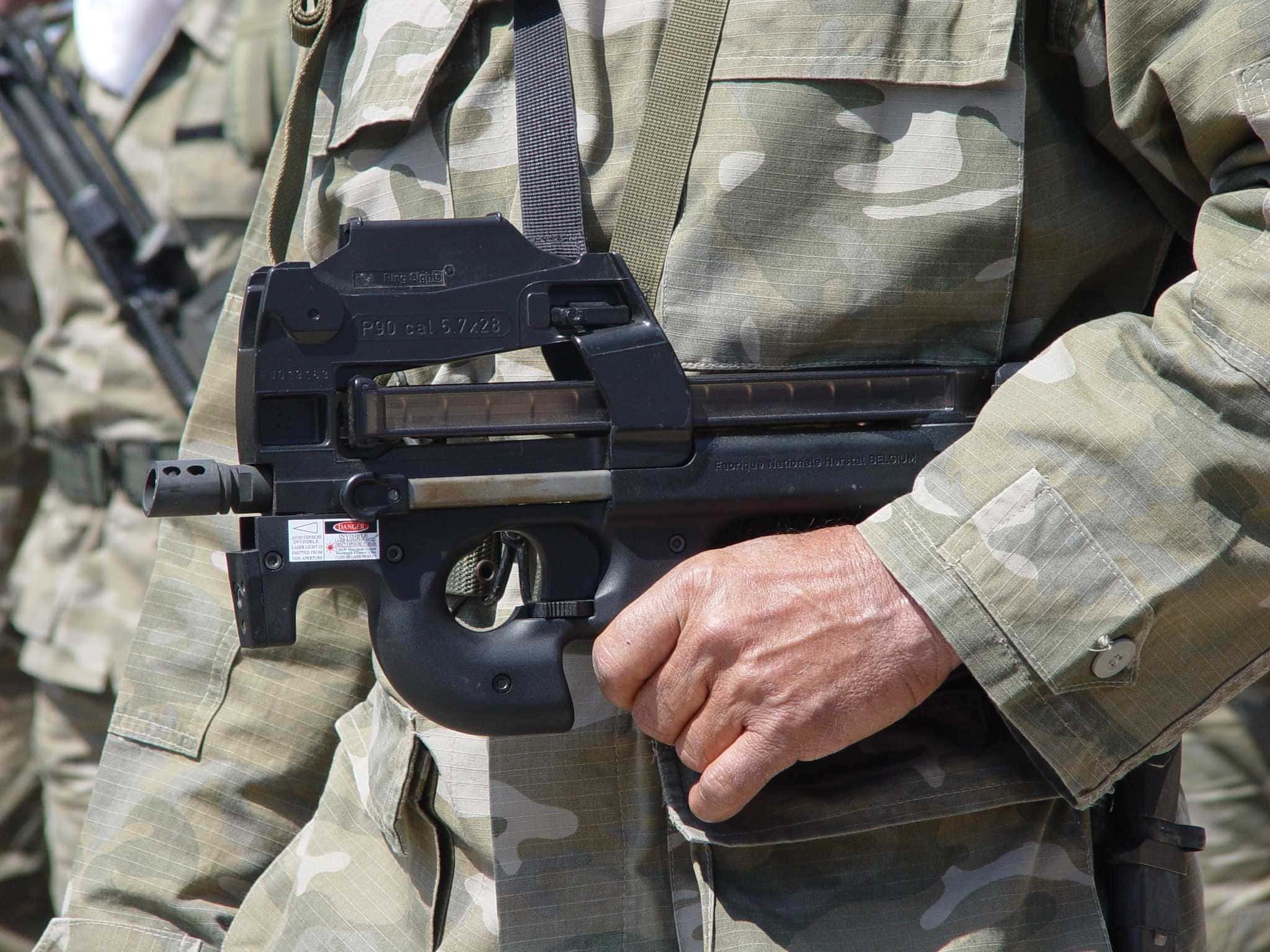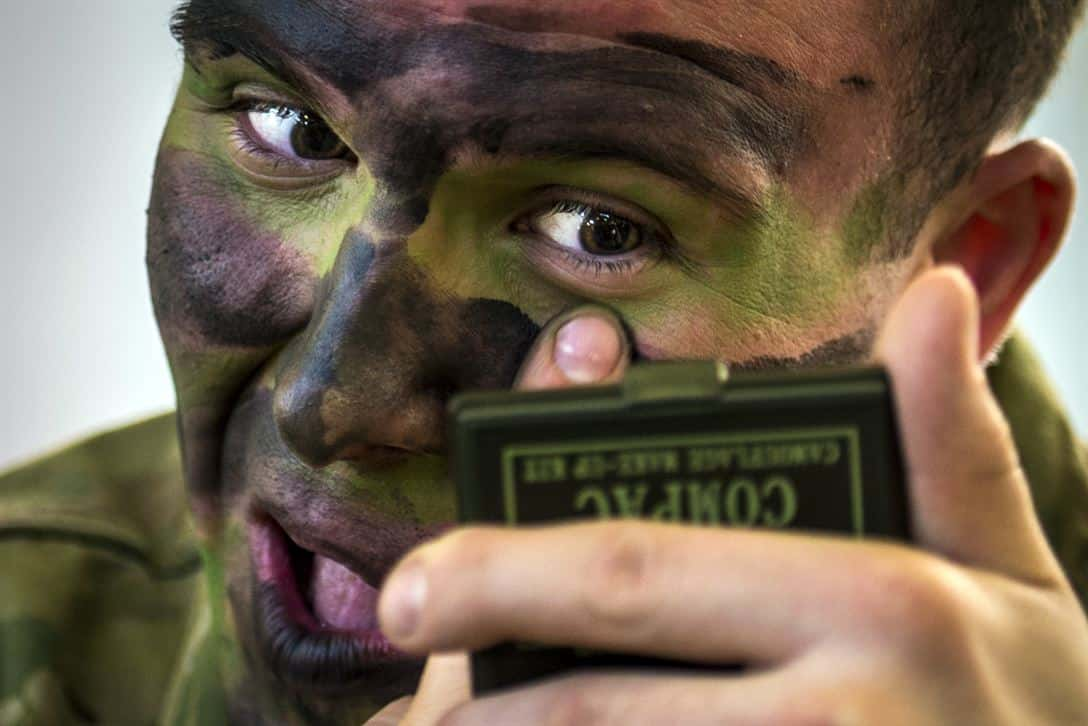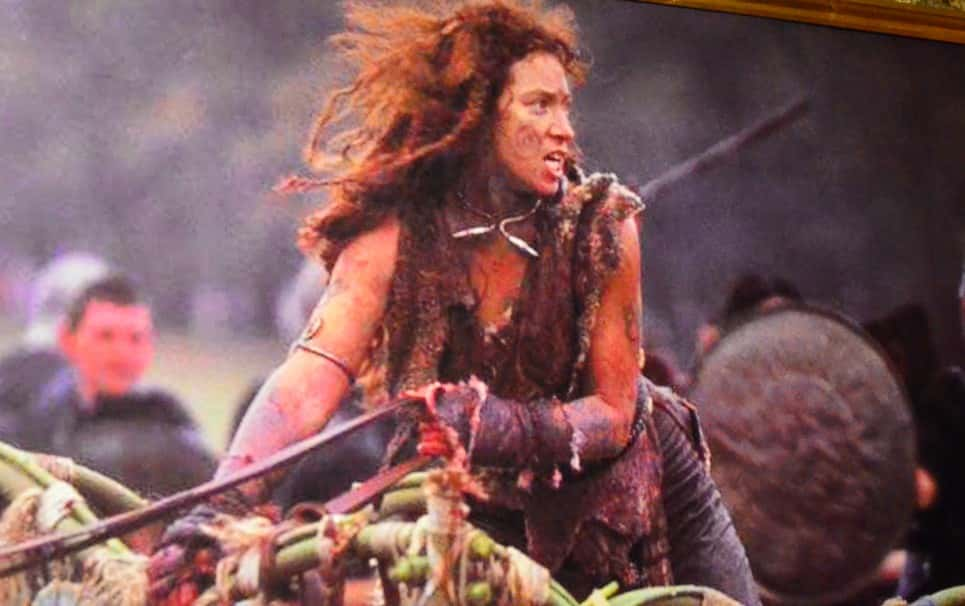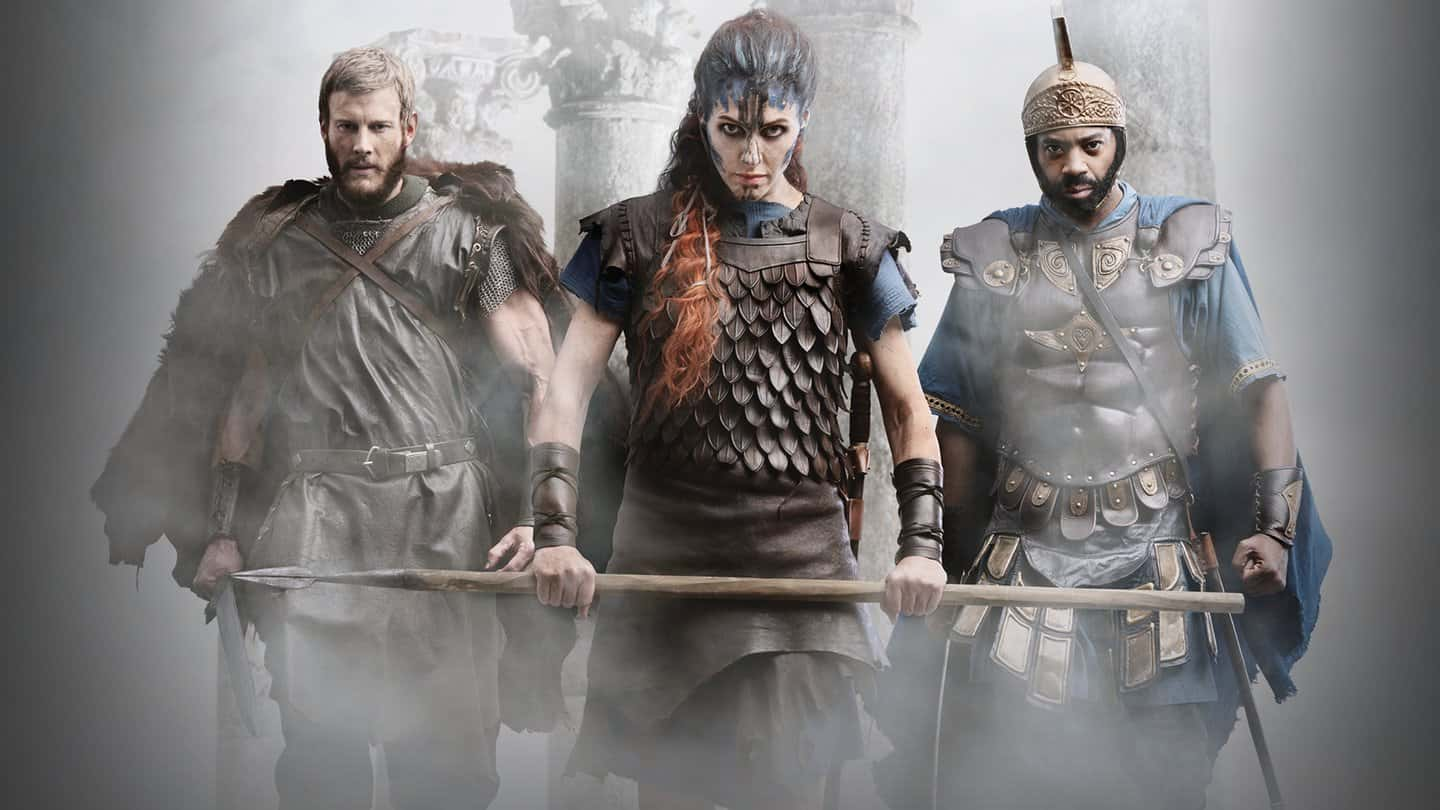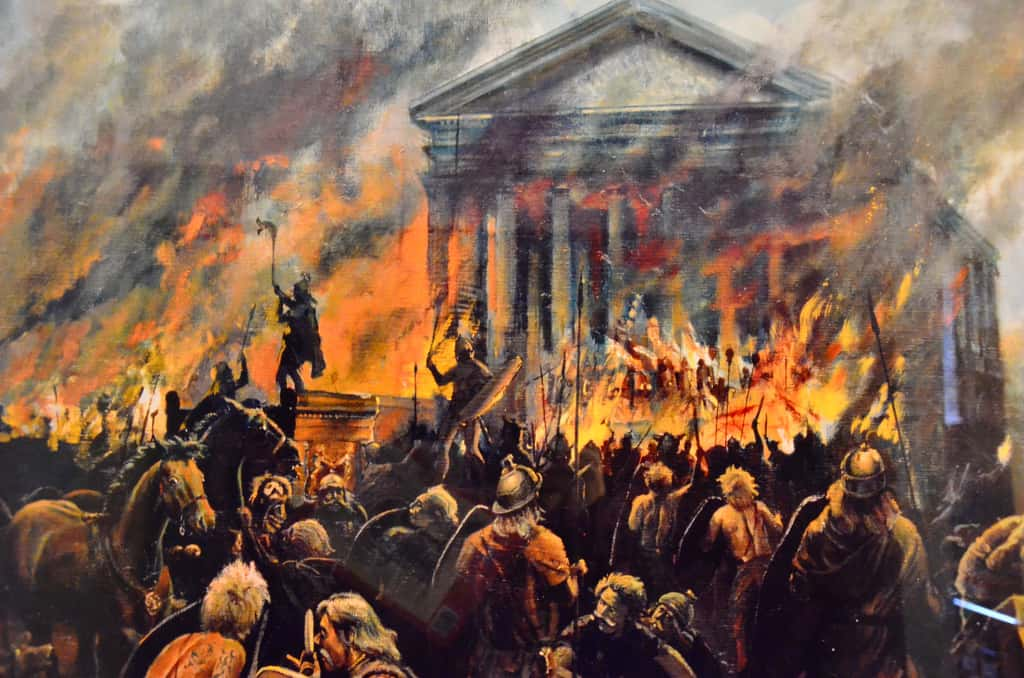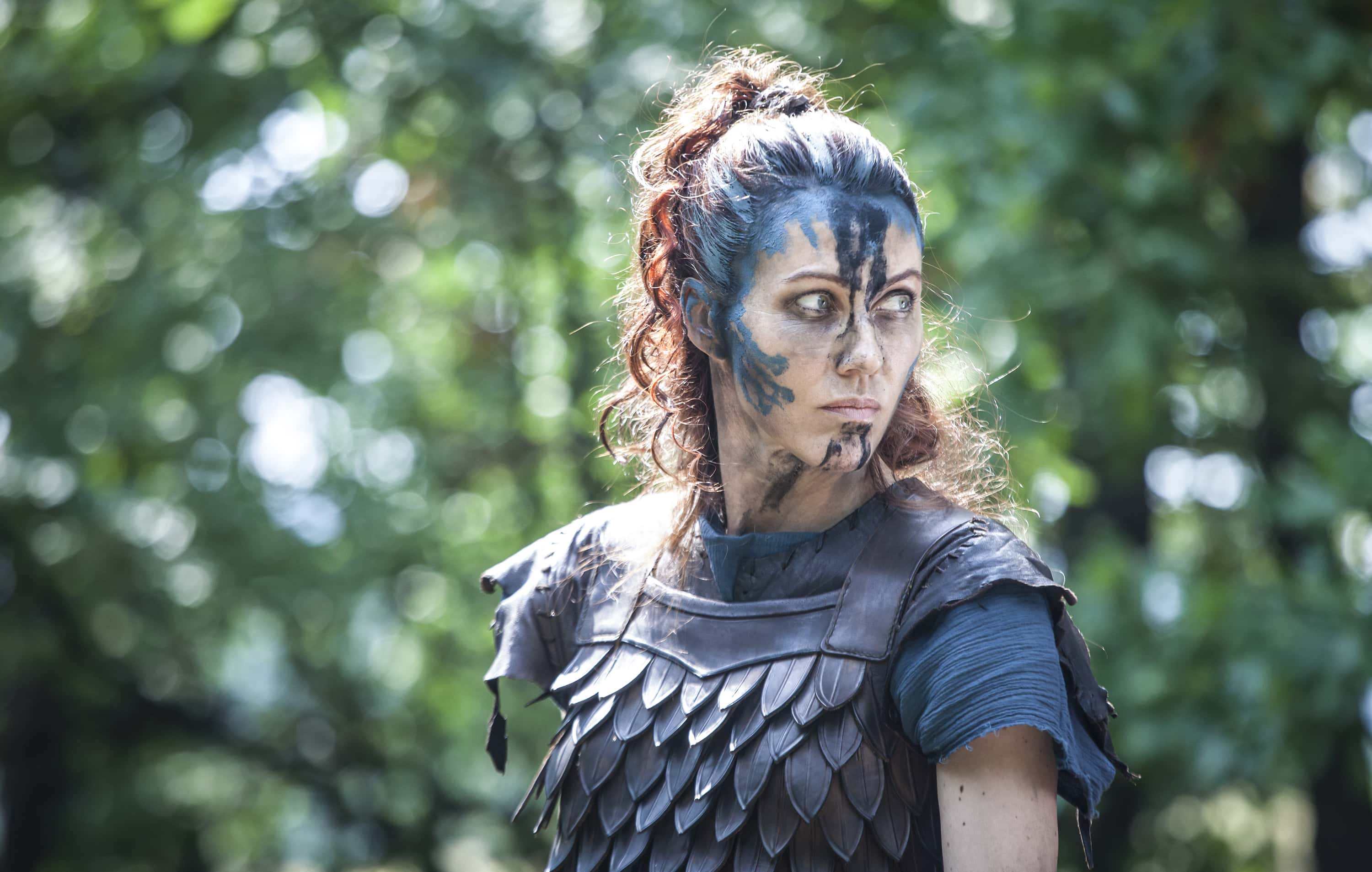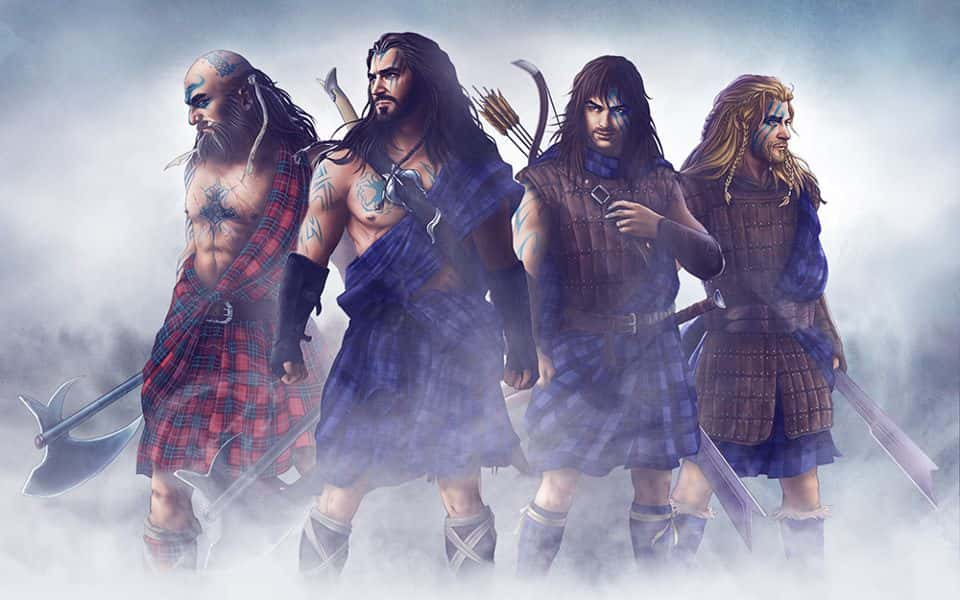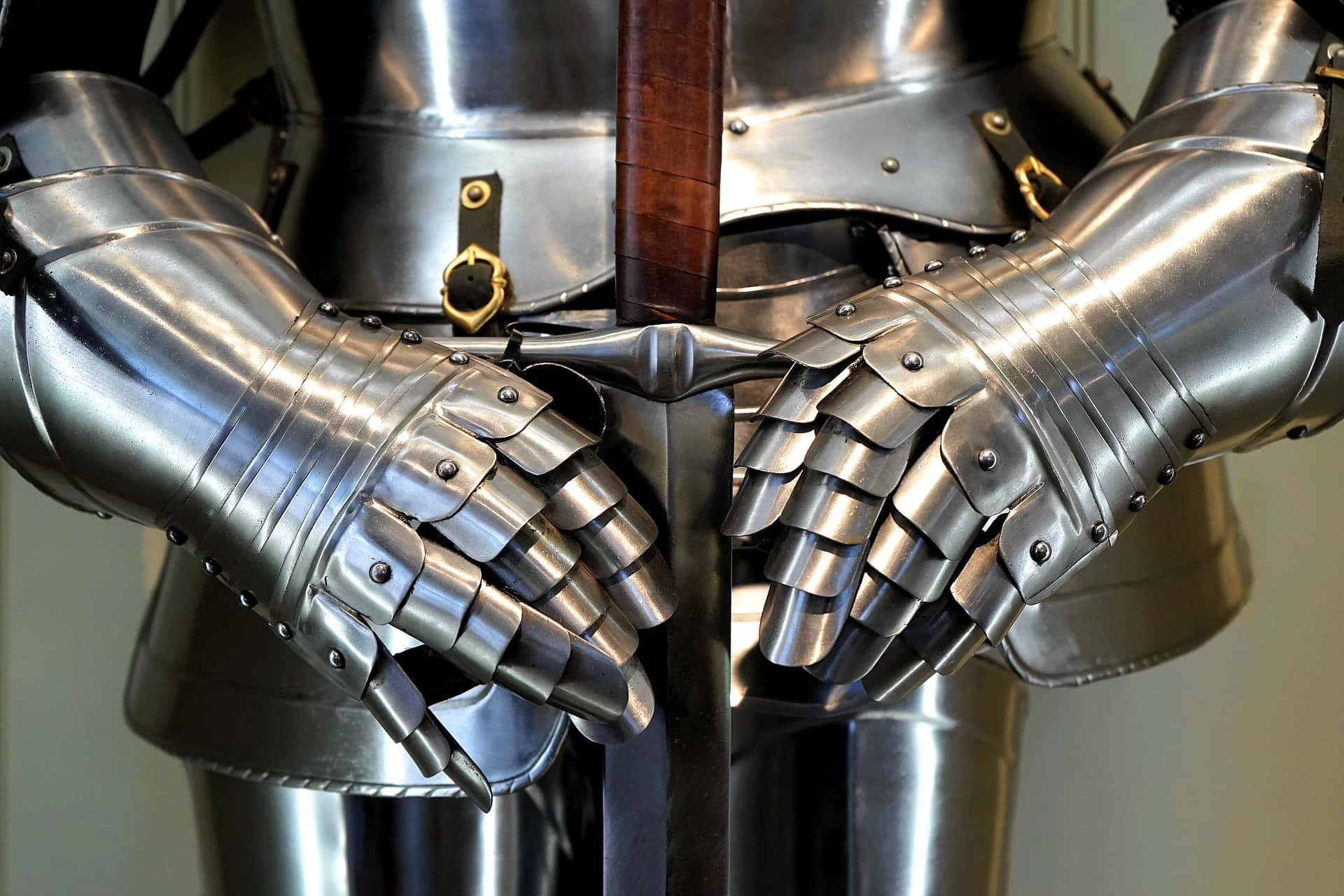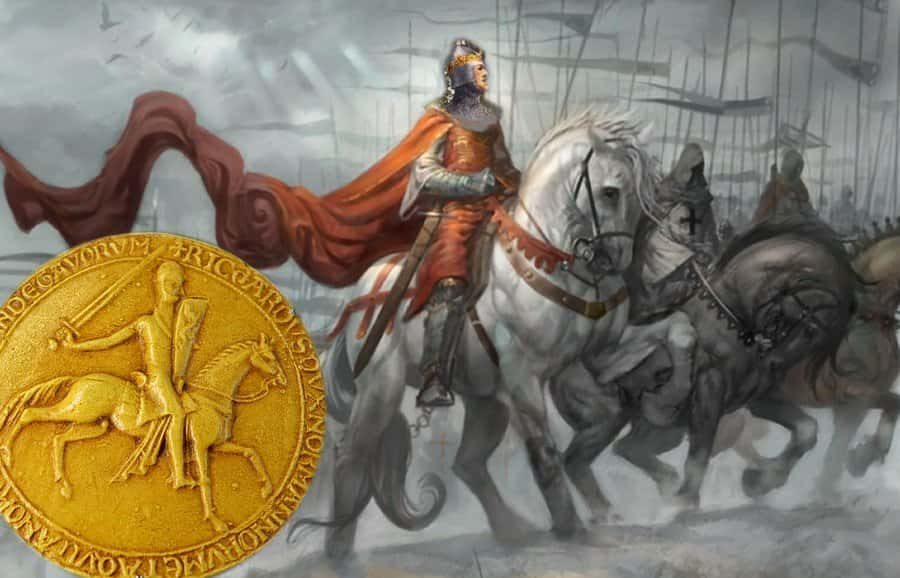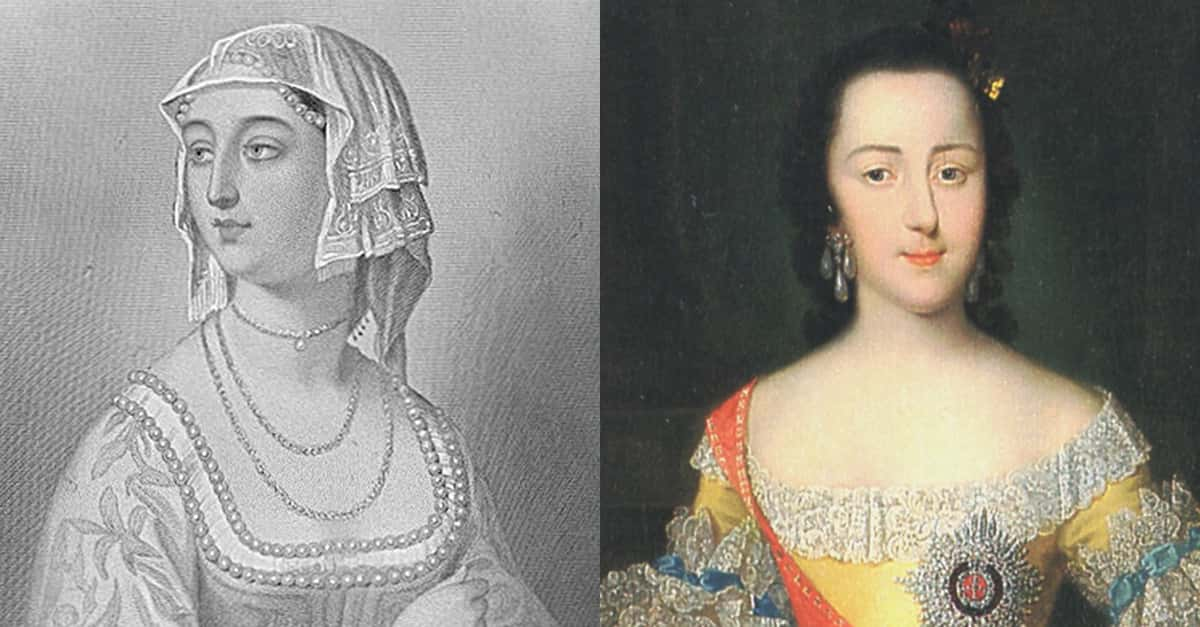The art of war is never easy, but these warriors and warrior clans sure make it seem that way. From the Mongol Horde to the modern-day Navy SEALS, these honorable, skilled fighters have been mastering their weapons and tactics of choice for decades—if not centuries.
Here are valiant facts about the most brutal warriors in history.
1. This Is Sparta
Highly disciplined and trained to be warriors from a young age, Spartans were one of the most feared military forces in the Greek world. At the height of Sparta’s power, it was commonly accepted that “one Spartan was worth several men of any other state.” Theirs is one of the most widely respected military cultures that has ever made its presence felt on Earth.
2. Birth of a Nation
The iconic Spartan army was the brainchild of a legendary lawgiver named Lycurgus, who organized their culture and brought them to prominence. Lycurgus referred to Sparta as having “a wall of men, instead of bricks.” Imagine the Great Wall of China, except instead of stones and mortar piled up in front of you, it's thousands of absolutely ripped Spartan warriors who have been trained since birth to specialize in murder.
3. Early Enrolment
The Spartans had a ruthless reputation around the ancient world. And it says a lot that their absolute efficiency in warfare is still so widely remembered today. But a reputation like that doesn't come easily. All Spartan citizens were expected to be professional soldiers, and children were removed from their homes at the age of seven to begin training.
4. Pumping Iron
Pursuit of material wealth was discouraged by Spartan law, so coins were made out of iron instead of gold or silver. This made stealing difficult, because iron is heavy. Also, good luck outrunning the Spartan you just robbed.
5. Beauty Standards
Being a little bit chubby was not an option in Sparta. Spartan warriors were expected to be strong and fit, and every 10 days, young men had to stand naked in public so their bodies could be inspected. Those who failed to meet standards of physical fitness were beaten and censured. Soldiers also had strict diets because they were focused on remaining physically fit as both a point of pride and to avoid beatings.
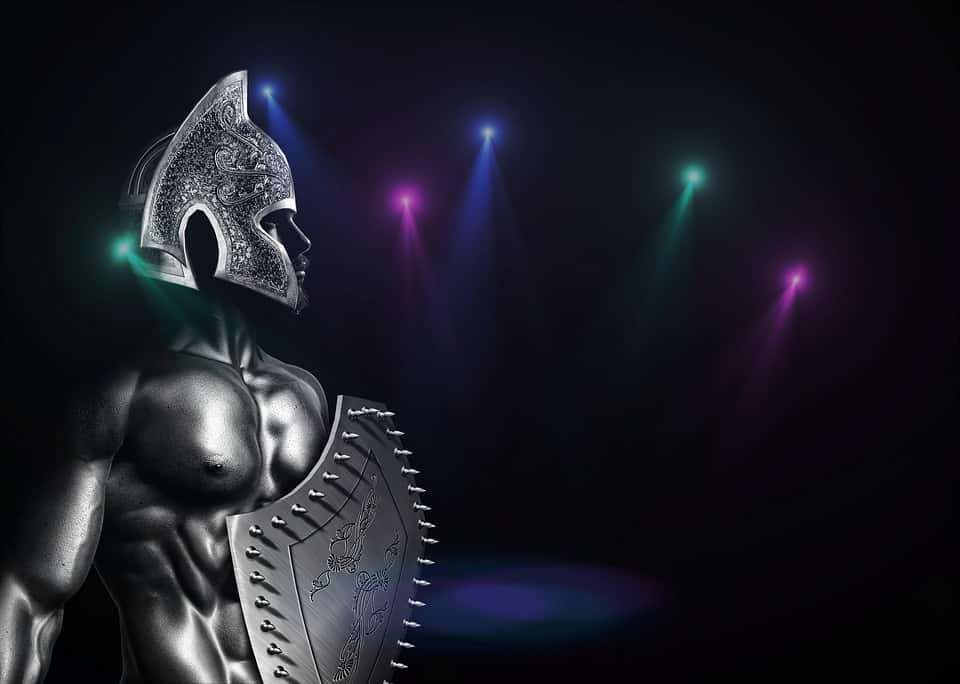 Pixabay
Pixabay
6. Runaway Baby
Cowards were not treated kindly in Sparta. Anyone thought to be a coward would have to give up their seats to non-cowards, and often would not be able to find a woman to marry.
7. The Punishment Fits the Crime
According to Plutarch, another punishment for cowards was that they had to “go around unkempt, wearing cloaks with patches of dyed cloth, and with one side of their beard shaved.” So cowards were punished by being forced to be hipsters.

8. Stupid Hippies
Spartans were also famed for having long hair. To the Spartans, long hair was the symbol of a free man. Of course, to other Greeks, long hair meant having pro-Spartan sympathies. Personally, I would have grown it out. Given the choice of which Greeks to impress with my grooming habits, I'm going to go with the murderous war machines. Just saying.
9. Finding Dory…in Your Face
The Spartans' main weapon was the dory spear, which was seven to nine feet in length with a wooden handle, an iron spearhead, and a bronze butt-spike for counterbalance. You may have noticed this tidbit in 300. The bronze butt-spike, also known as a “lizard-killer,” was there to both allow the Spartan to stand the spear up and also use it as a secondary weapon if his spear broke. Additionally, it could be used to vertically stab their fallen enemies as they marched past them.

Sign up to our newsletter.
History’s most fascinating stories and darkest secrets, delivered to your inbox daily. Making distraction rewarding since 2017.
10. Death First!
Losing was simply not an option for the average Spartan warrior. Theirs was a culture that revered success on the battlefield, to an almost unbelievable degree. Similar to samurai, Spartans were expected to kill themselves rather than surrender or face utter disgrace.
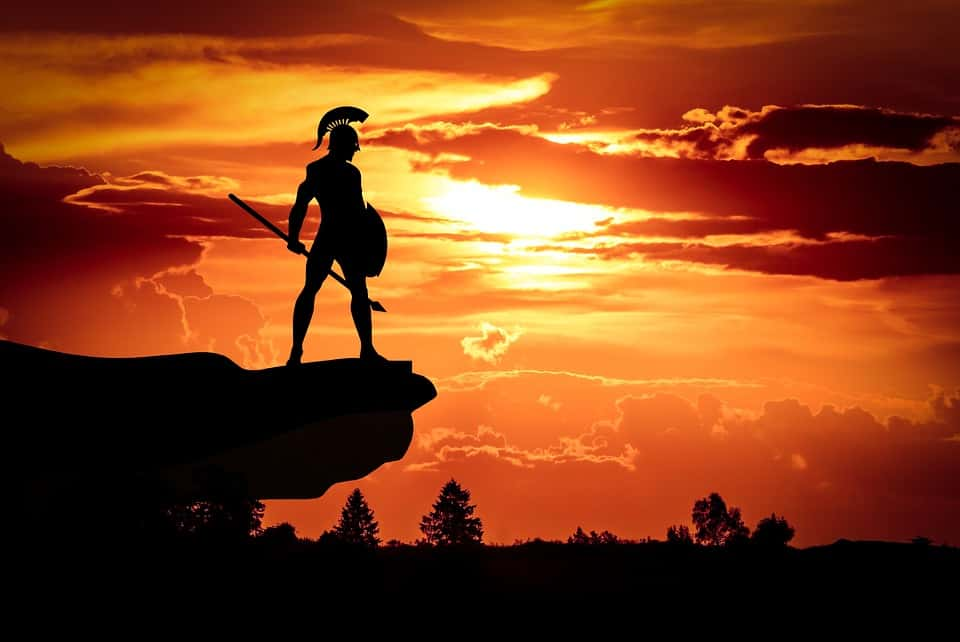 Max Pixel
Max Pixel
11. If at First You Don’t Succeed
If a married Spartan woman was childless, the government could order her to do something horrific. They could force her to see if another man could do a better job at impregnating her. Women had little choice in the matter, as Spartan law was strict about encouraging new children, since they had to keep replenishing the population that they kept sending to die in wars.
Likewise, another ruthless law allowed a childless man to request another man's wife if she had previously borne strong children.
12. Gender Roles
Women in Sparta had much more freedom compared to Greece. Women would undergo physical training alongside the men, although in their case, it was often to prepare for the war that is childbirth.
13. Getting a Head
The only Spartan citizens who were given headstones after burial were soldiers who died in combat and women who died in childbirth (or if they died doing a divine duty).
14. Quality Control
You don't keep your population physically flawless without being disgustingly ruthless. It's a simple fact: over time, you're going to have a few kids who are born a little different. Spartans didn't stand for that. Infants were given thorough inspections, and if any defects were found, they were left to die. Cold, Sparta, real cold.
15. Victory?
The events of the famous Battle of Thermopylae were depicted in the film 300. The battle came to define the struggles of the Greek city-states in their wars against the vast Persian Empire and their king, Xerxes. Even though it wasn’t a victory for the Greeks, it was used to hold up the heroism, endurance, and sacrifice of the 300 Spartans who fell holding off hundreds of thousands of Persians.
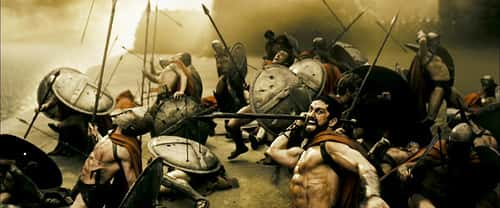 Flickr
Flickr
16. Chore Wheel
Contrary to what 300 might have told you, the Spartan king Leonidas wasn’t a man in his prime with a Scottish accent. According to historical sources, Leonidas was said to have been an aging man at the Battle of Thermopylae, in his late 50s and maybe even as old as 60! To be honest, the fact that he was so old and still fighting Persians to the death makes his story even more impressive than if he was a young man—but maybe a little harder to cast.
17. Justice Is Blind
During the famous last stand against the Persians in Thermopylae, a Spartan named Aristodemus suffered from a disease of the eyes and was too ill to fight. When he returned to Sparta, he was branded a coward. Later, he fought at the Battle of Plataea and shed the brand of coward…by dying horrifically. Way to go, Aristodemus?
 shutterstock
shutterstock
18. My Handsome Wife
On their wedding day, Spartan women shaved their heads and dressed in men’s clothes and sandals. After, the prospective brides laid alone in the dark on a pallet, waiting for their grooms to come and steal them away in the night. The grooms then snuck into the room and consummated the marriage. Done. Married.
Some historians believe these brides dressed like men and lay in darkened rooms because the Spartan warriors were so unused to females that they needed to be eased into the way a woman actually looked.
19. Beauty Is But a Light Switch Away
Because of the nature of these consummations, many Spartans became fathers before ever seeing their wives in daylight. One can only imagine there were a whole host of awkward morning-after conversations.
20. Inspired
King Nabis of Sparta used an iron maiden-like device that was made out of a mold of his wife. Its purpose was to force obedience upon those unwilling to take his orders. A disobedient underling would be placed in the device, and the doors slowly shut, allowing the metal spikes to pierce their skin. At that point, most suddenly had a change of heart about whether or not they wanted to listen to commands. But for those who waited too long...death was inevitable.
 PxHere
PxHere
21. You Go, Gorgo
If you thought that the Spartan King Leonidas was fierce, you should get a load of his wife, Queen Gorgo. Again, Spartan women enjoyed a great deal of freedom and education in Spartan culture, and Gorgo took full advantage of this. She often gave advice to her male relatives, and even once helped the Spartan army decode a secret message.
When a foreign woman once asked Gorgo why Spartan women were the only ones who could rule men, Gorgo replied quickly, "Because we are the only women who are mothers of men."
22. He Had to Earn His Name
Around 1162, Genghis Khan was born with the first name Temujin; he had to earn the name Genghis Khan. "Khan" means ruler, and "Genghis" is based on the Mongol word "Tenggis," which means "ocean" or "wide-spreading."
23. He Was Born in Blood
Legend has it that Genghis Khan was born with a blood clot clenched in his fist, foretelling his emergence as a great and powerful leader. Looks like he had blood on his hands from the very beginning.
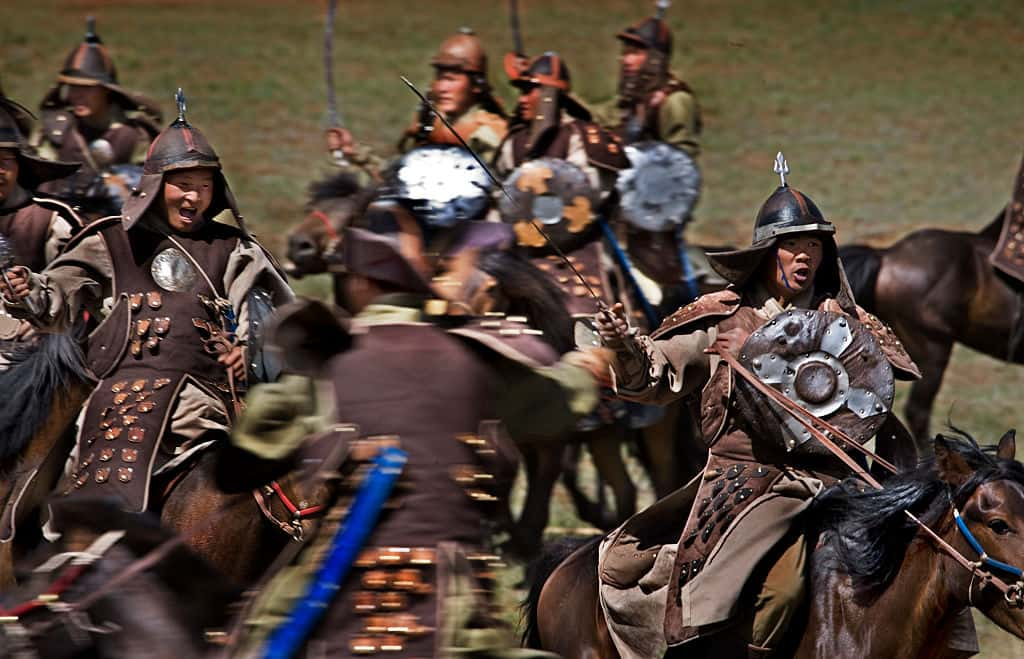
24. The Decimation of Persia
Genghis Khan killed so many Persians (modern day Iranians), that the population of Persia didn't return to pre-Mongol numbers until the 1900s, nearly 700 years later.
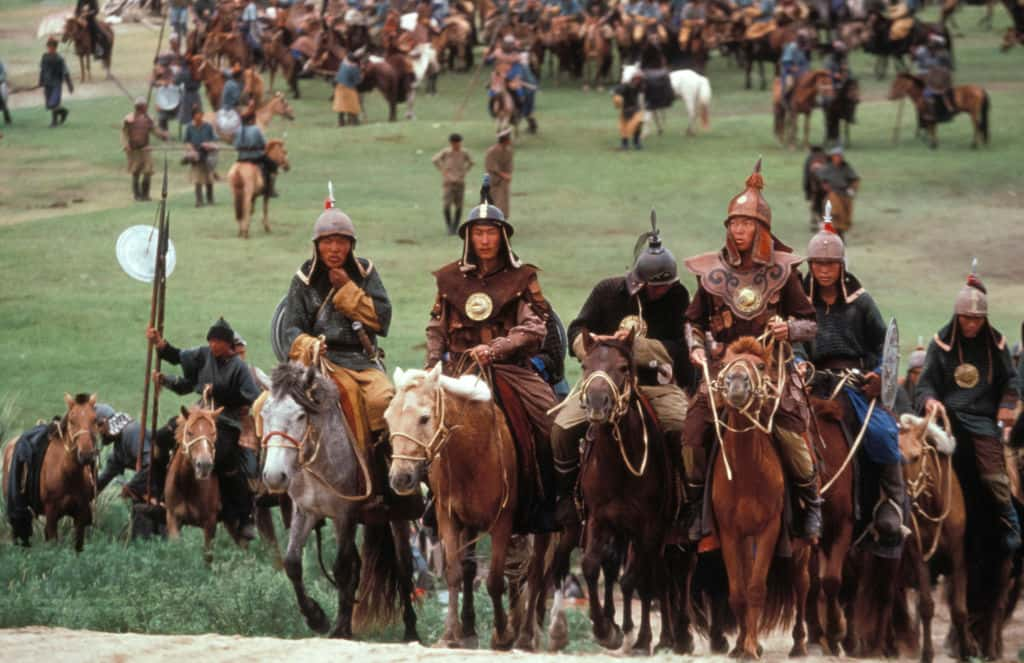
25. Now You See Me
No one knows what Genghis Khan looked like. The only images of the Khan started appearing after he died, so it's unclear how accurate they are to his likeness. In fact, Genghis specifically forbid anyone to craft his likeness.
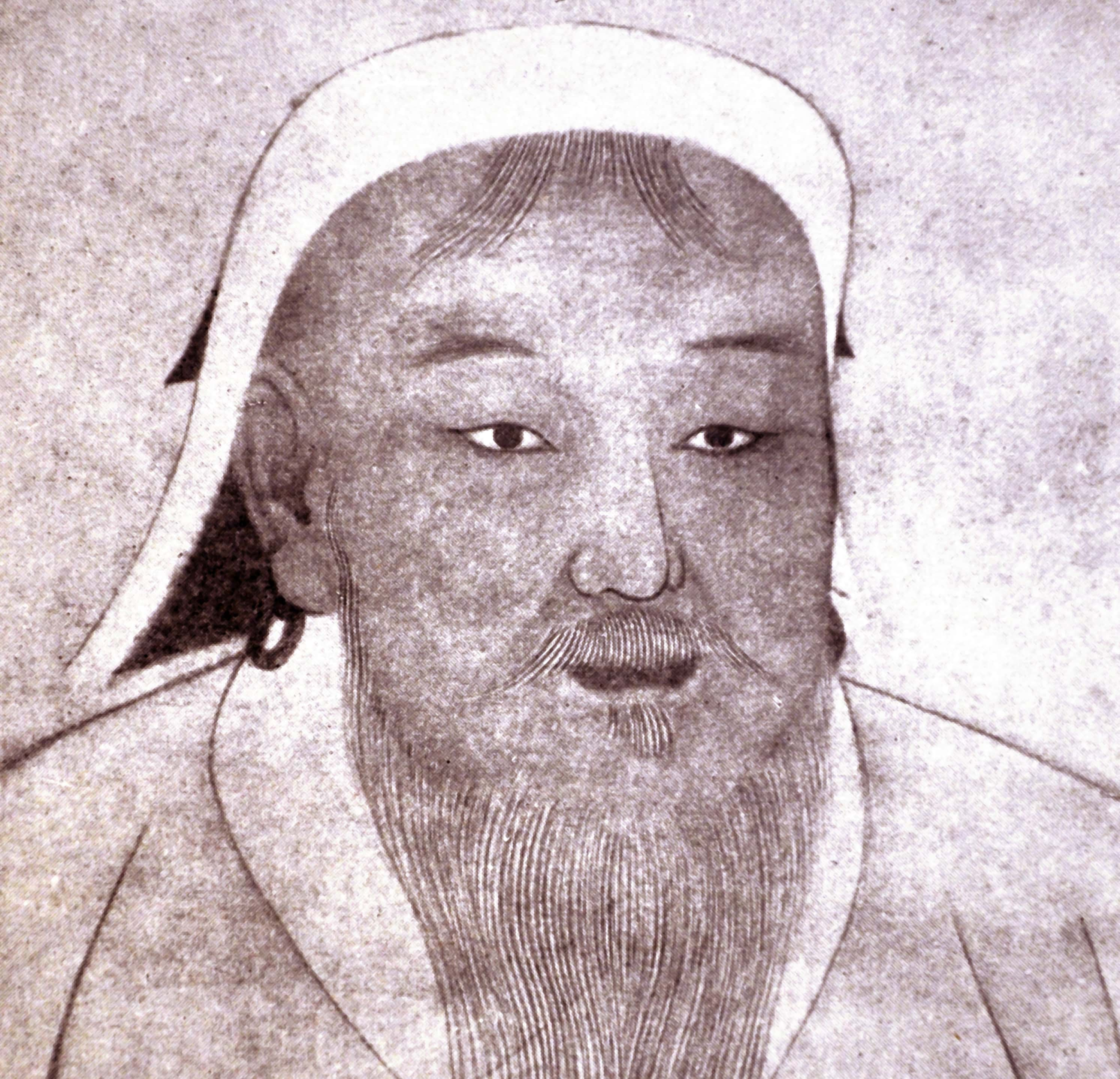 GettyImages
GettyImages
26. Was He Ginger?
Despite our cultural image of Genghis Khan as an Asian warlord, his appearance may have been truly unexpected. He is generally described as tall with a long flowing beard, but the Persian historian Rashid al-Din also claimed the Khan had red hair and green eyes. Al-Din never met Genghis in person, so we have to take it with a grain of salt, but these features weren't uncommon in the Mongol population at the time.
 Flickr
Flickr
27. Cry Me a River
It's said that Genghis Khan had those men he trusted most divert a river over his final resting place, ensuring no one would disturb his eternal slumber.
28. You've Got Mail
Genghis Khan created the first international postal service, allowing people to mail parcels and letters to friends and family in other countries without having to hire specialized couriers. The postal service was similar to the American Pony Express.
 Sgt Ben Eberle/Wikimedia Commons
Sgt Ben Eberle/Wikimedia Commons
29. The Children of the Great Khan
Genghis Khan is the most successful biological father of all time, with nearly 16 million descendants.

30. Marriage Proposals
Ghengis Khan would often marry his daughters off to local rulers, and then use these daughters to rule in his stead. You see, he would make his new son-in-law a military leader and send him off on a campaign, install the daughter into a position of power at the center of the nation, and then wait for the husband to die in battle.
It was a win/win for the Khan, who got new lands and new soldiers for his wars. For the dead husband, well, not so much.
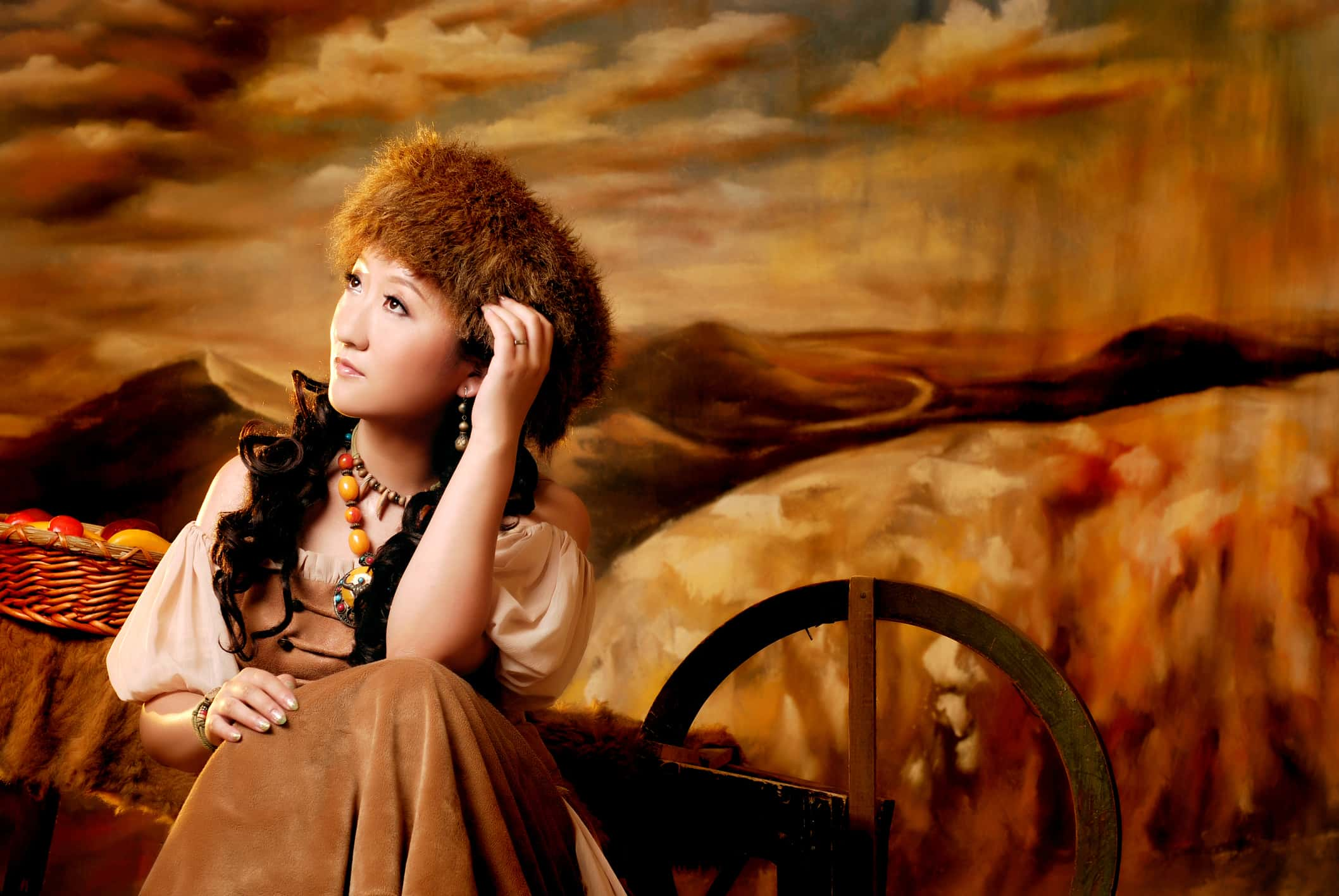
31. Empressive
Though Genghis Khan took many wives throughout his life, his only Empress was his first wife Borte. Genghis had actually been betrothed to Borte since the tender age of nine. Now that's loyalty.
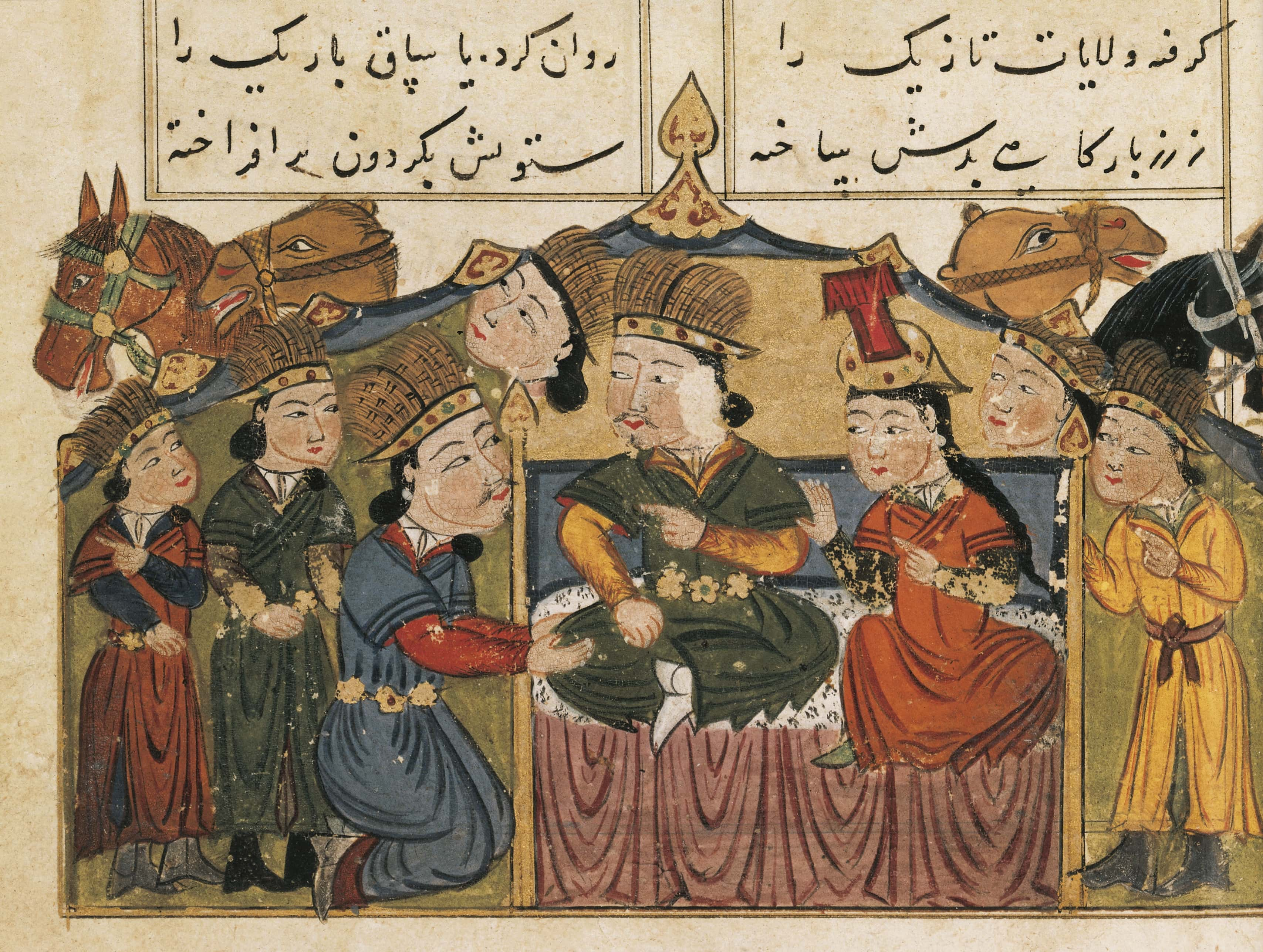
32. Game Plan
Genghis Khan was a master tactician, often employing clever tricks to defeat his enemy. Some examples include false retreats to bait enemies into ambushes, and tying sticks to horses' tails to kick up dust storms equal to those kicked up by large armies. They would also tie dummies atop horses to make it look like a solider was riding into battle.
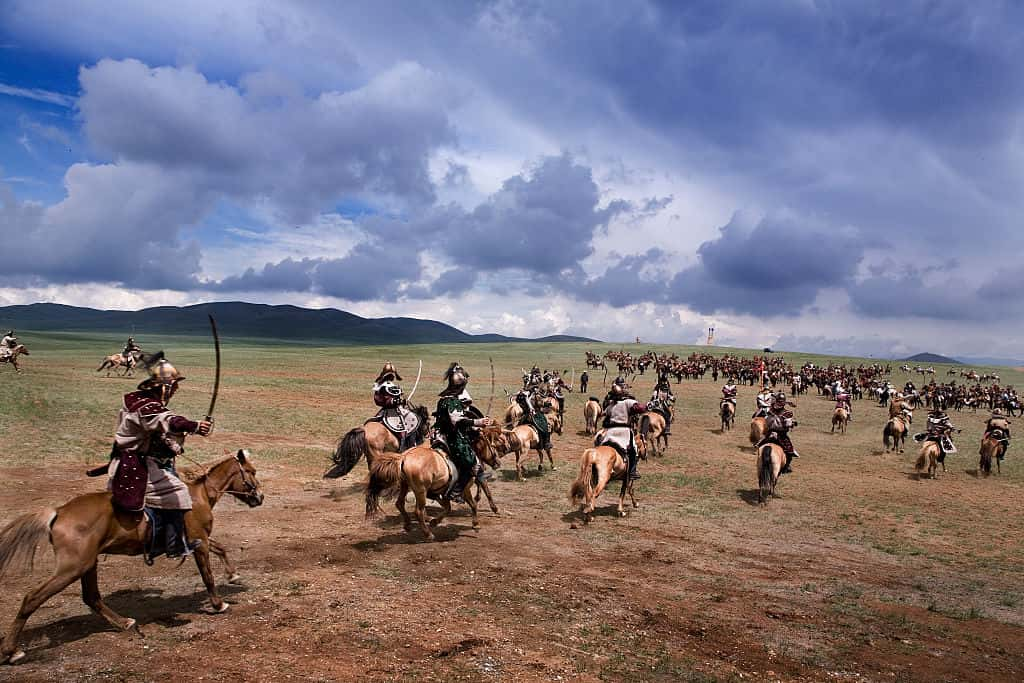
33. Happy Death Day
We still don't know how Genghis Khan died. We do know it was in August 1227, but the rest remains a mystery. Theories range from an illness, a fall from his horse, or a gruesome battle wound. He was about 65 years old.
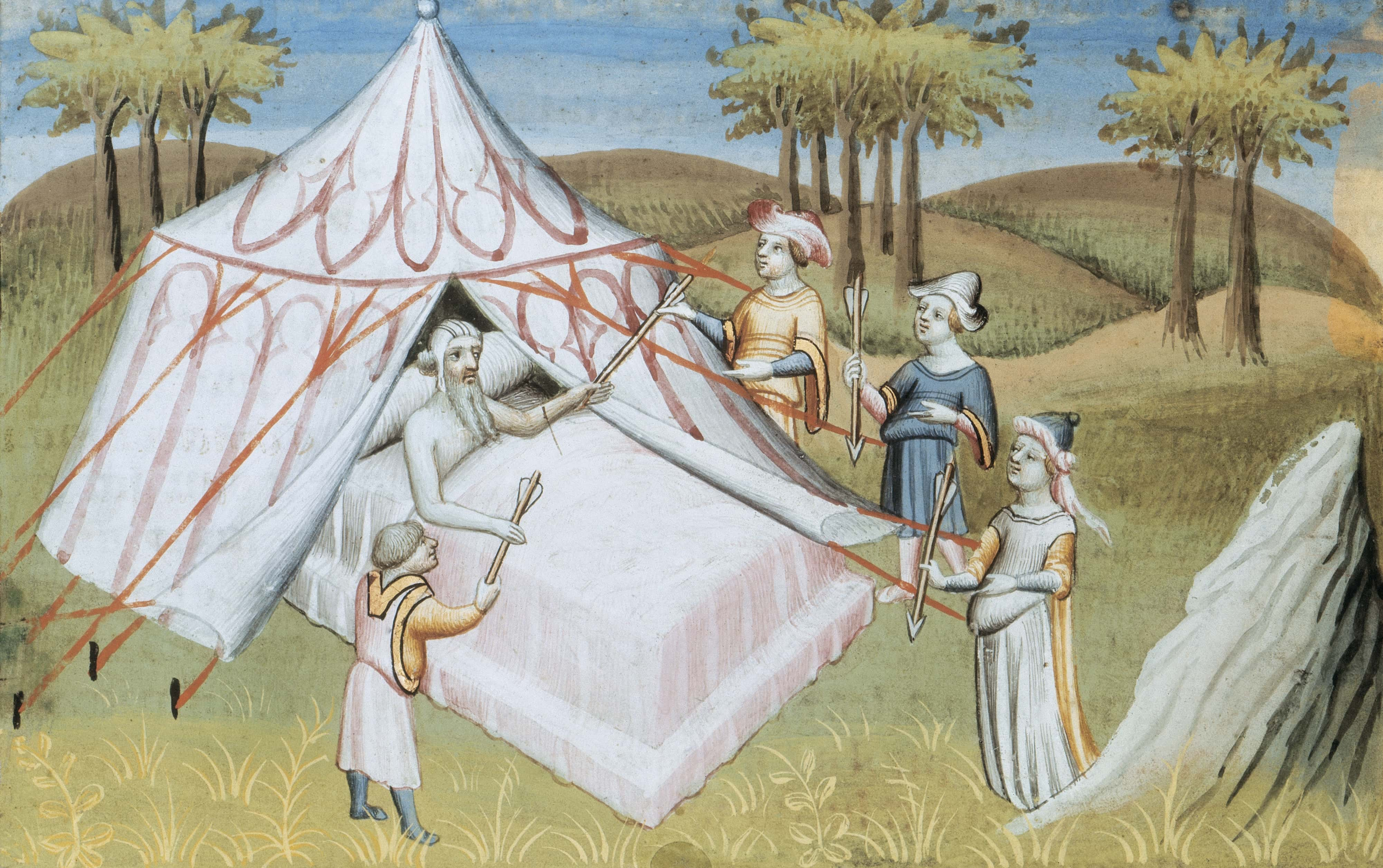
34. Squeaky Clean
The Mongols didn't like to spill noble, highborn blood on the ground, but they also really liked killing. To get around this, they came up with some gruesome loopholes: they loved to bend backs until they snapped, and frequently poured molten silver into the orifices of their victim, Game of Thrones style. Another favorite? Roll the victim up in a rug and trample him with a horse. No mess to clean up!
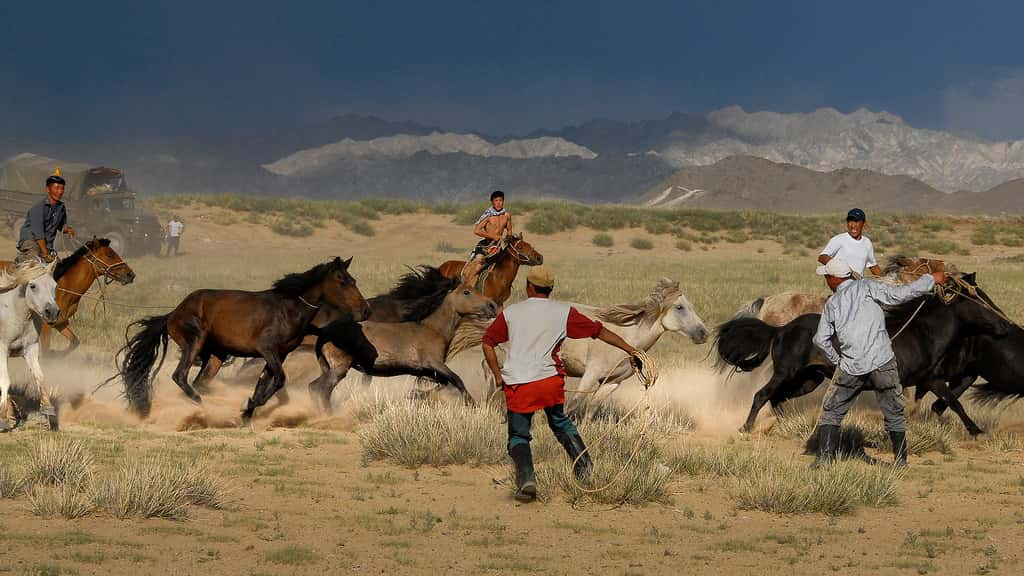 Flickr
Flickr
35. Cold-Hearted
Genghis Khan's armies killed an estimated 40 million people. In fact, his armies killed so many people that he cooled the planet and reduced the carbon footprint of human beings. While effective, this is definitely not the solution to climate change.
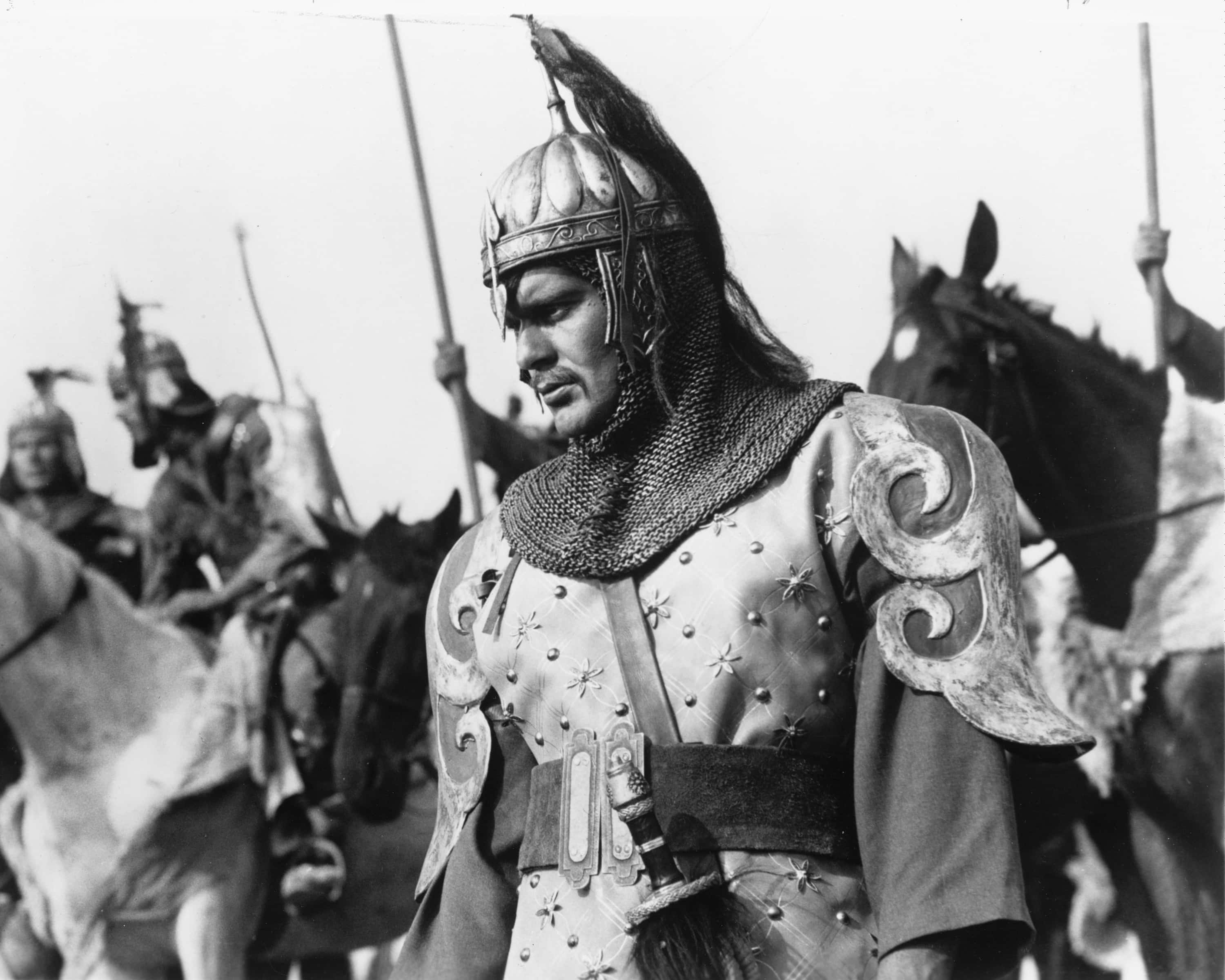
36. A Feast for Crows
A legend says that once, when the Mongol horde defeated the Russian forces, they celebrated their victory in gruesome style. They took all the survivors of the battle, laid them on the ground, and put a wooden slab on top of them. The Mongols then proceeded to eat a victory feast over their enemies, watching as the last of the survivors were slowly crushed to death beneath them.
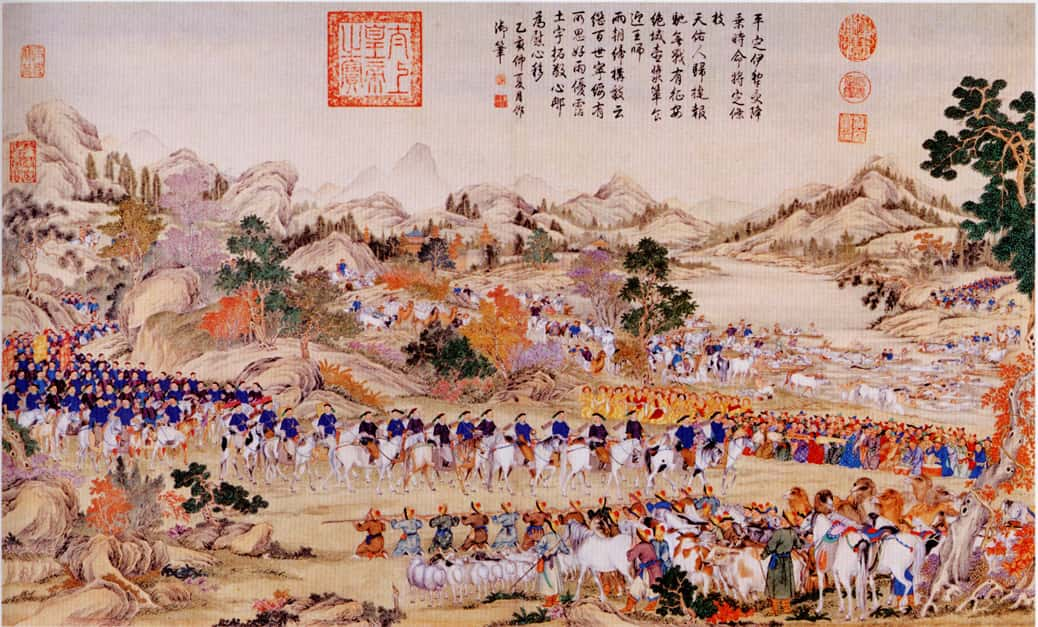 Wikimedia Commons
Wikimedia Commons
37. Mommy Issues
Toregene Khatun was one of Genghis Khan's daughters-in-law, and she had almost as brilliant and brutal a reputation as Genghis. She ruled as Great Khatun and regent of the Mongol Empire for five years, and helped her son Guyuk become Khan in 1246. Guyuk, however, did not pay back his mother in kind. When he became Khan, Guyuk's brother Koden accused one of Toregene's closest advisors, Fatima, of using witchcraft on him.
Koden then promptly died. Grieving his brother and convinced Fatima was definitely a witch, Guyuk demanded that dear old mom deliver Fatima to face execution for her crimes. Toregene, not happy about the situation, claimed she would commit suicide rather than hand over her beloved advisor. So what was Guyuk Khan to do?
Well, he seized Fatima anyway, killing her by sewing up her mouth and other orifices and then dumping her into water. He then proceeded to strip the household of his mother's supporters. Toregene died a few months later under mysterious, and obviously very suspicious, circumstances. It's hard out there for a Mongol.
 Wikimedia Commons
Wikimedia Commons
38. The GOAT
Alexander III of Macedon, otherwise known as Alexander the Great, was crowned at the age of only 20, and spent most of his reign leading military campaigns. By age 30, he’d created a vast empire that stretched from Greece to India, and to this day he’s considered one of the greatest military leaders in Western history.
39. Going Pro
One of Alexander the Great’s favorite tactics was the use of the Macedonian phalanx, which is a strategic formation that consists of a block of infantry standing shoulder to shoulder in rows that are several feet deep. Alexander and his father made sure to train their infantry mercilessly, making them into the perfect soldiers.
40. Both Sides of the Blanket
Throughout history, there have been many questions about Alexander’s sexuality. Despite having three wives, he was also rumored to have had relations with at least one man. Today we might call Alexander queer, if not gay. For the Ancient Greeks, gender often wasn’t a factor in their choice of a partner, and was seen as personal taste.
As a result, men often had intimate relations with other men or teenaged boys, and also still had relations with women and took wives.
 Max Pixel
Max Pixel
41. A Man and His Horse
When Alexander was 10 years old, a trader brought his father King Philip a horse. The horse proved impossible to tame, and his father sent it away. Alexander, however, noticed that the horse was afraid of its shadow, and pleaded for permission to tame the beast. Much to the joy of Philip, he did. It was the beginning of one of the most intense relationships of Alexander's young life.
As a reward for his courage and ambition, Philip bought his son the horse, which Alexander named Bucephalus, or “Ox Head.” Bucephalus served Alexander fiercely in his most formative years. When the horse died in battle, Alexander lovingly named the city Bucephala after him.
42. A Pleasant Odor
In historian Plutarch’s book Lives of the Noble Greeks and Romans, Plutarch reported that Alexander possessed a “most agreeable odor,” and that his breath and body perfumed his clothes.
43. Love at First Sight
According to some historical reports, Roxanne, Alexander the Great’s first wife, was possibly the only woman he ever loved. There are different versions of their meeting. In one account, he came across Roxanne among some of his captives after their unconditional surrender, and he immediately fell in love with the alluring young girl.
In Plutarch’s version, he first sees her among the dancers at a banquet held in in his honor immediately after a victory.
44. Man of Many Names
Alexander the Great was known by a number of other nicknames in his lifetime. He was often called the Accursed, the Conqueror of the World, the Philosopher-King, and the Madman of Macedonia, among others.
45. Undefeated
From his first skirmish at age 18 until his death, Alexander was undefeated in battle. He had a reputation for leading his men with great speed, which allowed the smaller forces to reach and break enemy lines before his opponents were ready. In 334 BC, Alexander fortified his own kingdom in Greece, and then crossed into Asia, where he won several more battles.
His tactics are still studied in military colleges today.
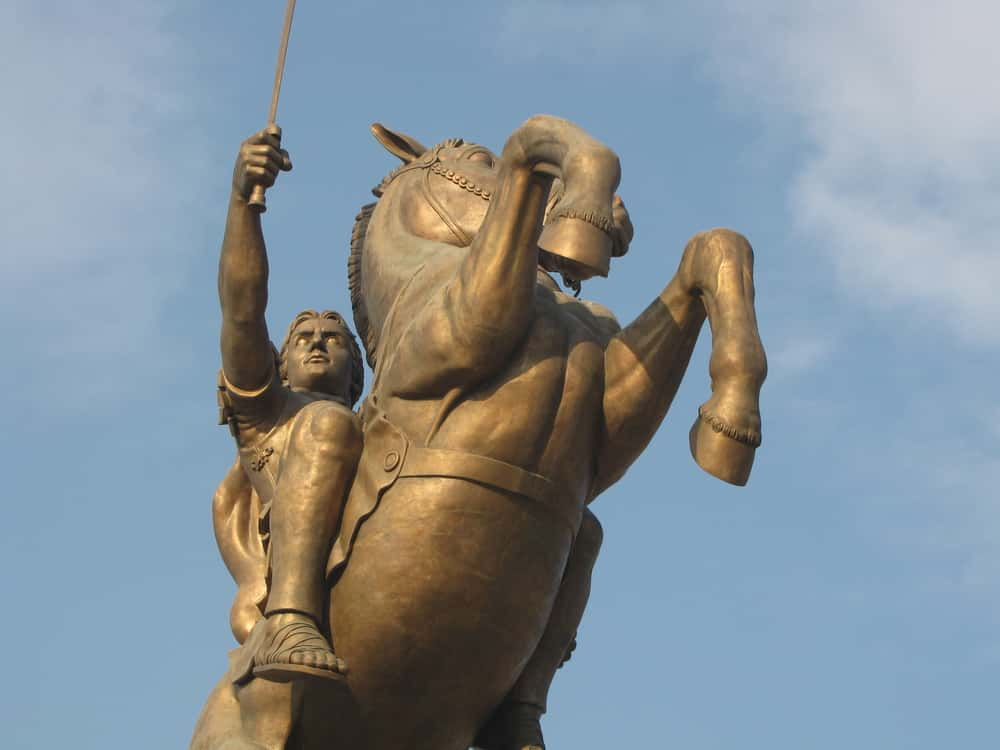 Shutterstock
Shutterstock
46. The Sport of Drinking
One day, Alexander the Great decided to organize an Olympics in India to honor a fallen comrade. Not being familiar with Greek sport, Alexander changed his plans, and created a wine-drinking contest instead. Unfortunately for the contestants, none of them were used to drinking alcohol, and many of them died on the spot.
The winner, a Greek soldier by the name of Promachus, drank the equivalent of 13 litres of wine and died of alcohol poisoning a few days later.
47. The North Remembers
The Vikings were raiders from Scandinavia who, during the period now called the Viking Age, terrorized coastal Europe for hundreds of years. Thanks in part to some fanciful representations, Vikings have a very specific image today—one that is sometimes accurate, and sometimes way off. Many stories of Viking brutality are disturbingly true, but their culture was far more nuanced than many people assume.
48. That's No Merchant
The first recorded Viking raid on England was written about in the Anglo-Saxon Chronicle. In 789 AD, a group of Norsemen landed on the Isle of Portland in Dorset. A royal official situated there mistook them for merchants, and he asked them to pay taxes on their goods. Instead, the Vikings murdered the man. This was before the English knew what to expect from the Vikings, but they'd soon learn that all too well.
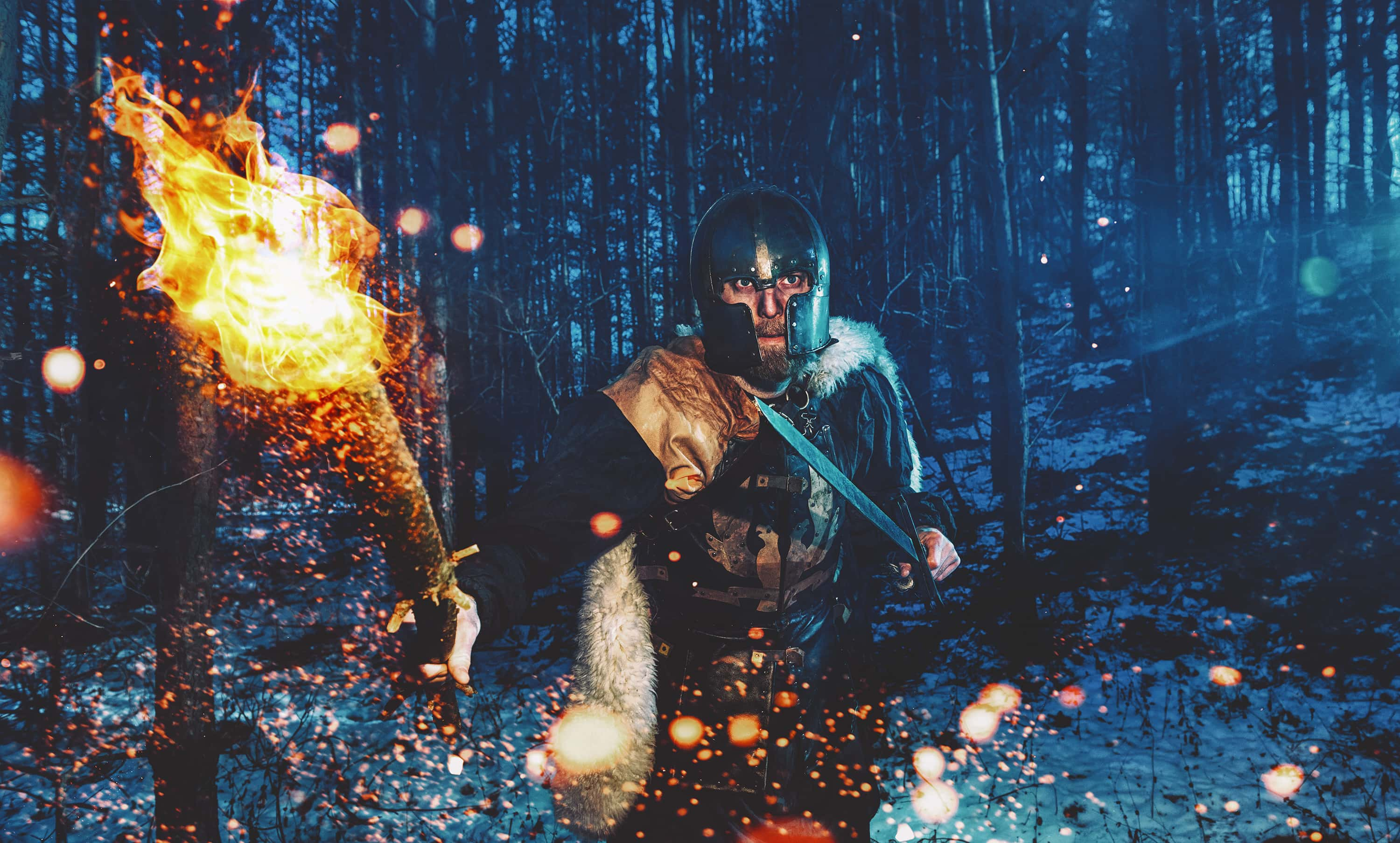
49. I'm Sailing Away
One of the most enduring images in our imaginations of Vikings is of their funerals, where a body is put on a boat that is then set on fire and pushed out to sea. Unlike many myths about Vikings, this one is at least partially true, but it was reserved for the extremely wealthy. In some cases, the boats were pushed out to sea and burned, and in others, the Viking was placed in the ship and the whole thing was buried along with personal possessions and even sacrificed thralls.
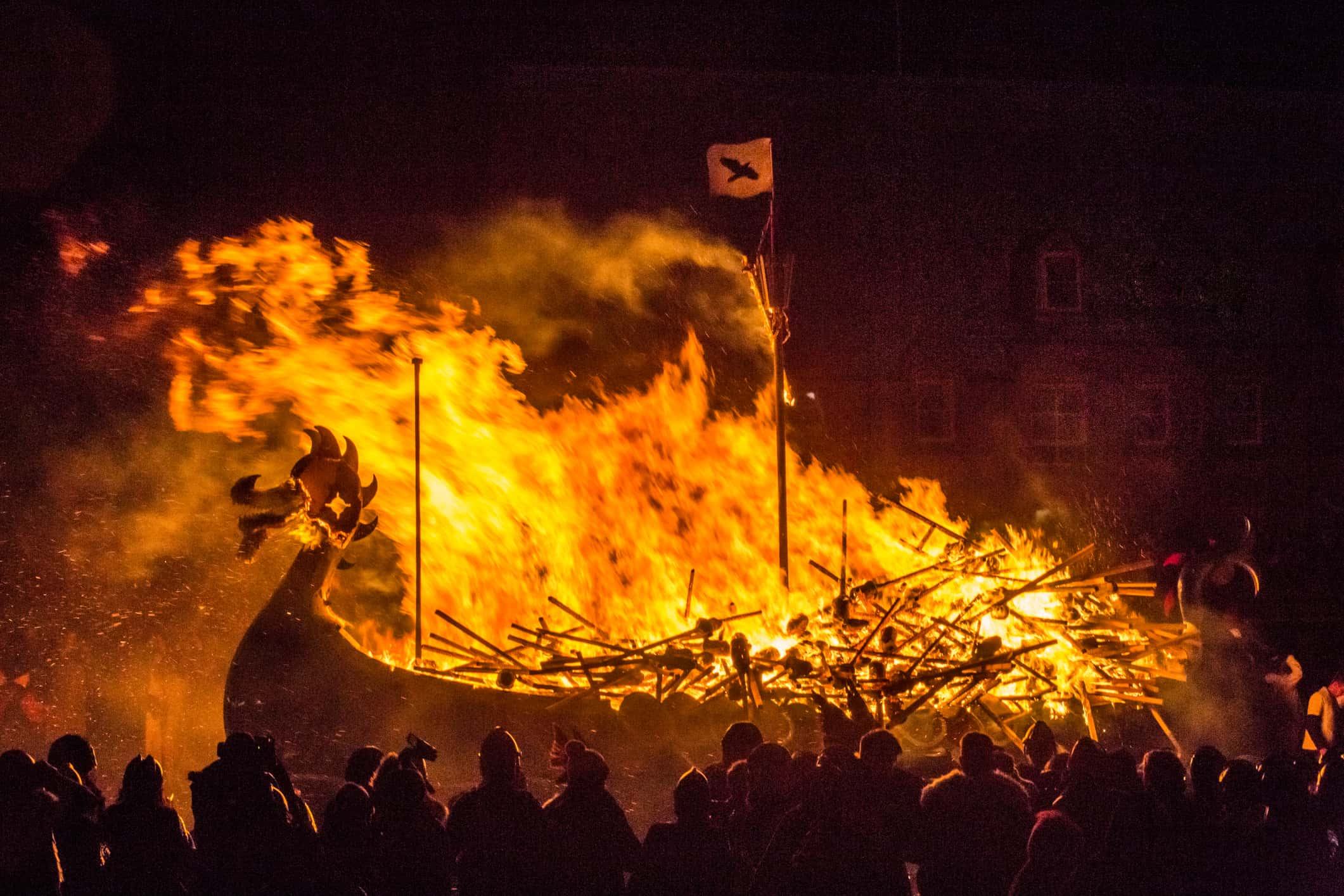
50. Be a Good Sport
To no one's surprise, the Vikings were big into a lot of different sports, but their activities looked a little different from today's athletics. Some of the preferred Viking pastimes? Wrestling, fist fighting, stone lifting, knife throwing, horse fighting, and mountain climbing. What else would you expect of the Vikings?
 Getty Images
Getty Images
51. It's Called Fashion, Look It up
We think of the Vikings as brutal, dirty men who spent all their time raiding and pillaging, but there was a lot more to Viking culture than that. In fact, Viking nobles were quite the dandies: They would show off their wealth with silk clothes and fancy jewelry, and kept themselves well groomed with nice haircuts.
 Wikimedia Commons
Wikimedia Commons
52. Free Love, Man
The Viking rules of family and coupling were much less strict than in most societies. Women were free to live and sleep with a man without marrying him. In fact, she was still allowed to do it if the man was married to someone else! There was also no concept of "legitimate" or "illegitimate" children. Whether born in or out of marriage, the child had the right to inherit their parents' property.
 Pixabay
Pixabay
53. To Valhalla
The religion practiced by the Vikings is known as Norse Paganism. In old Norse Mythology, the Aesir are the principal gods of the pantheon, including fan-favorites Odin and Thor. The Vikings were fierce warriors, and part of that was baked right into this religion—they believed if they died in battle, the might be selected to join Odin in the majestic halls of Valhalla to prepare for the events of Ragnarok.

54. Clean Freaks
Usually when we think of Vikings, we think of big unkempt men with long beards. However, Vikings were actually very hygienic people, especially for the time period in which they lived. Tweezers, razors, combs, and even ear cleaners made from animal bones and antlers have all been found in Viking excavation sites. Who says you can't look fabulous while raiding and pillaging?
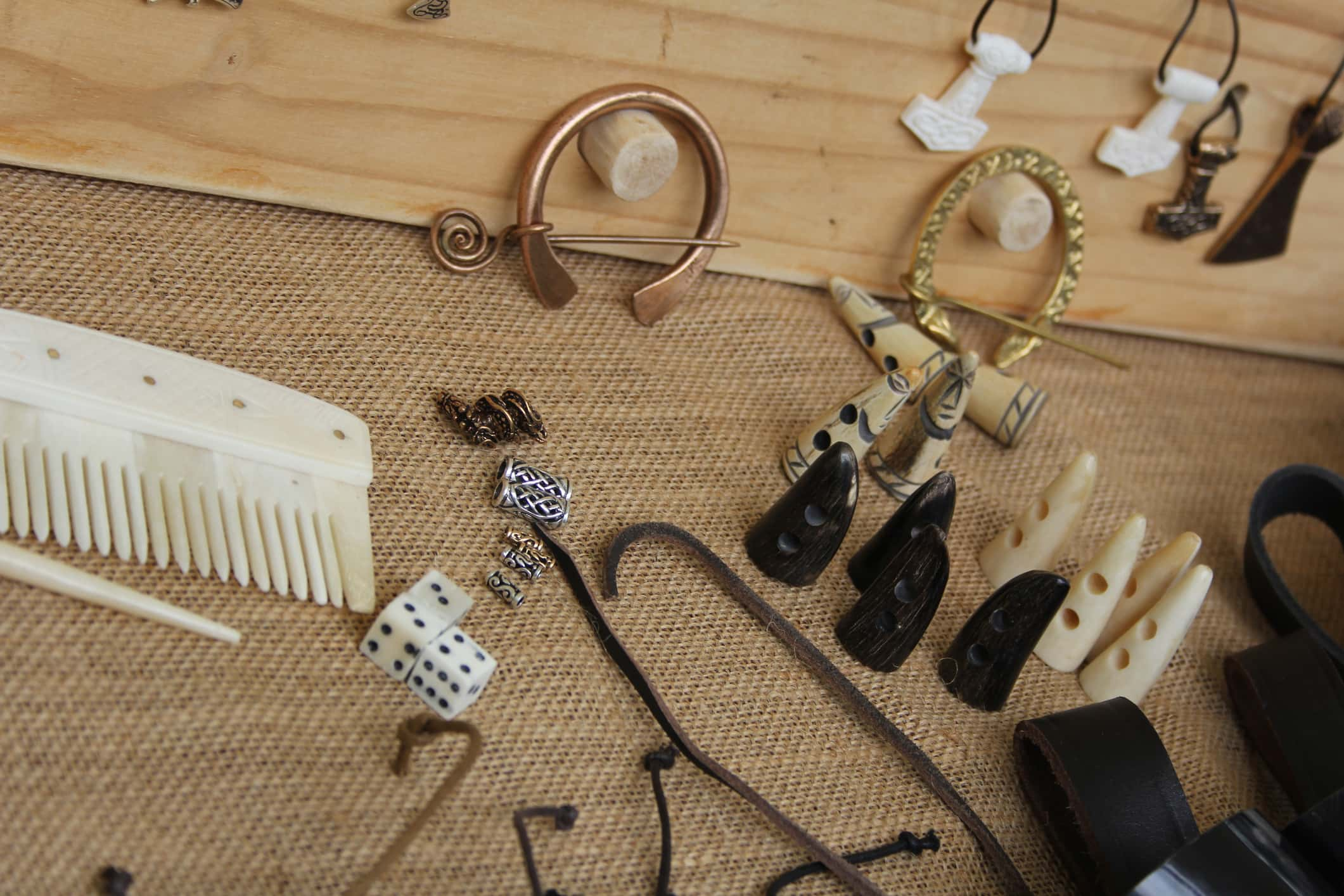
55. Odd Pets
Some Vikings enjoyed keeping pets, including cats, dogs, falcons, peacocks, and even bears. Bear cubs were trapped and then raised by Viking families. Brown bears were widely kept as pets, but polar bears were considered to be for noblemen only. Additionally, if a bear got loose or injured a person, the owner could face stiff fines and penalties. Eventually, this practice was outlawed because the bears became a nuisance. That's one word for it.
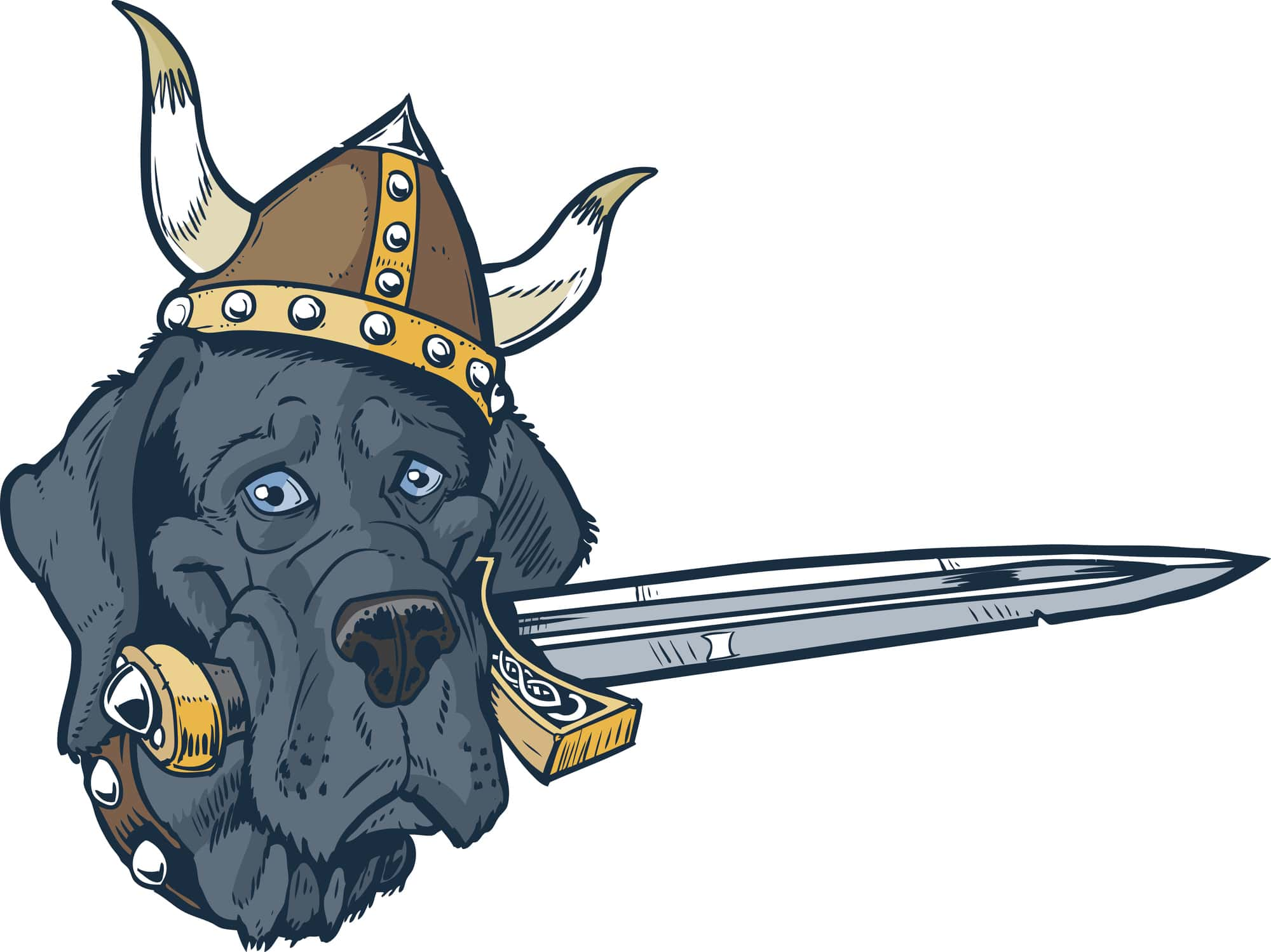
56. Women’s Rights
It's no great secret that women got the short end of the stick in many historical cultures, but Viking women actually had a lot more rights than most women in the world at the time. Women in Viking society had the right to divorce their husbands and could own and inherit property, something women in other cultures could only dream of.

57. Blondes Have More Fun
When people think of Scandinavians today, they mostly think of blonde hair. However, while blonde is common in the region, there are plenty of brunettes and redheads as well. Perhaps part of the reason why we so associate blonde hair with the Vikings is that many men with dark hair would use a strong soap to bleach it to a lighter shade, sometimes lightening their beards as well. This was partly a fashion statement—even the Vikings weren't immune to vanity—but it also helped to combat lice.
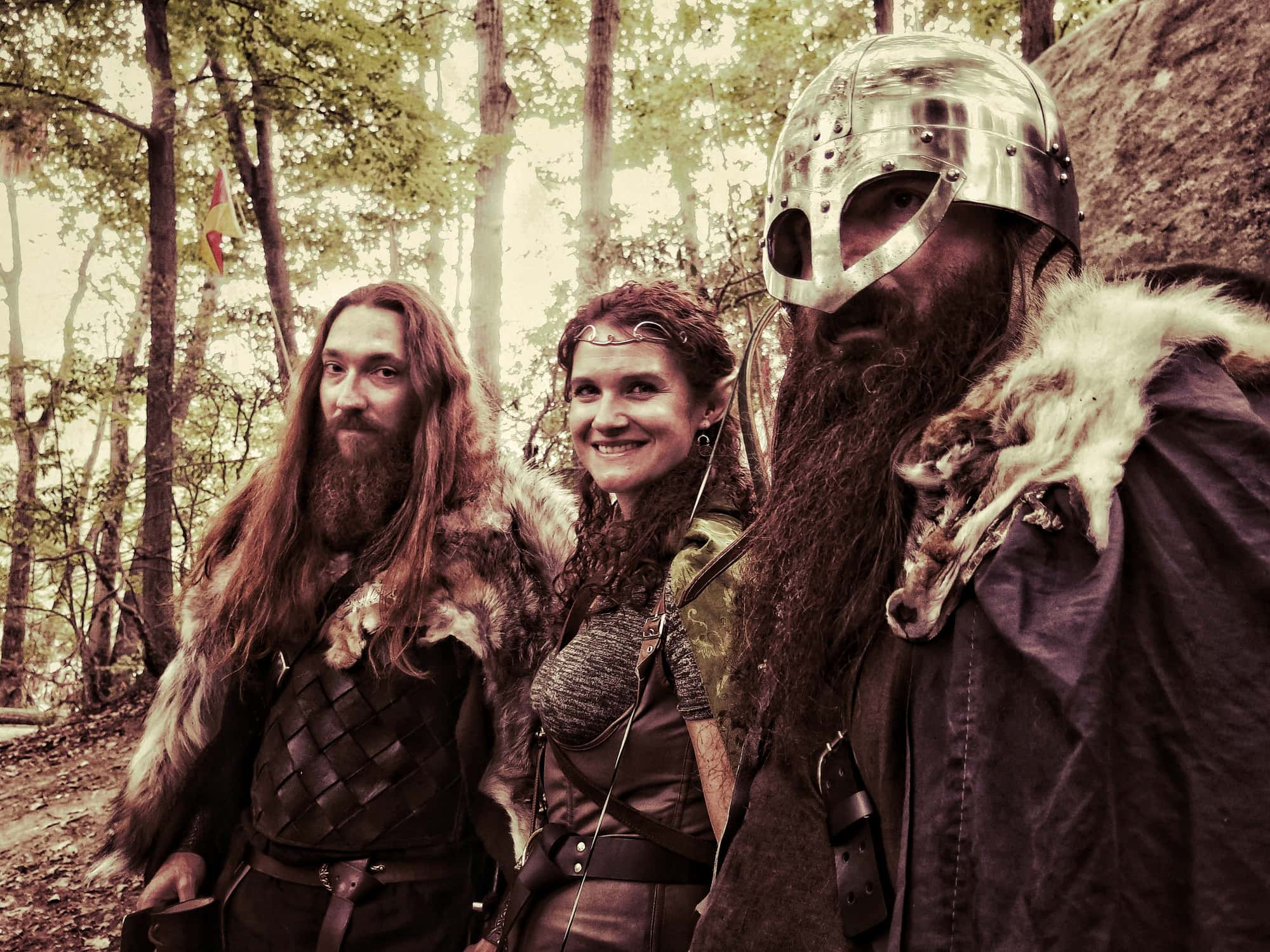
58. End of an Age
No one is sure what ended the Viking culture, but it is believed that they were eventually converted to Christianity, which eventually led to the end of the Viking way of life.
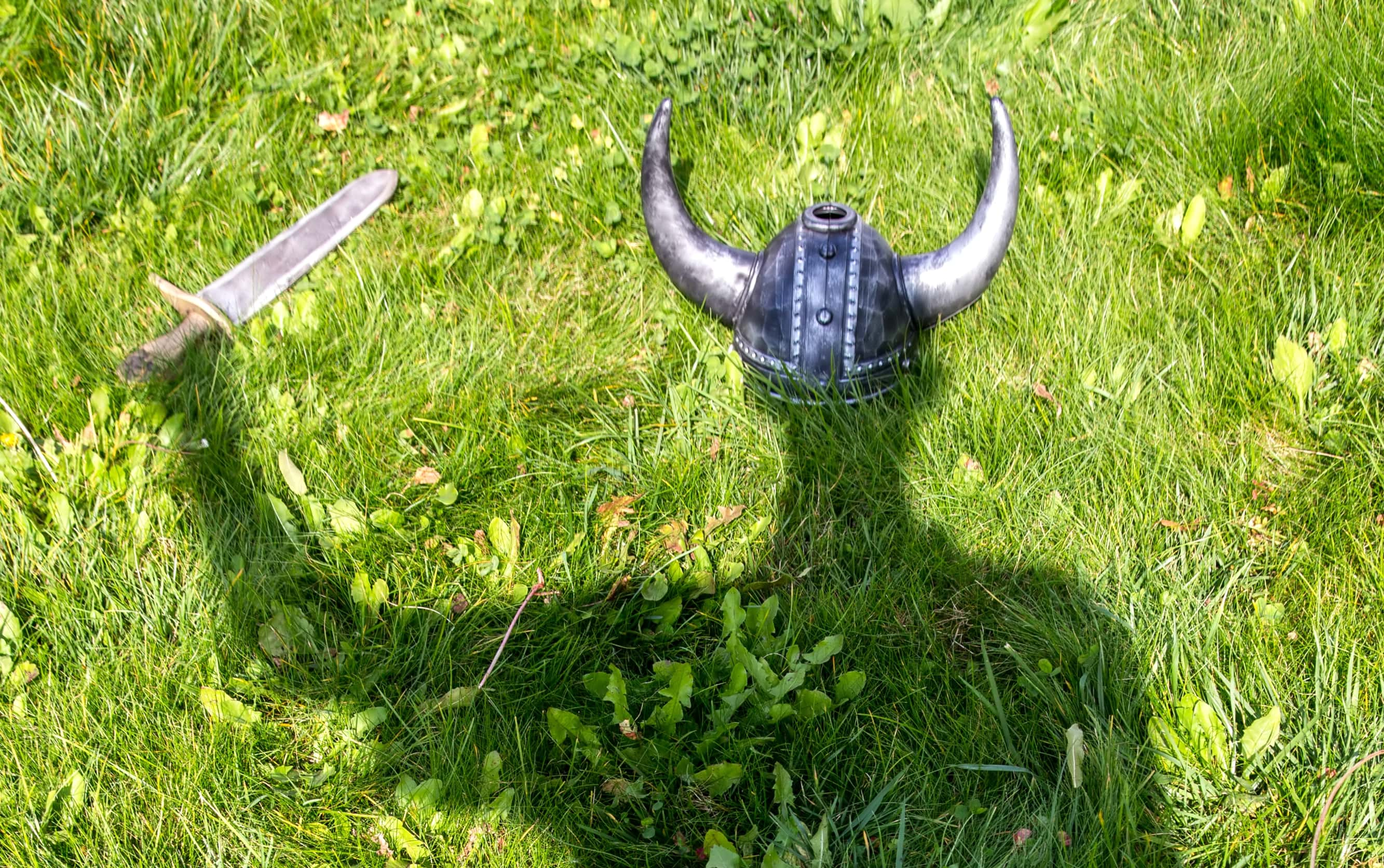
59. Scourge of God
Viking raids on Christian settlements were so brutal that many of the monks and priests who lived in them thought that the Vikings were sent from God to punish them for their sins.

60. Bad Parenting Skills
Having Viking parents could be a real hazard to your health. Vikings would often cast their own children out if they were deemed too weak or sickly.
 pixabay
pixabay
61. No Horns About It
Despite what you’ve seen in the movies, Vikings did not actually wear horned helmets. The image of the horned-helmet Viking is from an 1876 production of Der Ring des Nibelungen, a German musical drama. Archaeologists have found one Viking helmet with horns, but it was ceremonial and was never used in battle. By all accounts, when Vikings charged into battle, they did so with nary a horn to be seen.
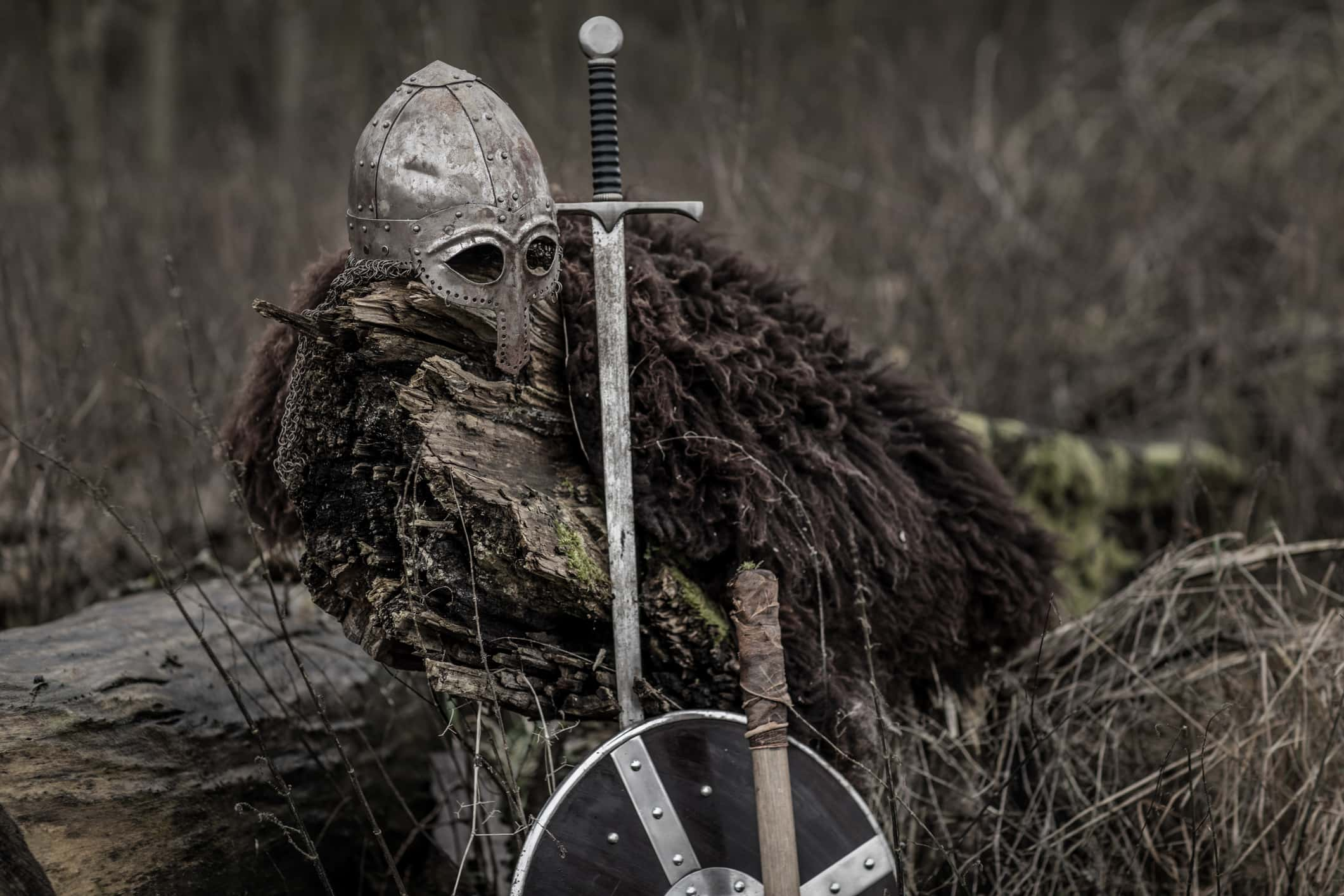
62. Wordsmiths
Some of the words we use today come from the Vikings. Words such as: anger, hell, ugly, weak, skull and slaughter are all descended from Norse language. More unexpectedly, we can also thank the Vikings for the words cake, freckles, husband and wife.
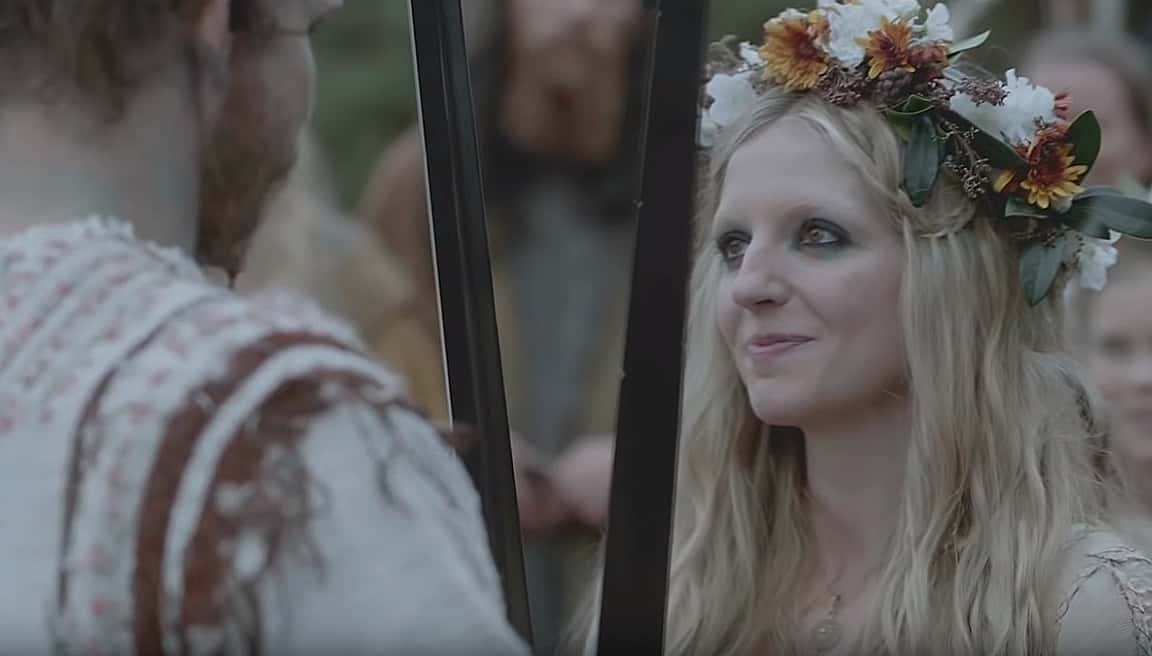 Vikings
Vikings
63. Vikings Run Berserk
Ever feel like you just need to go berserk? Well, you can thank the Vikings for that! Berserkers were particularly scary Viking warriors who would go into battle in a trance-like state of fury. These fearsome warriors were noted in Icelandic histories and were said to wear bear or wolf skins into battle instead of armor.
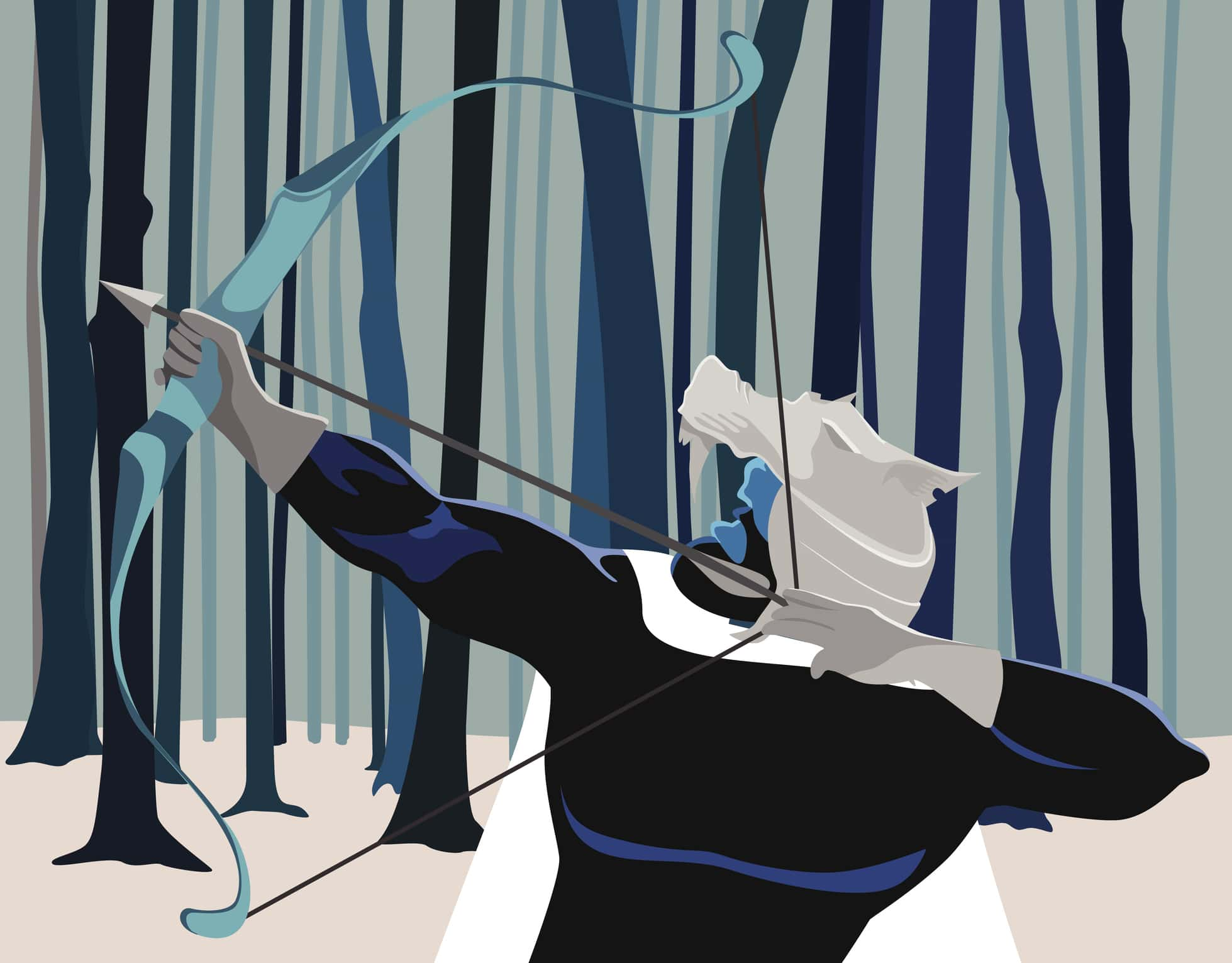
64. Live by the Code
The fearsome samurai followed a code known as bushido, which translates to English as “the way of the warrior.” It was (and is) similar in its ethics to the notion of chivalry in the European tradition.
65. What's in a Name?
In Japanese, samurai are often simply called bushi or buke. The term "samurai" is thought to come from the Japanese word "saburau," for "those who serve in close attendance to the nobility."
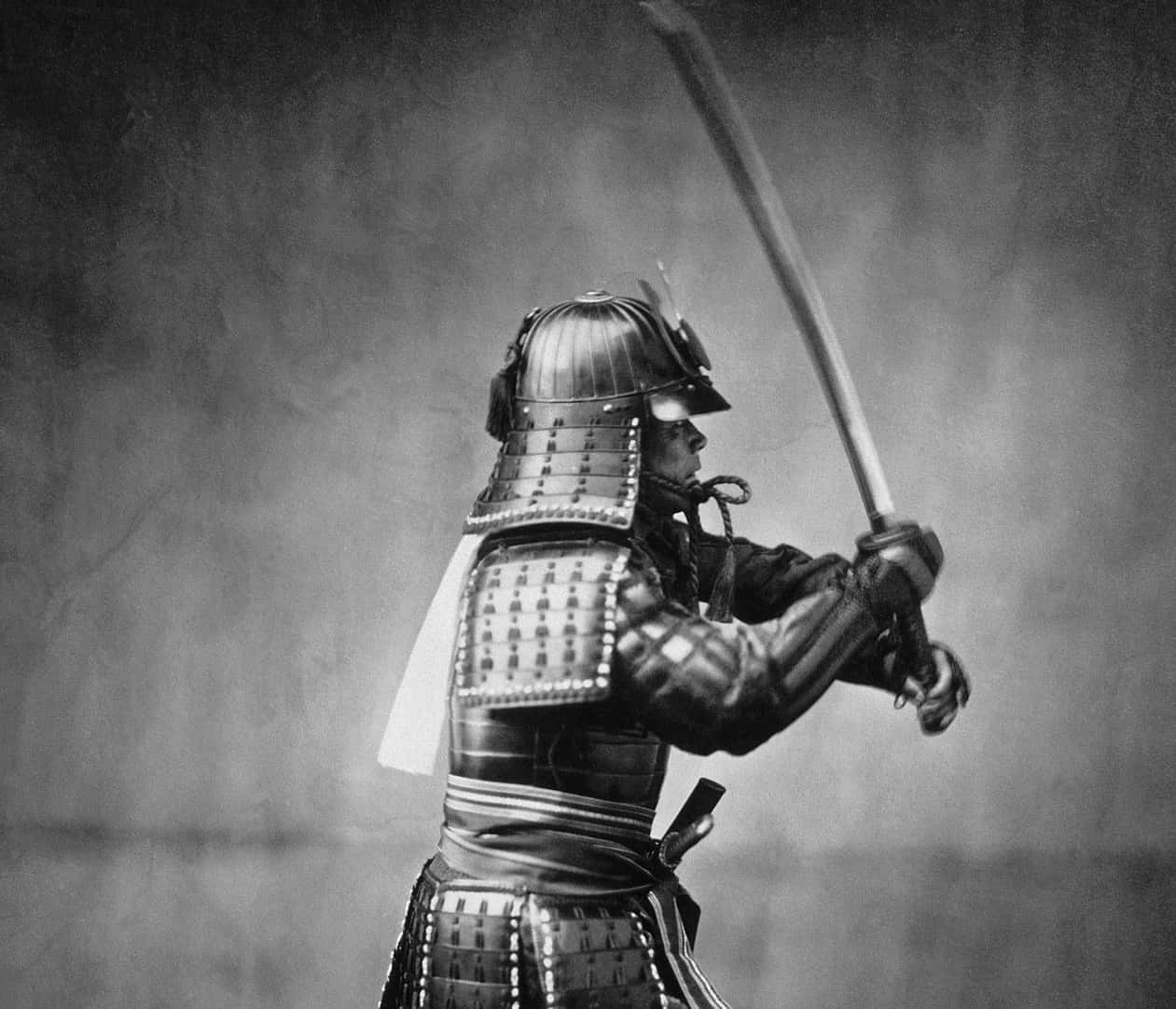 Wikipedia
Wikipedia
66. Bad Boys Bad Boys, Watchu Gonna Do
Some samurai lived on the edges of Japanese society. If a samurai didn't have a lord or master—either because their master had died or the samurai had fallen out of favor—they were known as a ronin, a Japanese expression for a "wandering man." Because a samurai was, according to the bushido, supposed to kill himself after his master's death or if he dishonored himself, ronin were the bad boys of feudal Japan, and flouted social codes.
67. The Clothes Make the Samurai
Samurai were style-makers, influencing the fashion of the era. Although their clothing was elaborate, every aspect of it was designed to fit their needs as warriors. Their regular outfit consisted of wide hakama trousers and a long-sleeved vest, collectively called a hitatare. These robes provided a wide range of movement.
68. The Hair up There
Perhaps the most distinctive aspect of samurai fashion was the chonmage hairstyle, which we recognize today as the topknot. Although the look does have an aesthetic appeal, the original intention of those who wore it was decidedly practical: the high knot of hair at the back of the head helped to keep a samurai's helmet on while he was engaged in combat.
69. A Comfortable Shave
In addition to the topknot, samurai would often partially shave their head to make it more comfortable to wear a helmet. Herein we find the difference between the hairstyle choices of a true samurai and the hilariously hipster guy you see in every single Starbucks in the world: while the samurai were more than willing to part with some hair (and style) in exchange for battle-preparedness, most of today's topknot wearers would sooner part with a limb than their carefully maintained locks.
70. Memories of Onna-Bugeisha
Although “samurai” is a strictly masculine term, there were Japanese female warriors in the ruling class who were counterparts to samurai. These women were called onna-bugeisha, and they would participate in combat along with their male counterparts.
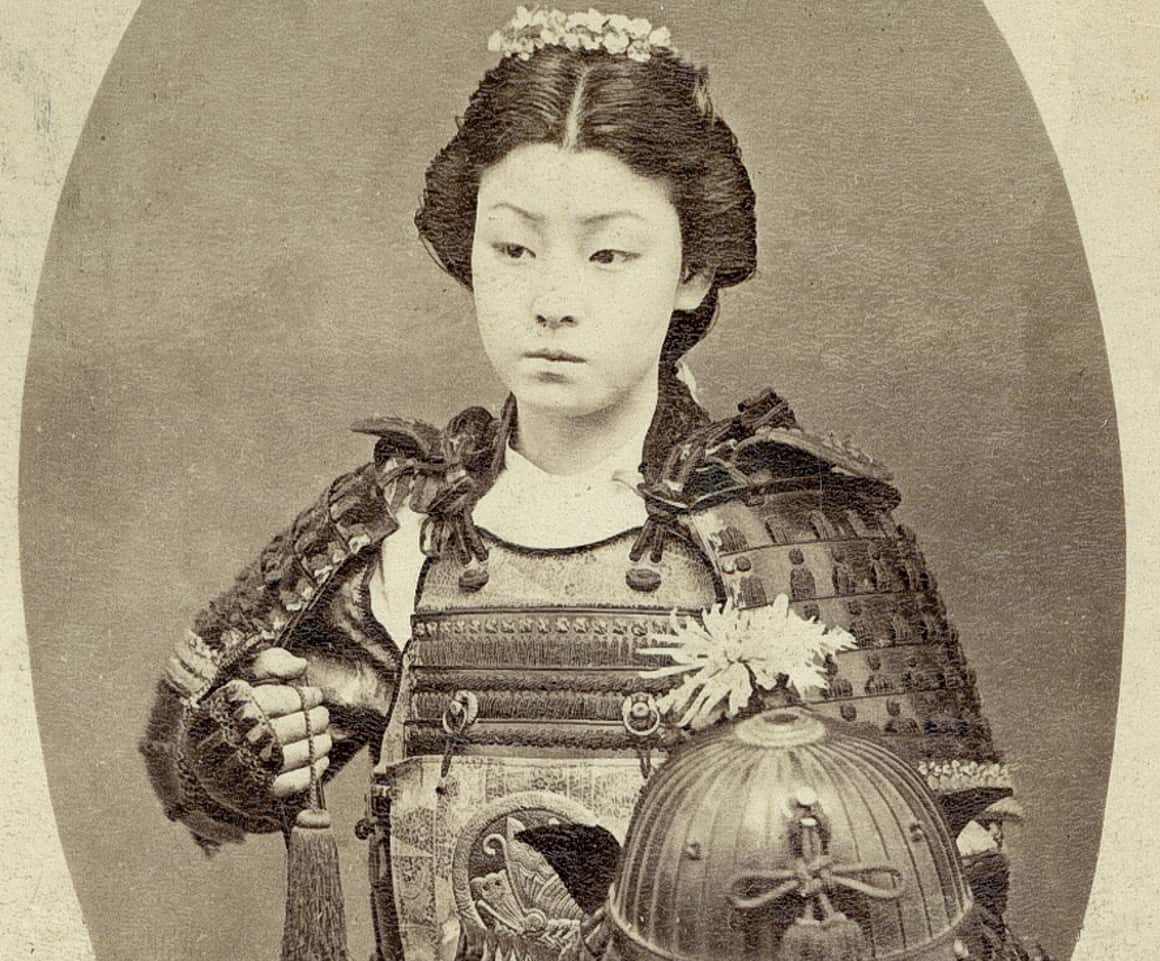 Wikimedia Commons
Wikimedia Commons
71. No Blood Shed
Empress Jingu was said to be one of the first onna-bugeisha. After her husband died during combat, Jingu didn't just sit at home grieving, oh no. Instead, she led an invasion to Korea in 200 AD. Legend says that she and her armies defeated the Koreans without spilling even a single drop of blood. Although the veracity of this story, and even of Jingu herself, is certainly questionable, Jingu came to embody the ideals of the onna-bugeisha.
72. Just the Tip
The weapon of choice for a female samurai was the naginata, a spear with a curved, sword-like blade that was incredibly versatile, but also relatively light.
73. Hide Your Head
The kabuto helmet was perhaps the most complicated part of a samurai’s armor. Its bowl was made of riveted metal plates, the face and brow were protected by armor that tied around behind the head and under the helmet, and the neck guard protected the wearer from arrows and swords. This is good, because there’s not much that can ruin a samurai’s day more than an arrow to the neck.
Many samurai helmets featured ornaments and attachable pieces, including masks with demonic features that served both to protect the face and frighten the enemy.
74. Just for the Neck of It
The neck guard on Darth Vader’s helmet was actually inspired by the samurai’s kabuto helmet.
75. That Special Student-Teacher Bond
Like the Spartans, samurai were very open minded when it came to same-sex relations. In fact, the practice, known as wakashudo, of an experienced samurai forming a relationship with a youth-in-training was encouraged and extremely common.
 Pixabay
Pixabay
76. Hanzoff My Shogun
Hattori Hanzo is one of the most famous samurai of all time, and he is known for saving the life of the future great shogun Tokugawa Ieyasu, leading him through enemy territories, some say with the help of local ninjas. The samurai was well-rewarded, and became a close confidante of Tokugawa when he rose to power as shogun.
77. Die by the Code
If a samurai failed and was captured by the enemy, they were expected to commit ritual suicide in a process known as seppuku, which involved self-disembowelment by his own hand followed at times by decapitation by an attendant. This was considered an extremely honorable way to die...albeit somewhat messy.
78. An Evening's Entertainment
However, there were even darker uses for seppuku. It was also used as a form of capital punishment if a samurai had gone against the bushido or shamed himself in some way. This would bring about a long ceremonial seppuku, with the disembowelment often being done publicly in front of a large group of spectators.
79. The Girls Want in on the Fun
Women, particularly those women married to samurai and/or who were of the samurai class, also practiced ritual self-sacrifice if their husbands had brought dishonor to their family or if an enemy was about to descend on them. In these cases, many Japanese women preferred to cut their own throats for a quick and sure death, and often tied their knees together before the deed so that they would fall in a graceful position.
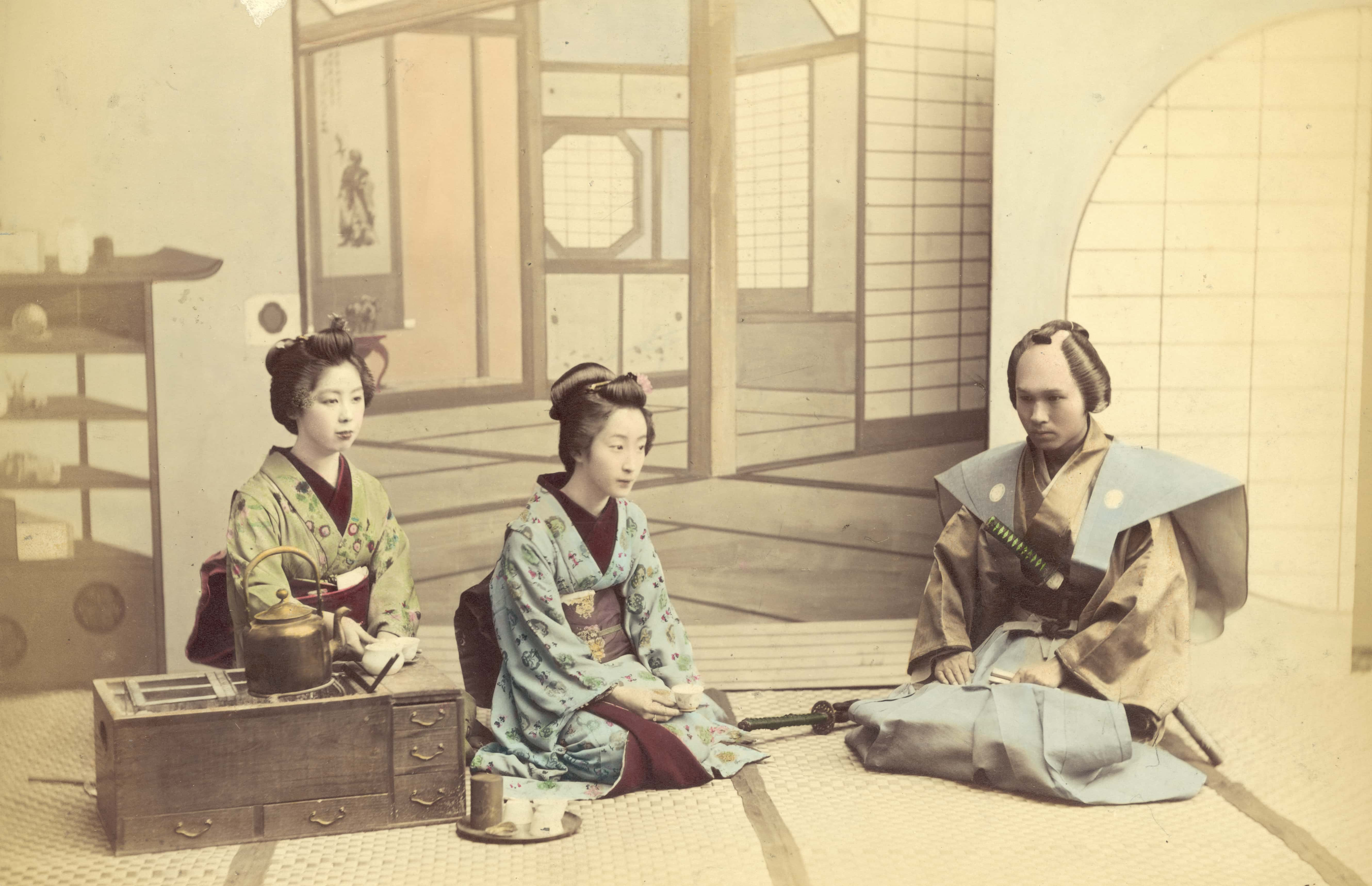
80. Sisterly Love
One of the most famous female warriors of the samurai class was named Nakano Takeko. Nakano was the eldest daughter of the family, and began training in martial arts from an extremely young age to learn the way of the warrior. In the Battle of Aizu in 1868, Nakano was the leader of the independent women's army, or the Joshitai.
Later in the same year, when she was leading the Japanese Imperial Army, she suffered a mortal wound from a shot in the chest. Refusing to let her enemies capture her head as a trophy, Takeko asked her sister Yuko to cut off her head and bury it. Nakano's head now rests under a pine tree at Hokai Temple in Aizubange, Japan.
 Pixabay
Pixabay
81. Revenge Is Best Served Bloody
Although ronin were often outcasts in feudal Japanese society, one group of ronin committed a feat so great and so loyal, it cemented their place in the legends of the samurai. The 47 Ronin were a rag-tag group of hard-hearted men who sought revenge after the death of their master. In the 18th century, a daimyo named Naganori Asano was forced to commit seppuku after he assaulted a court official named Yoshinaka Kira.
Naganori's band of now-bereft samurai waited and plotted for over a year before exacting their revenge, killing Yoshinaka. Of course, after they did so, they were finally allowed to perform seppuku in the name of their honor and that of their dead master. Even though 47 men died that day, they were quickly immortalized in Japanese history.
82. East Meets West
Though Western samurai were extremely few and far between, we do know of a small handful of men who were granted the privilege to become samurai and take up the way of the warrior. One of them was William Adams, who started off as an English sailor working for the Dutch East India Company. In 1600, his ship was one of the only few vessels to survive the journey to Japan, and soon after Adams and his second mate Jan Joosten settled in the country.
Adams became an advisor to the reigning shogun, Tokugawa Ieyasu, and he (along with Joosten) was soon given the right to call himself a samurai—but it came at a high cost. Adams had a wife and children back home in England, but Tokugawa refused to let him leave Japan, re-naming Adams as "Miura Anjin" and declaring that "William Adams" was dead and that his old wife was effectively a widow.
Adams did indeed stay in Japan, and even remarried, but he never forgot his widow, and still sent her payments to help support her across the ocean.
83. Let’s Go Back Even Further
Some believe that knights go back to the Roman Empire. We all associate knights with their horses, and the Romans were very well known for their equestrian order, the Ordo Equestris. There’s no absolute link between the order and knights, but there are too many similarities to count any possibility of influence out.
84. My Knight!
There have been hundreds of portrayals of medieval knights in popular culture, but how many get it right? You probably have a vision of an army of men all gathered together wearing armor and wielding swords and shields, all while maneuvering on a horse. Well, you’re right, but not just any man could apply to be a knight. Only the wealthy were able to afford such an honor, as all of the above came at a hefty price tag.
85. Vowing Their Allegiance
The Knights Templar, one of the most secretive sects of knights, set up their headquarters on Temple Mount in Jerusalem, with help from the ruler at the time, Baldwin II. That was when they changed their name, and vowed their service to the Christians coming into the city. It wasn’t until 1129, however, that they received formal support from the Catholic Church.
 Pinterest
Pinterest
86. Driving out the Defenders
The Knights Templar were driven out of Jerusalem in the latter half of the 12th century, with most ending up in Paris. There, they were persecuted and tormented. Some were even burned alive. They officially disbanded in 1312, though reluctantly. Some believe the survivors went underground, and even now there are rumors that the Templars still exist.
87. Hell Hath No Fury
Not all women need protecting. History shows some female knights who stood their ground and fought alongside the men. Case in point: Countess Petronella of Leicester and Nicolaa de la Haye. Countess Petronella fought with her husband against Henry II, while de le Haye fought alongside William Marshal against the French.
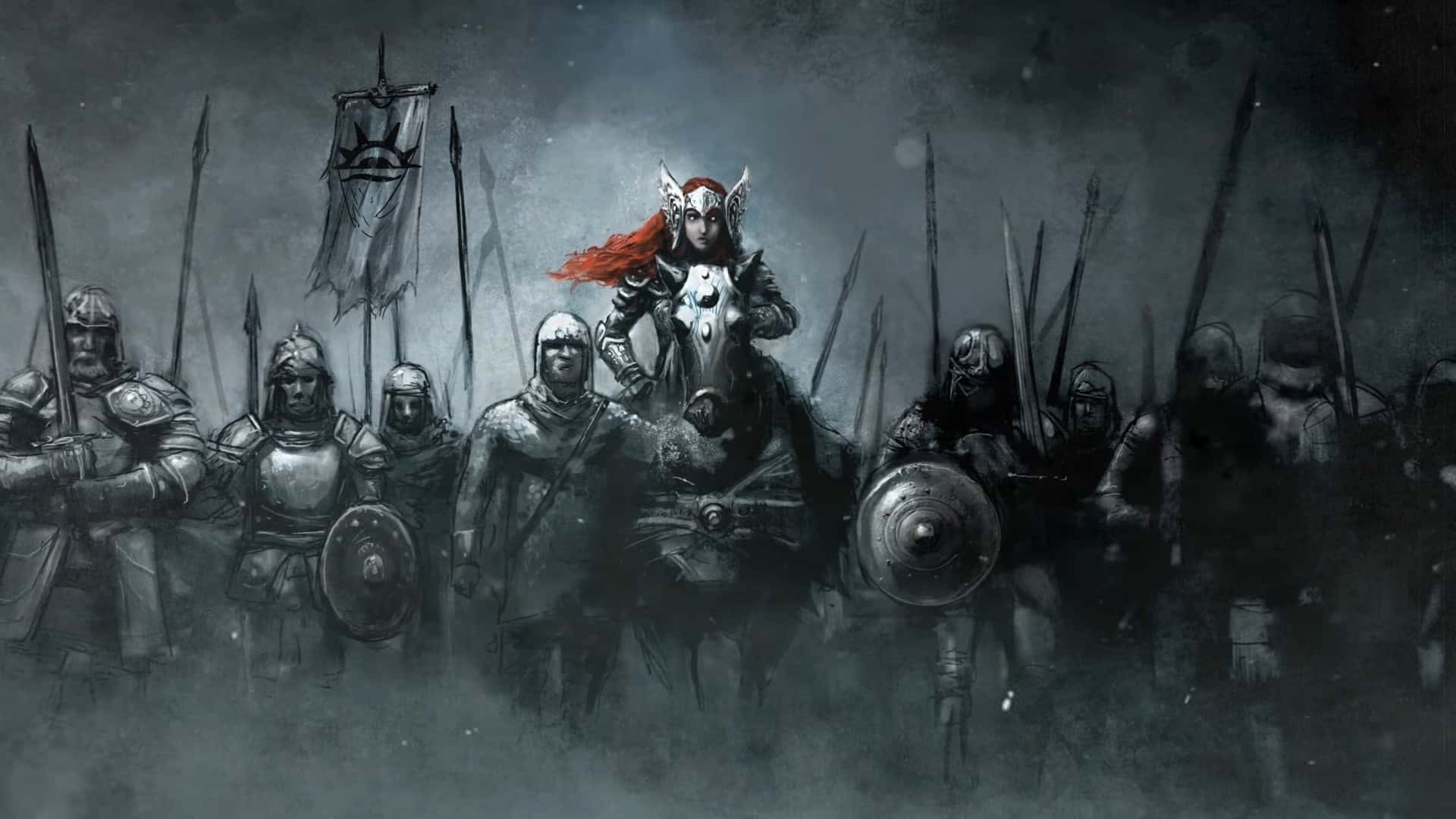 Tokkoro
Tokkoro
88. That Doesn’t Sound Nearly as Fun
You would think that tournaments were like the Olympics of the Middle Ages, with a number of different events. In fact, tournaments lasted for hours for days, and were basically just enactments of battles.
89. Chivalry Is Dead
Tournaments also helped make knights famous and richer. They would steal the horses of their fellow knights and even took other knights hostage, demanding ransom money!
90. Score One for the Defenders
Castles were made with knights in mind. Those spiral staircases were made that way for a reason. Just imagine trying to wind your way up one to attack, wearing all of that armor. Not to mention, you were going clockwise up the staircase (almost all castle staircases turn the same way), which meant your left side was exposed. Most knights fought with their swords in their right hand, which gave the defending knights the advantage.

91. Let's Take It Way Back
The King of the Franks, Charlemagne, was the first to introduce the world to a knight, all the way back in the eighth century. He needed reliable soldiers who were able to fight on horseback in battle across his region.

92. Like a Ninja
Thanks to martial arts films, legendary stories, and 15th-17th century feudal Japan, ninjas have become a huge part of popular culture. Ninjas were used in unconventional or guerrilla-style warfare. This was frowned upon by the Samurai class, who felt ninjas violated widely observed standards for honorable warfare.
93. Seeing Stars
The word shuriken did not only describe the well-recognized ninja’s throwing stars. Shuriken was also used to describe any object or tool that the ninja would throw, such as knives or darts.
94. Born to Be a Ninja
The most skilled ninja clans were from the Iga and Koga regions in Japan. These ninja clans flourished in their skills, in part because of their geographical location. They were isolated between two mountain ranges, which ensured their protection.
95. One Powerful Lady
Mochizuki Chiyome was one of the most famous female ninjas of her time. So the legend goes, she managed to recruit 300 women to form an underground espionage training operation. On the surface, it seemed that Mochizuki was running an orphanage for young women, but she was really training ninjas assassins and spies.
 Shutterstock
Shutterstock
96. Jack-of-All-Trades
Training to become a ninja wasn't all throwing stars and setting fires—wannabe shinobi had to undergo all kinds of training to gain the title. They had to learn about scouting and survival, poisons and explosives, but they also had to gain a least a cursory knowledge of various professions, because they could end up needing to take all kinds of guises in their work, and they would need to be able to pass.
97. The Message Is in the Rice
Ninjas created a system passing covert messages using colored rice. Each specific rice color had a different meaning.
98. Deadly Hair Accessories
Women ninjas liked to wear beautiful ornate hairpins called kanzashi. Unlike the hairpins innocently worn by most girls, women ninjas employed their kanzashi for multiple deadly uses. Hairpins would be sharpened to be used as a weapon, or dipped in poison for assassinations. So no, they were not just another pretty face.
99. Watch Those Nails
Women ninjas didn’t just weaponize their hair adornments, as nail accessories proved an easily concealed weapon too. Women ninjas would attach deadly metal nails to their fingertips. These razor-sharp weapons were called neko-te, meaning cat hand.
100. Move Over, Pinocchio
Although ninjas used an assortment of weapons and tools, one of their most important items was a live cricket, which was used to aid them in their covert missions. Crickets would be induced to chirp with the use of a special mix of chemicals. The chirping of crickets would then cleverly mask the footsteps of a ninja, so they could maneuver undetected.
 Pxhere
Pxhere
101. Secrecy for Survival
Ninjas kept their skills and knowledge a closely guarded secret, even from one another. This secrecy is what kept the ninjas alive as their enemies were looking for them.
102. A Bit Overdressed
The concept of a ninja dressed all in black with a mask covering their face is a modern-day concept. Ninjas were trained to blend in with the crowd, and someone wearing all black would stick out like a sore thumb. Anonymity was key to a ninja’s survival.
103. All in a Name
The word ninja didn’t come into use until the 20th century. The ninjas were typically called Shinobi, meaning covert agent, a word derived from the Japanese "to steal away" or "to hide."
104. Not My Job Description
The samurai felt that espionage was beneath them, leading them to employ ninjas to do their dirty work.
105. Guild Wars
Though they didn't share the same strict hierarchy as the Samurai, ninjas still had a very specific organizational structure. What began as ninja families were eventually formed into larger guilds, which each controlled different territories and had a ranking system consisting of jonin (upper men), chunin (middle men), and genin (lower men).
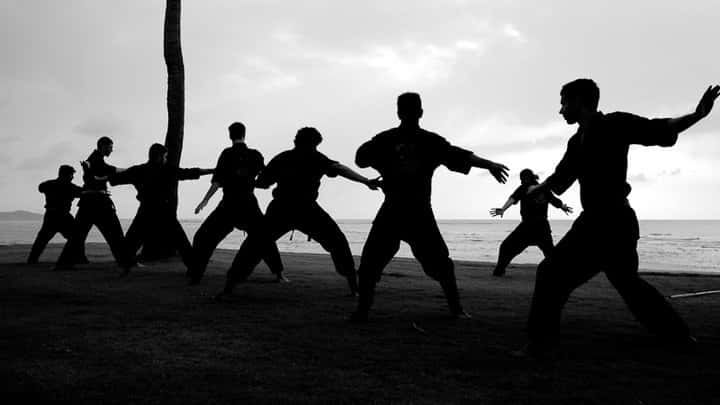 Flickr
Flickr
106. My Way or the Highway
One needed to have a certain understanding when hiring shinobi for an operation. Once, a group of ninjas was hired to set a castle on fire to create confusion before an assault. However, the military commander tried to force the ninjas to follow his orders—something they weren't exactly fond of. They told him that he didn't understand their ways, and they threatened to abandon the mission entirely unless he let them do it their way.
He was forced to sit back and let them do their thing—and good thing he did. The fire was started in the way the ninjas wanted, and the assault ended up going off smoothly.
107. Fight Fire With Fire
Ninjas could be extremely effective agents of chaos, but eventually, people began to develop various ways to counter their tactics. Men who knew they might be the targets of assassination attempts ensured they could defend themselves at all times, even hiding weapons in the floorboards of their bathrooms. Hidden traps were also installed in fortifications so that ninjas couldn't simply sneak in unannounced.
108. Dark Medicine
Ninjas would also learn about various medicines in their training. They allegedly had their own specific remedies that were unknown to outsiders. For instance, during the Battle of Sekigahara, a general was injured by gunfire, and he was treated by a ninja. The source states that the ninja gave him something called "black medicine" to stop the bleeding. I don't know what that could possibly mean, and I don't think I want to.
109. Spooky Spies
Some ninjas were known to use a technique called bakemono-jutsu, or "ghost technique" in order to infiltrate enemy fortifications. In one such instance, a group of ninjas stole a lantern adorned with the crest of the enemy. They then made several copies and used them to simply walk into the enemy castle without a fight. Once they made it past the gate, they set the castle on fire, turning the tide of the fight for their side.
110. A Japanese Robin Hood
Ishikawa Goemon was known for robbing the wealthy and giving the fruits of his exploits to the poor. Born in 1558, he was believed to be a ninja apprentice of the Iga clan before becoming a runaway ninja. He was remembered for his "Robin Hood" activities, and was publicly boiled for a failed assassination attempt.
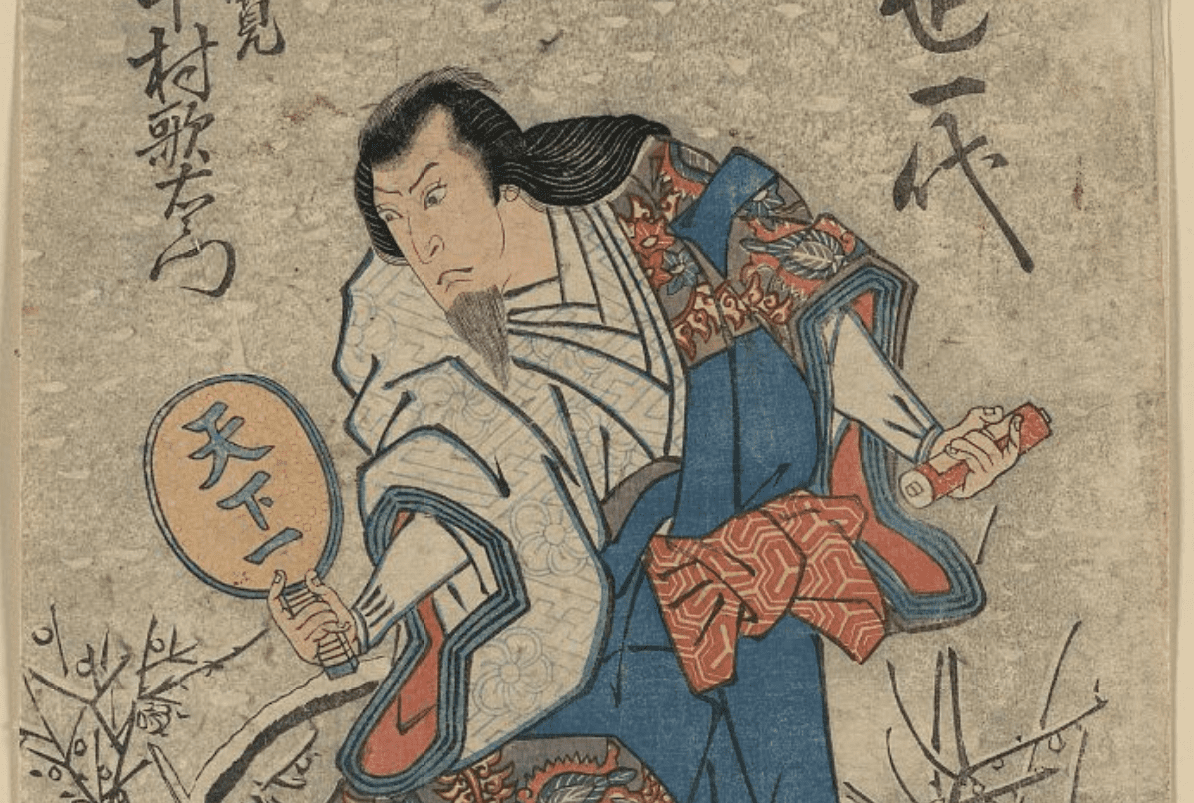 Picryl
Picryl
111. Founding Class
The Red Army was founded in 1918, shortly after the Russian Revolution. It was formed as an army of the working class, and all Russian citizens 18 years or older were eligible to join. Because most of its early members were peasants, the families of soldiers were guaranteed sufficient food rations as well as assistance with farm work during the time their family members were serving.
112. Hot to Trot
Leon Trotsky, one of the leaders of the Russian Revolution, was also one of the first commanders of the Red Army. In fact, Trotsky is credited with transforming the Red Army from a small, loosely connected group of untrained peasants into a fiercely loyal and professional military machine.
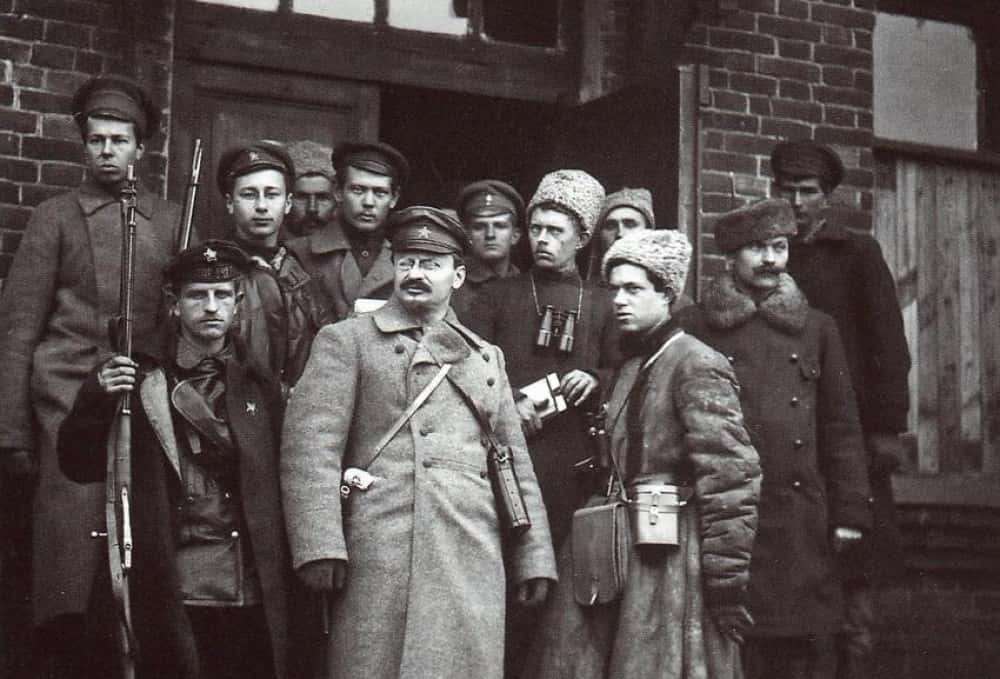 Имперский Казачий Союз
Имперский Казачий Союз
113. General Winter
The Red Army was assisted in its fight against the invading Nazis by a rather unconventional officer corps, playfully referred to as “General Winter.” The Nazis expected to have summarily defeated the Red Army by the fall of 1941, and were completely unprepared for the bitter cold that soon set in while the battles continued to rage.
In fact, Nazi troops were still in summer uniforms in the midst of subzero temperatures, having not deigned to bring winter supplies, and soon faced an epidemic of frostbite.
114. Female Fortitude
The Red Army’s commitment to the communist principles of equality extended to including women in the military. Nearly 1 million Soviet women took up combat roles in the Red Army during World War II, serving as everything from anti-aircraft gunners to tactical snipers to partisan guerillas and fighter pilots.
115. Top Markswoman
Lyudmila Pavlichenko was a female Red Army sniper who is credited as being among the top military snipers in history as well as the top female sniper of all time. Frustrated with the way the war was going, Pavlichenko joined the Red Army soon after the Nazi invasion in 1941, dropping out of the University of Kiev where she had been studying history.
She soon made her mark on the War with an incredible 309 confirmed kills.
 Politika
Politika
116. A Bug's Life
At the beginning of the Battle of Stalingrad (a major World War II battle between the Nazis and Red Army forces) the average Red Army conscript's life expectancy was just 24 hours. If one was lucky enough to be a Red Army officer, your life expectancy ballooned all the way to three days. Well, I guess that's something...
117. Ill Nutrition
The Battle of Stalingrad has lived in infamy as one of history’s most brutal sieges, but new evidence reveals the full extent of the unthinkably dark acts committed during the battle. In his interviews with Red Army soldiers published in The Stalingrad Protocols, German historian Profressor Jochen Hellbeck reveals that during the battle, conditions on the ground were so tough for Red Army soldiers and the local populace that cannibalism was a common occurrence.
Rats also became a major source of protein for many, and horses killed in battle would usually be picked clean for meat. More than that, "Human excrement was piled up waist-high." Despite the inhuman battle conditions, the Red Army eventually defeated the Nazis at Stalingrad, which is considered by many to be the turning point of the War for the Allies.
118. Night Witches
One of the most feared Red Army units during World War II was an all-female unit of pilots who conducted nighttime dive-bombings of German cities in biplanes. To avoid detection, these crafty pilots would cut the engines of their noisy planes before swooping in over a Germany city. This fearsome nocturnal unit was appropriately nicknamed the “Night Witches.”
119. Don't Put Your Feet up
The official motto of modern-day warriors Navy SEALs is “The only easy day was yesterday.” This seems fitting, since their days are almost always filled with brutal tasks, harrowing adventures, and immense tests of endurance and loyalty.
120. Only Because Holodecks Don’t Exist Yet
The legendary SEAL Team 6 helped take down Osama bin Laden. As you might have guessed, it wasn't a walk in the park. To practice for the invasion mission, Team 6 recreated a full-size replica of his compound and practiced over and over again to make sure everything went right. The bin Laden operation was called "Operation Neptune Spear."
 Wikimedia Commons
Wikimedia Commons
121. Carrey on
During filming of The Grinch, Jim Carrey even consulted a Navy SEAL to teach him how to handle psychological and physical hardship in order to withstand his grueling makeup process in the film, which took hours to complete. Or that's the official story—we think he just didn't want to reveal any information about who stole Christmas.
122. Wait for the Drop
Around 75% of SEAL trainees drop out before finishing the program. For us, just thinking about the 128 hours of training during Hell Week is enough to make us want to get back into bed. Or, more accurately, stay in bed.
123. It’s Not Just Any Old Fork
The tridents that Navy SEALS wear on their uniforms are officially designated as the “Special Warfare Insignia.” Nonetheless, they are often called “Budweisers," referring to the Basic Underwater Demolition/SEAL (BUD/S) course. Additionally, the tridents also bear a resemblance to the Anheuser-Busch logo, who are the makers of Budweiser.
124. The Honda Civic of Guns
The Navy SEAL arsenal includes the Russian-made AK-47 due to its reliability in almost all situations.
125. G.I. Jane
Up until 2015, women were not allowed to join the Navy SEALs. After the ban was lifted, one woman tried her luck in training camp in 2017, but dropped out after one week. Someday!
 PxHere
PxHere
126. Dogs of War
The Navy SEAL dog of choice is the Belgian Malinois. These dogs can identify concealed humans and explosives, are extremely fast runners, and can even operate a parachute, which is ridiculous. Good to know that we’d be even less useful than a dog.
127. American Sniper
Chris Kyle was a prominent US Navy SEAL sniper. Kyle had over 150 confirmed kills and many more unconfirmed, which earned him the nickname “The Devil” amongst the Iraqi. In 2012, Kyle released his autobiography American Sniper, and an award-winning film of the same name was released a few years later.
 Wikimedia Commons Cpl. Damien Gutierrez
Wikimedia Commons Cpl. Damien Gutierrez
128. It Ain’t Easy Being Green
Nicknames for the Navy SEALs include “Frogmen,” “The Teams,” and “The Men With Green Faces.”
129. Lone Survivor
After 2005's disastrous Operation Red Wings in Afghanistan, Navy SEAL Marcus Luttrell was the only surviving member of his team. There's no doubt Luttrell went to the very darkest depths of humanity on his mission—but there was even more tragedy in store for him when he got home. In 2009, four years after his return, two hooligans shot and killed Luttrell’s therapy dog (his therapy dog!).
Luttrell chased them through three counties to catch them. During his call to 911, he told the operator, “You need to get somebody out here because if I catch them I’m going to kill them.” The perpetrators were charged with animal cruelty, which is way better than the death penalty that Luttrell would have given them had the police not gotten there first.
130. Navy SEALs and the Funky Bunch
Luttrell parlayed his combat experiences into a bestselling book called Lone Survivor, which later became a movie starring Mark Wahlberg.
 Getty Images
Getty Images
131. A Spoon Would Hurt More
During his interview with NASA, Bill Shepherd, a Navy SEAL who became an astronaut, was asked what he was best at. His answer: “Killing people with a knife.”
132. Face Time
The nickname “The Men With Green Faces” was given to the SEALS by the Viet Cong during the Vietnam War because they would wear green camouflage paint to blend in.
133. Warrior Queen
Boudicca was a Celtic queen of the Iceni tribe who led an uprising against the occupying Roman Empire around 60 AD when their lands were taken by the Romans and they were no longer treated as allies. Indeed, after Boudicca's husband died, the Romans sensed the power vacuum, took her lands, and assaulted her and her daughters.
Not one to sit back and let the Romans walk all over her, Boudicca went on the attack. She was eventually defeated in the Battle of Watling Street, but not before causing catastrophic damage to her enemies, killing 80,000 roman soldiers.An inspiration to the British for millennia, Boudicca is still remembered as an ideal image of a warrior queen.
134. She’s Kind of Scary
Based on descriptions of Boudicca by ancient historians, she was a pretty terrifying figure. She was described as being of above average height, having a “piercing gaze,” waist-length fire-red hair, a harsh voice, and possessing a “greater intelligence than often belongs to women.” OK, not the greatest compliment, but from an ancient historian, that was about as good as it gets for a woman.
135. Using Her Smarts
According to some historians, the main reason that Boudicca was able to accomplish as much as she did was because of her keen intelligence. I’m sure that this wasn’t the only reason, but could an idiot have rallied and led an army well enough to level three Roman cities and kill 80,000 Romans? Probably not!
 wired
wired
136. Women Rule!
Boudicca’s legend was seen by the Romans as a cautionary tale for what happens when women are allowed to rule, but two British queens took a different view of the story. In the 16th century, Queen Elizabeth I used it to solidify her own rule and to demonstrate that a strong British Queen fighting a foreign power wasn’t without precedence. In the 19th century, Queen Victoria saw herself as her namesake, and also used the story as proof of her own right to hold power.

137. Lesson Learned
When Boudicca launched her rebellion, the Romans were basically caught with their pants down, but nobody can say they didn’t take anything away from it. They swore that they’d never allow anything like Boudicca’s massacre to happen again, and after her defeat, they took steps to strengthen their settlements and protect themselves against any possible future uprisings. Fool me once, right?
138. Chicken or Egg?
How Boudicca died still remains something of a mystery. According to Tacitus, she swallowed poison when she realized that she had no chance of winning the final battle, but Dio suggested that she was sick. On the other hand, it has also been suggested that if she was sick, it could have been from the poison, so it kind of brings everything full circle.
139. Fate Worse Than Death
Though nobody knows exactly what happened to Boudicca and her daughters after the defeat, historians generally agree that however they died, it was better than what would have happened if they’d been captured by the Romans. First, they would have been marched through the streets in a Roman victory parade, and then they would have been tortured and had their bodies displayed for the crowds.
 youtube
youtube
140. Uncharacteristic Ornament
Celtic warrior chieftains of the time wore a piece of jewelry known as torque (torc) around their necks. The necklace was a metal band made most often with twisted strands of gold and decorative knobs at the throat. The necklace wouldn’t have typically been worn by a woman, but if one historian's description of Boudicca is accurate and she did wear one, it was a pretty major statement of her power.
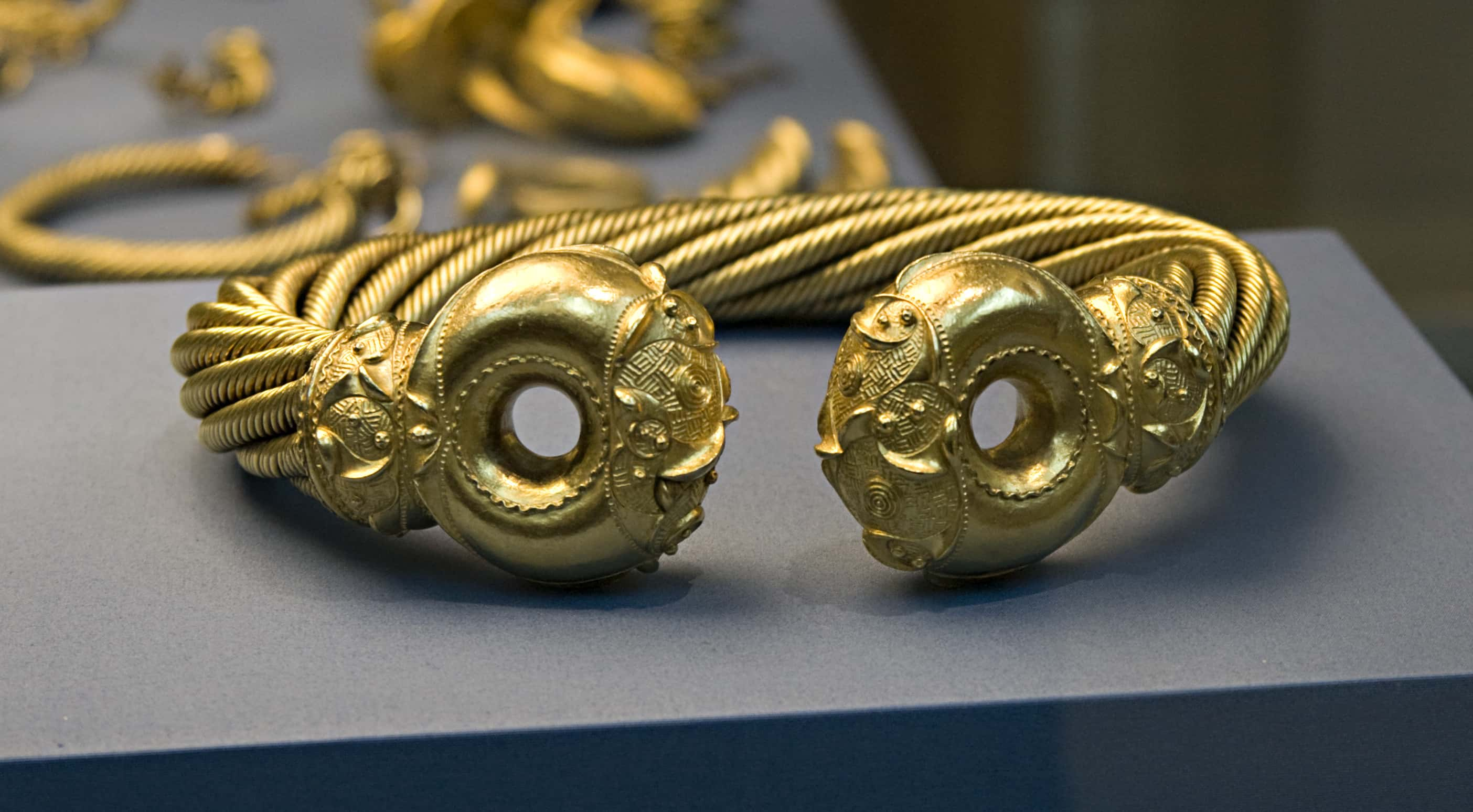 sl.wikipedia
sl.wikipedia
141. Them’s Fighting Words
Before leading her troops to battle, Boudicca reportedly gave a rousing speech worthy of Braveheart. She said: “I’m not fighting for my kingdom and wealth. I am fighting as an ordinary person for my lost freedom...Consider how many of you are fighting—and why. Then you will win this battle, or perish. That is what I, a woman, plan to do! Let the men live in slavery if they will."
142. Blue-Man Group
Celtic warriors were described as being tall and muscular, and at least a head above their Roman enemies. This alone would have made them look pretty imposing, but they also loved grandstanding, and would often paint themselves with a blue dye to look even more scary. The showboating didn’t stop the Romans, but you’ve got to give them points for style.
143. Brevity Is the Soul of Sparta
King Philip II of Macedon, Alexander the Great's father, once campaigned against the Greek city-states. Having conquered most of southern Greece, he sent a message to Sparta, which read, “You are advised to submit without further delay, for if I bring my army into your land, I will destroy your farms, slay your people, and raze your city.” The Spartans, in characteristically terse fashion, replied with a single word: “If.”
Suffice it to say, Philip did not attack Sparta.
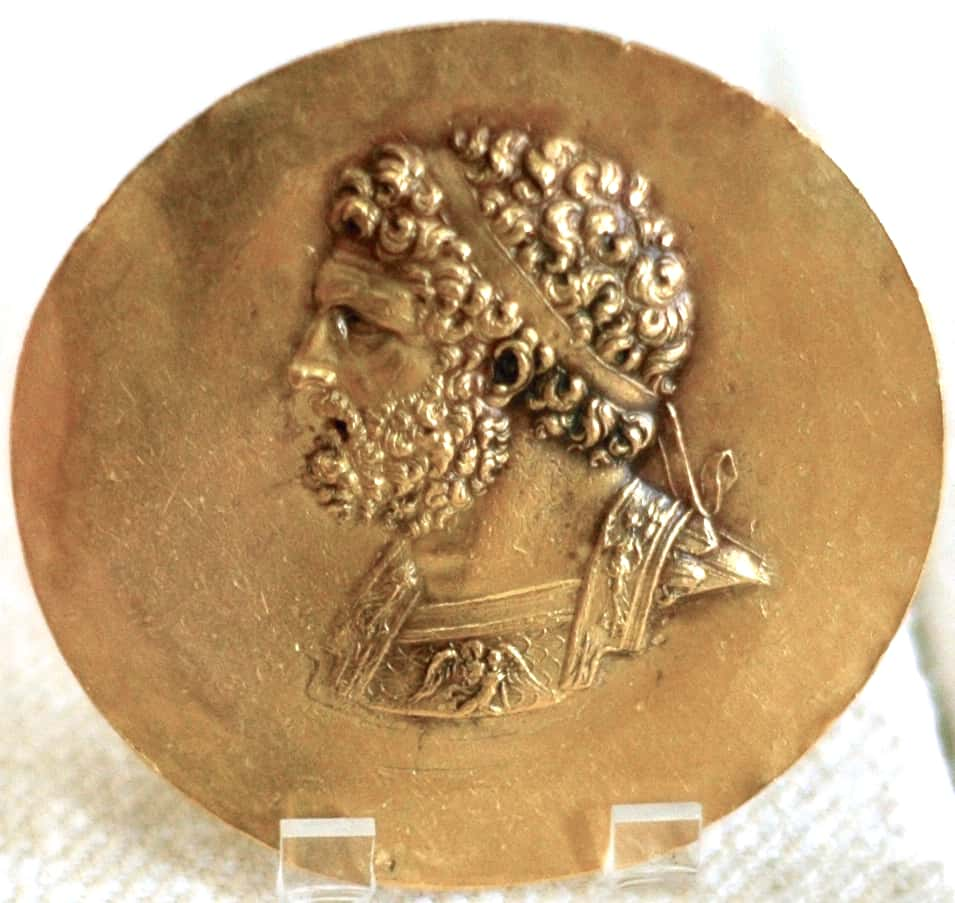 Wikimedia Commons
Wikimedia Commons
144. Cause of Death Unknown
To this day, the exact cause of Alexander the Great’s death is unknown. In 323 BC, he became ill after drinking a bowl of wine at a party, and two weeks later, he died. His father King Philip had died at the hand of an assassin, and people began to suspect that Alexander himself had been poisoned. Naturally, the people surrounding Alexander became immediate suspects.
Poison or not, as best as modern science can discern, the most likely causes of death could have been malaria, lung infection, typhoid fever, or liver failure.
145. Up for Grabs
But the plot thickens: When his father was assassinated back in 336 BC, some circles suspected that Alexander and his mother actually had a hand in his stabbing. With the throne now free for the taking, Alexander quickly eliminated any other enemies who stood in his path, murdering all other potential heirs to the throne with the help of his army.
His mother Olympia, meanwhile, helped Alexander’s quest by then killing King Philip’s daughter and leading his wife Cleopatra to commit suicide. In this case, maybe Alexander got what was coming to him in the end.
 Wikimedia Commons
Wikimedia Commons
146. Bad Knight
Although knights were portrayed as chivalrous Sir Lancelot types, the truth is that many knights were bad men with swords. In 1379, Sir John Arundell rode to a convent, looted the nunnery, stormed a nearby church, kidnapped and raped a newlywed bride, before topping it all off by taking the nuns out the sea and tossing them overboard.
147. So Many Titles, So Little Time
King Richard I is one of the most famous knights in history. He’s most known today as Richard the Lionheart, but also would have answered to the French "Richard, Coeur de Lion."
148. The King Is Dead
Richard died at only 41 years old after a crossbow bolt snagged his left shoulder in 1199 during a castle siege. Once the bolt was ripped out, the wound quickly became infected. He died just two days later—but his beloved mother Eleanor was able to make it to the site to see him before he ultimately passed. He died in her arms.
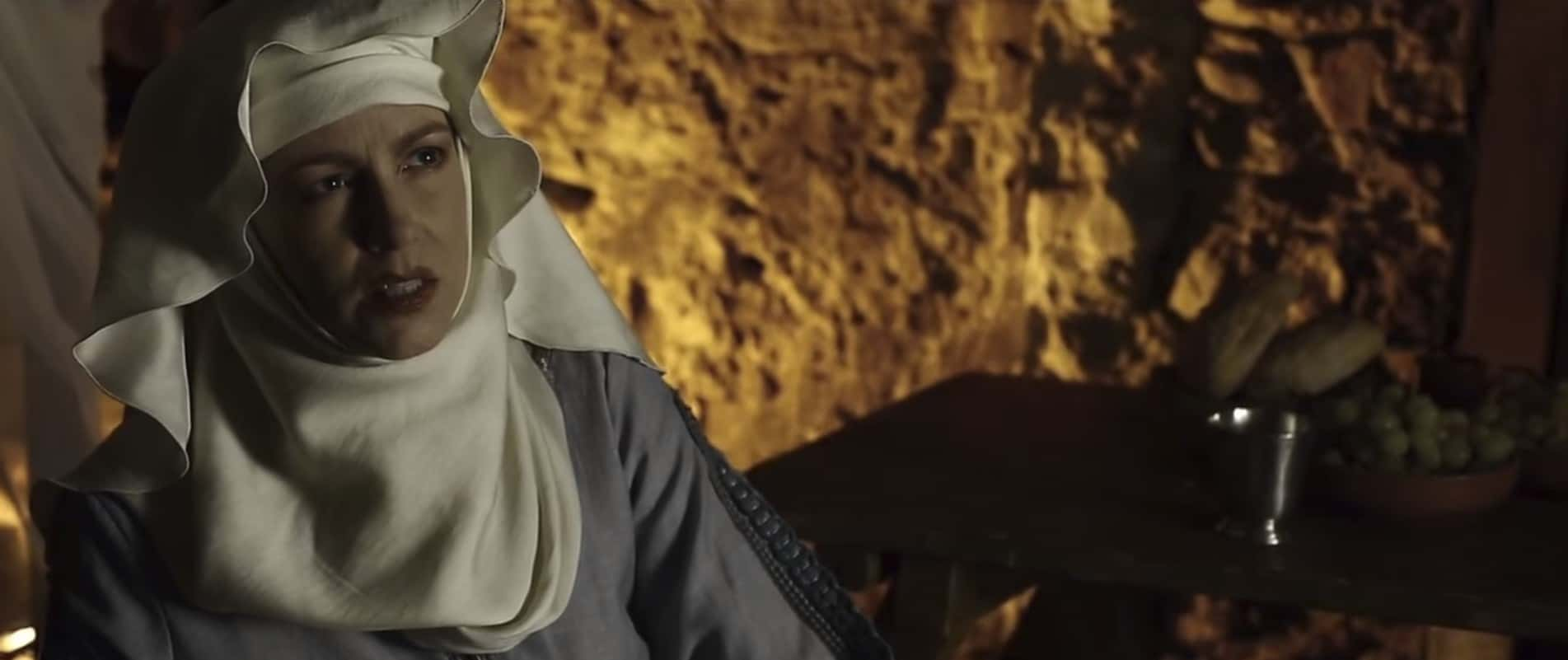 Youtube
Youtube
149. One Can Forget, if the Dead Do the Forgiving
Before his death, Richard summoned the man who had shot him; he turned out to be a mere boy. When asked why he had shot the King of England, this mere boy spat out that Richard had killed his father and brothers, and he was seeking his revenge. He thought he was facing certain execution, but Richard's final words to him were an act of mercy.
"Live on, and by my bounty behold the light of day," the King said, forgiving the boy and sending him away with 100 shillings. Tragically, Richard's royal pardon may have been immediately betrayed: one source reports that a vicious captain named Mercadier went against the King's wishes, flaying the boy alive and hanging him in revenge.
150. An American Tragedy
Chris Kyle, AKA the "Devil" SEAL sniper with 150 confirmed kills, gained some fame after his 2012 autobiography American Sniper. But he would have precious little time to enjoy his success: in 2013, Eddie Ray Routh, a young, mentally unstable Marine veteran, shot and killed Kyle and his friend Chad Littlefield. Kyle and Littlefield had driven Routh to a gun range, an activity they decided on as a way to help alleviate Routh's PTSD.
 Getty Images
Getty Images
151. Mea Culpa
When he was questioned about his motives for the cold-blooded killings, Routh's response was utterly disturbing. Sitting in a jail cell four months after the murders, Routh confessed, "I was just riding in the back seat of the truck, and nobody would talk to me. They were just taking me to the range, so I shot them. I feel bad about it, but they wouldn't talk to me. I’m sure they've forgiven me." In 2015, Routh was convicted for the tragedy and sentenced to life in prison.
 Getty Images
Getty Images
152. Scorn in the Face of Death
During the Second World War, the Netherlands was occupied by Germany. Many Dutch people began a Resistance against the Germans, including one Hannie Schaft. She helped Jewish people get their hands on fake IDs until she was arrested and sentenced to death. When the firing squad failed to kill her with the first round, she scornfully declared “I could shoot better!” Why she doesn’t have a movie about her based on those last words alone is beyond us.
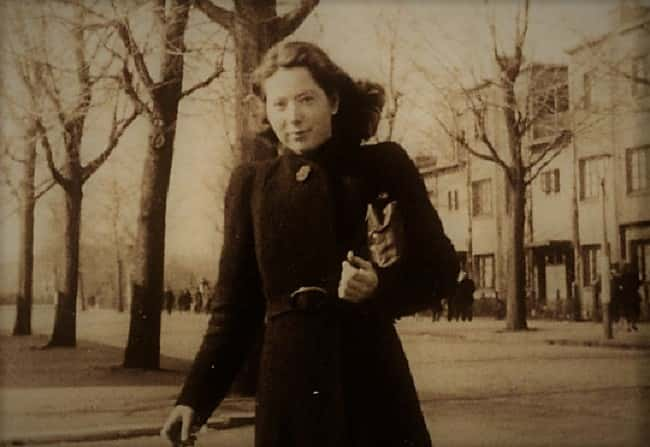 alexandrina.nl
alexandrina.nl
Sources: 1, 2, 3, 4, 5, 6, 7, 8, 9, 10, 11, 12, 13, 14, 15, 16, 17, 18, 19, 20, 21, 22, 23, 24, 25, 26, 27, 28, 29, 30, 31, 32, 33, 34, 35, 36, 37, 38, 39, 40, 41, 42, 43, 44, 45, 46, 47, 48, 49, 50, 51, 52, 53, 54, 55, 56, 57, 58, 59, 60, 61, 62, 63, 64, 65, 66, 67, 68, 69, 70, 71, 72, 73, 74, 75, 76, 77, 78, 79, 80, 81, 82, 83, 84, 85, 86, 87, 88, 89, 90, 91, 92, 93, 94, 95, 96, 97, 98, 99, 100, 101, 102, 103, 104, 105, 106, 107, 108, 109, 110, 111, 1112, 113, 114, 13, 115, 116, 117, 118, 119, 120, 121, 122, 123, 124, 125, 126, 127, 128, 129, 130, 131, 134, 135, 136, 137, 138, 139, 140, 141, 142, 143, 144, 145, 146, 147, 148, 149, 150, 151, 152, 153, 154, 156, 157


